The Millenium of Black Euphoria is a celebration of the past, present and future of African ancestral heritage. Highlighting the commonalities— and differences— between West African, Caribbean and Black western cultures, the exhibition explores the hybridity of blackness and ultimately offers a reimagined afro-futuristic take on the black aesthetic and the spiritual influences that inform it.
Central to 2000 & Black will be an exploration of how hair functioned as an extension of spirituality in pre-colonial Africa. In this era, hair was believed to be a portal to an interior spiritual power and was used as a tool of sacral and spiritual strength. During the atlantic slave-trade, the hair of african people was shaven— just one of many instances of identity erasure that now manifest as post-traumtatic slave syndrome and black trauma. Despite this, natural hair in the form of the afro became a symbol of resistance and pride in the 60’s, with the term ‘Crown’— a popular reference to afro hair— coming to symbolise self-empowerment. Unfortunately, institutional bias against black hair persists till this day, which is why it remains important to provoke change and to tell stories that give voice and visuals to the artistic expression of queer black creatives. It is hoped that— as a multi-disciplinary exhibition— 2000 & Black will function as an ideal medium through which to achieve this.
Moreover, before western influence made its way to West Africa, the cultural practices of the Igbo and Yoruba tribes that are, mostly, found in present day Nigeria did not adhere to the gender binary that is widely recognised today. Typically, they did not assign babies with a specific gender at birth, instead waiting until later in life to determine an individual’s gender. The fluidity of gender and the absence of gendered stereotypes among pre-colonial communities was common in West Africa, despite the onus that is placed on binary gender roles in today’s societies.
In Igbo culture, for example, Chineke is regarded as a godly, supreme consciousness, an omnipotent form of energy that, in pre-colonial times, was seen as neither he nor she, but rather as an entity that harnesses both masculine and feminine energies. When considering the present day frictions located at the point of intersection between African, Caribbean and queer identities, it is important to remember the practices that coloured the ancestral pasts of these communities so as to re-build the channels of communication and understanding that have long been obstructed by the exclusion, persecution and erasure of queer identities.
The development and evolution of the sociological and psychological issues with which queer members of the African and Caribbean diasporas are— and have been— faced are interwoven within their expressions of creativity through strong visual demonstrations of how they have learned to live through the struggles they have encountered. Oftentimes this can be expressed through confrontation, such as the wearing of a weapon of armour in protest against mainstream-western fashions. Fashion practitioners from the African diasporas communicate their origins and social experiences by re-imagining trends appropriate to their lifestyle, re-invented culture and habitat— perhaps allowing them to access a sense of peace, resolve, or resistance.
2000 & Black aims to empower the spectator and invites the wider community to be active participants in this immersive exhibition. It is hoped that spectators will openly receive the compelling stories and experiences with a sense of intrigue and familiarity as they joyfully journey through the many layers of black identity.
ALL EXHIBITED DIGITAL WORK
ANANSI, OLD WITCH AND KING DAUGHTER
X
TIM TIM
X
TIM TIM
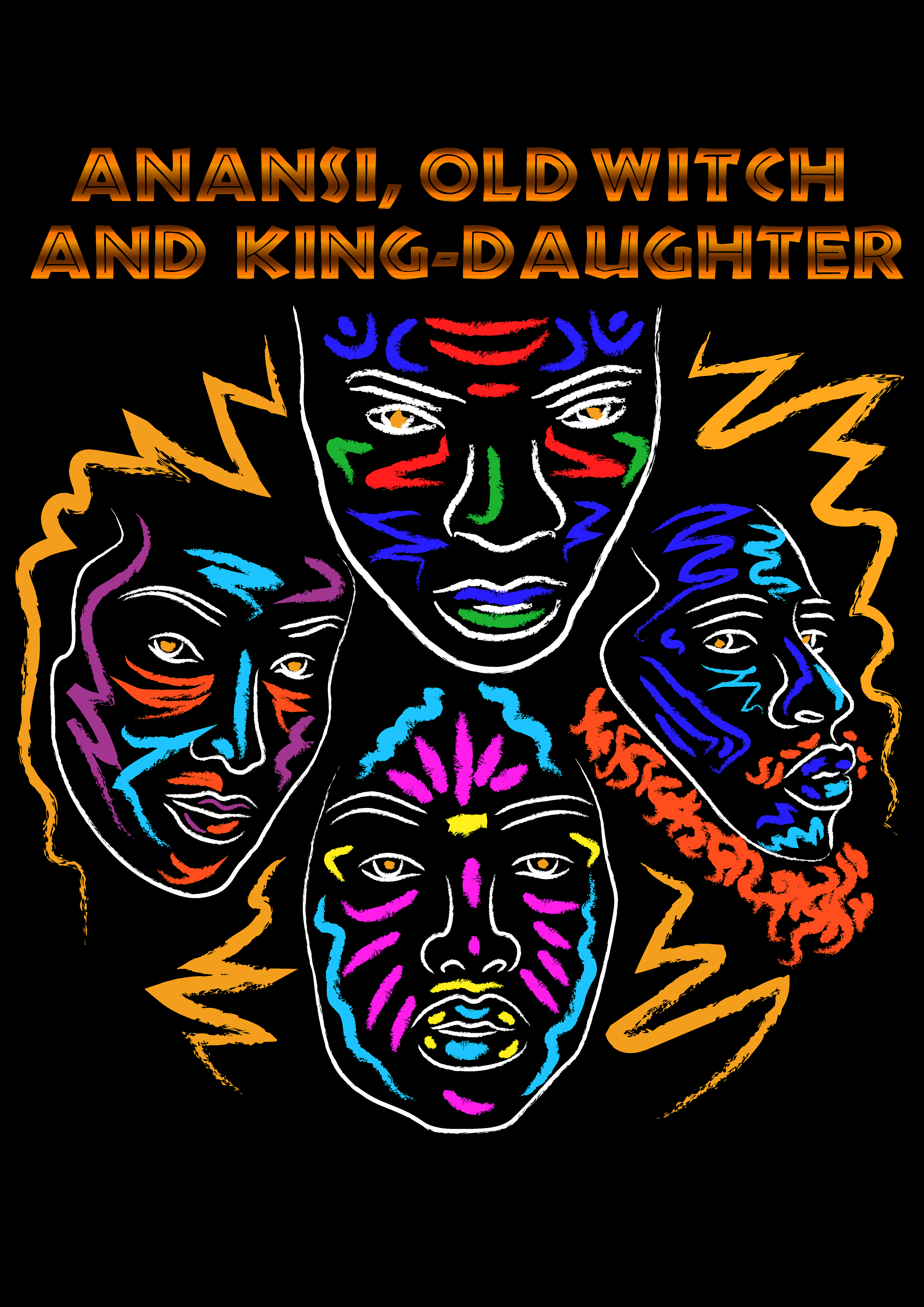
TimTim Akena Title: Anansi, Old Witch and King-Daughter For this piece, Tim-Tim focused on an illustration which allowed her to expand and experiment with form and colour and move away from any anal aesthetic. She enjoys working with vibrant colours, especially within this series as it binds the cultural aspects of this tale. Anansi is a very important character within West African Folklore. Known as a trickster, he can shapeshift between human and spider form. In this story, Anansi is in a bid to win the Old Witch and King-Daughter’s hand in marriage, by discovering her name, but does so with trickery and has to pay the ultimate price. Displaying her retelling of the original story By James Berry, Tim-Tim adds new additional twists and depths to the story. Digital art, 2022

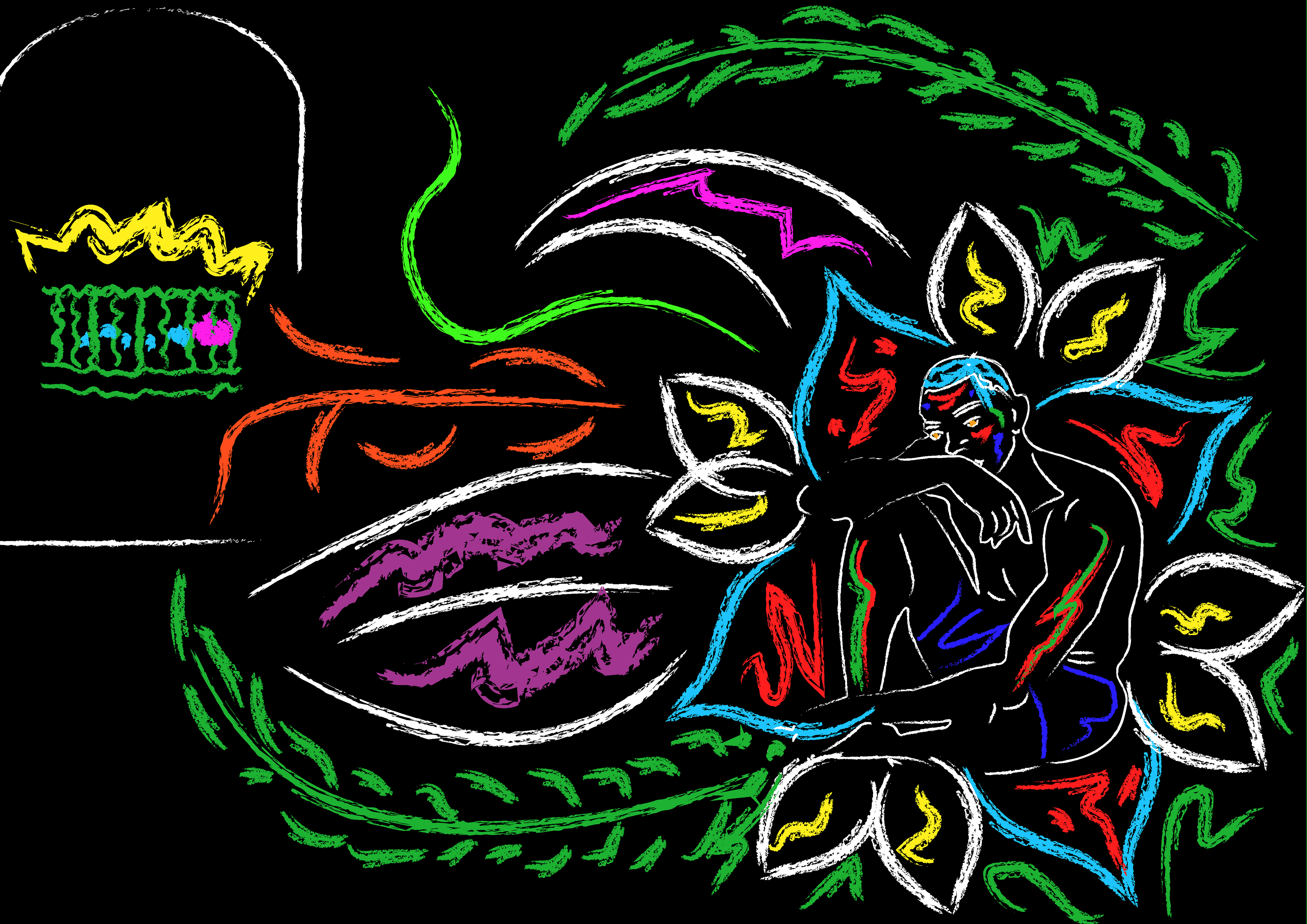
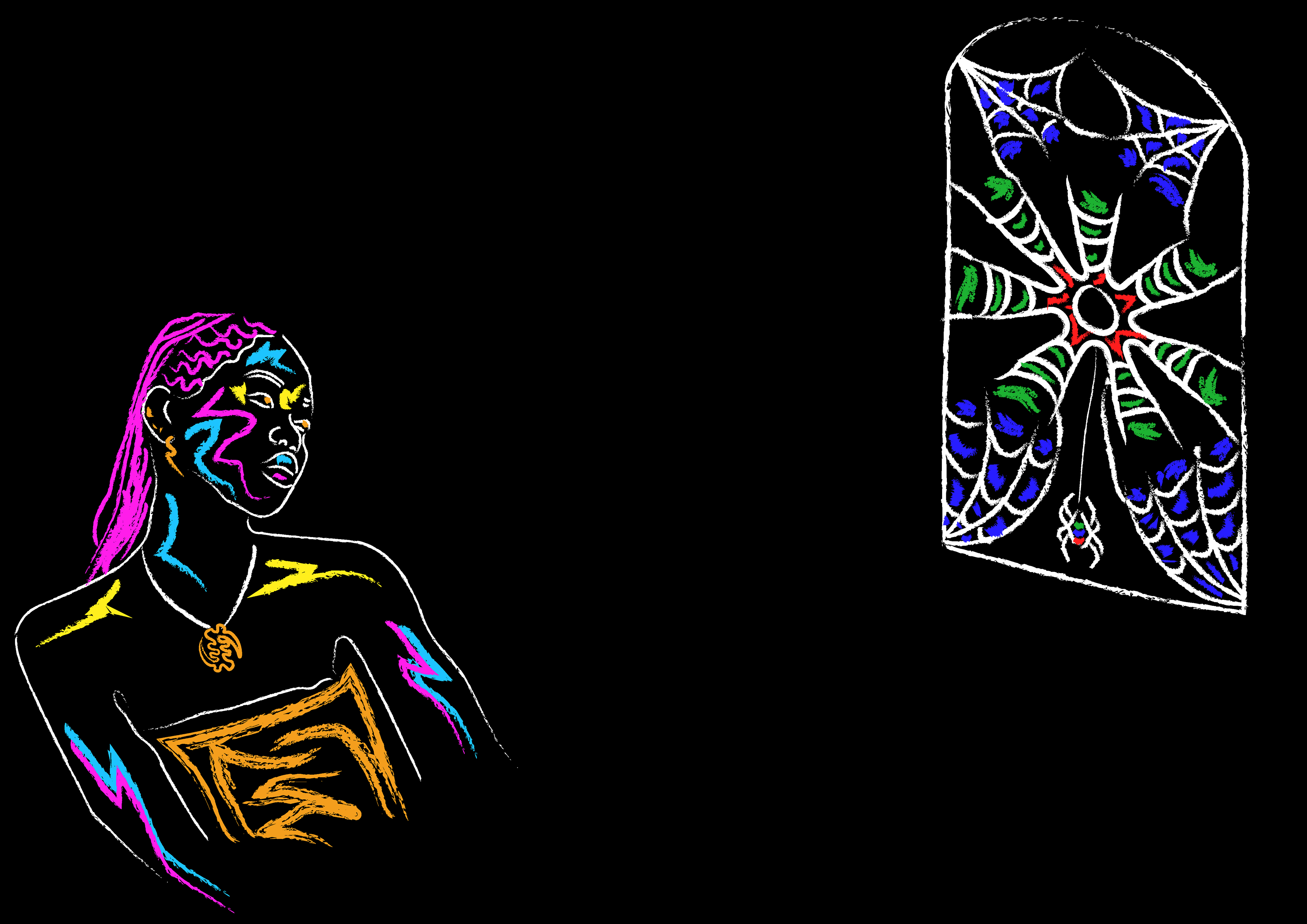
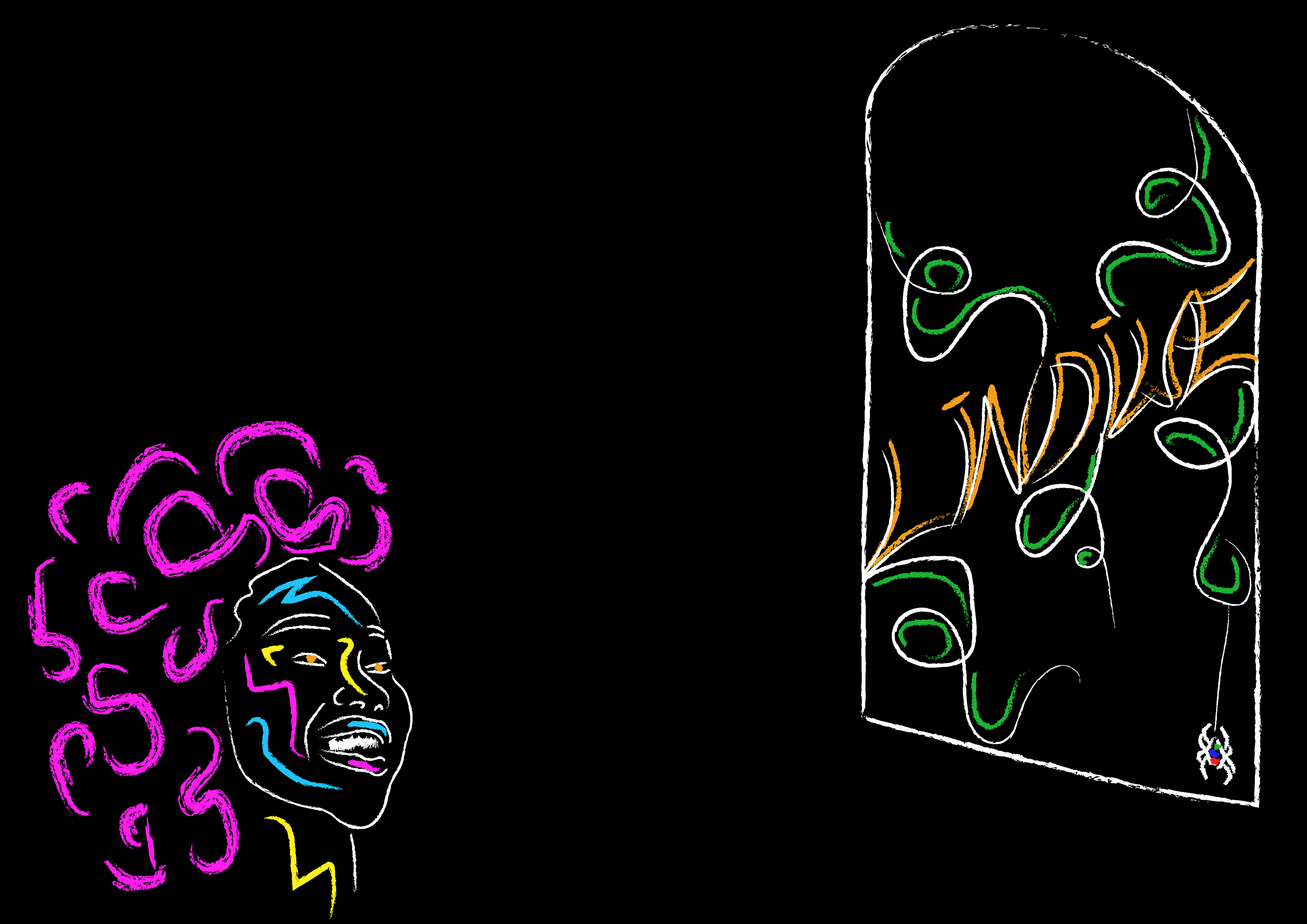
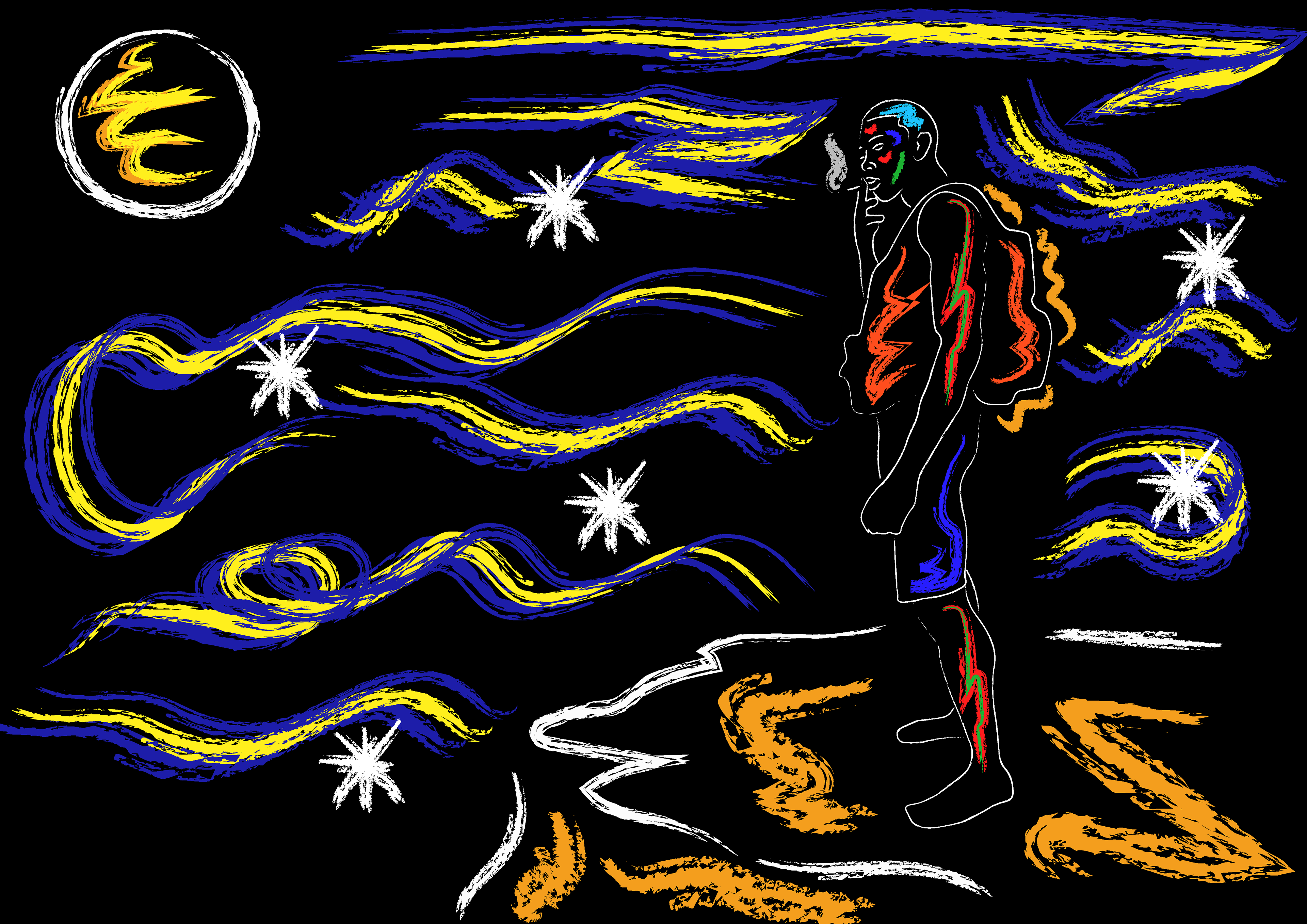
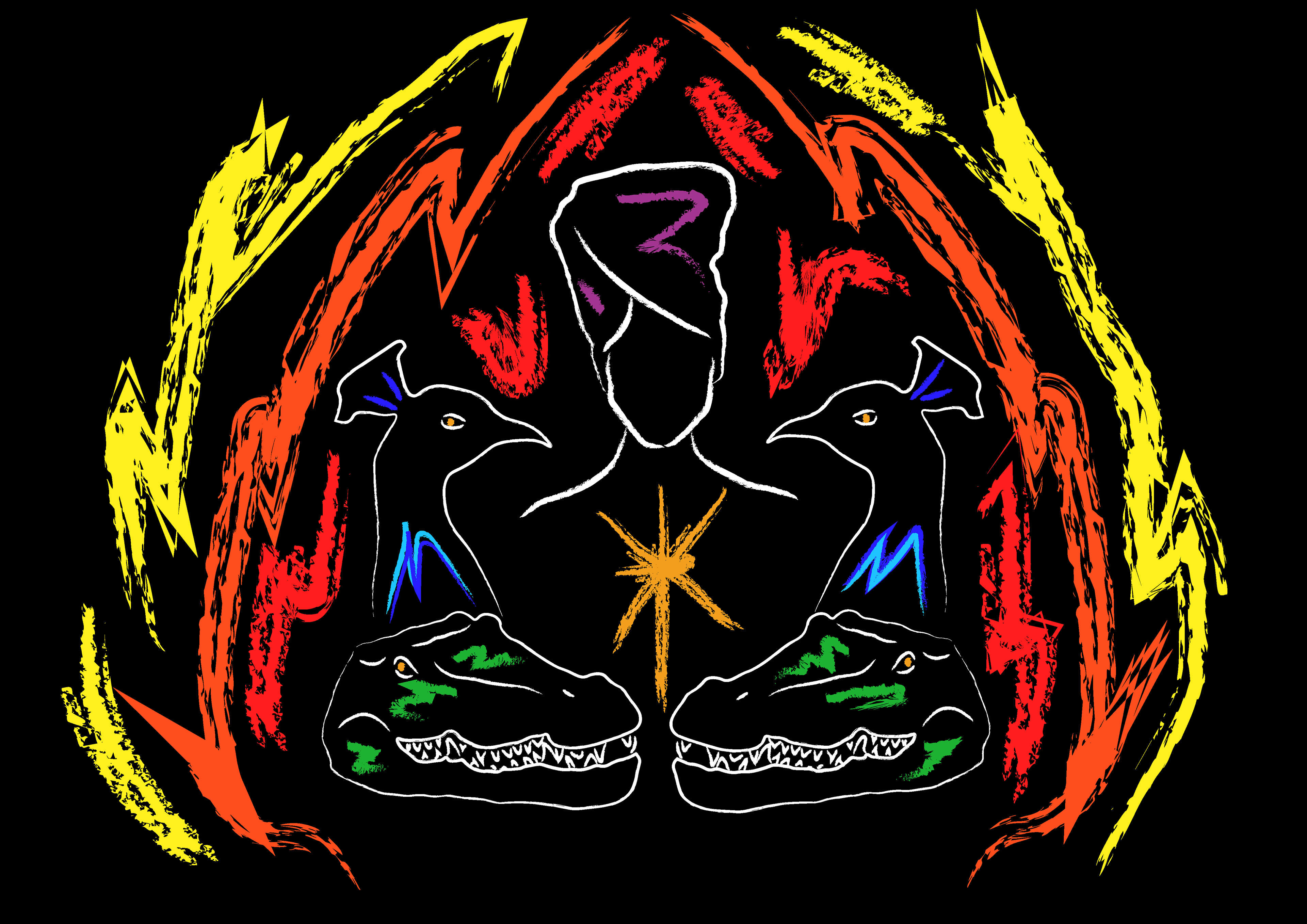
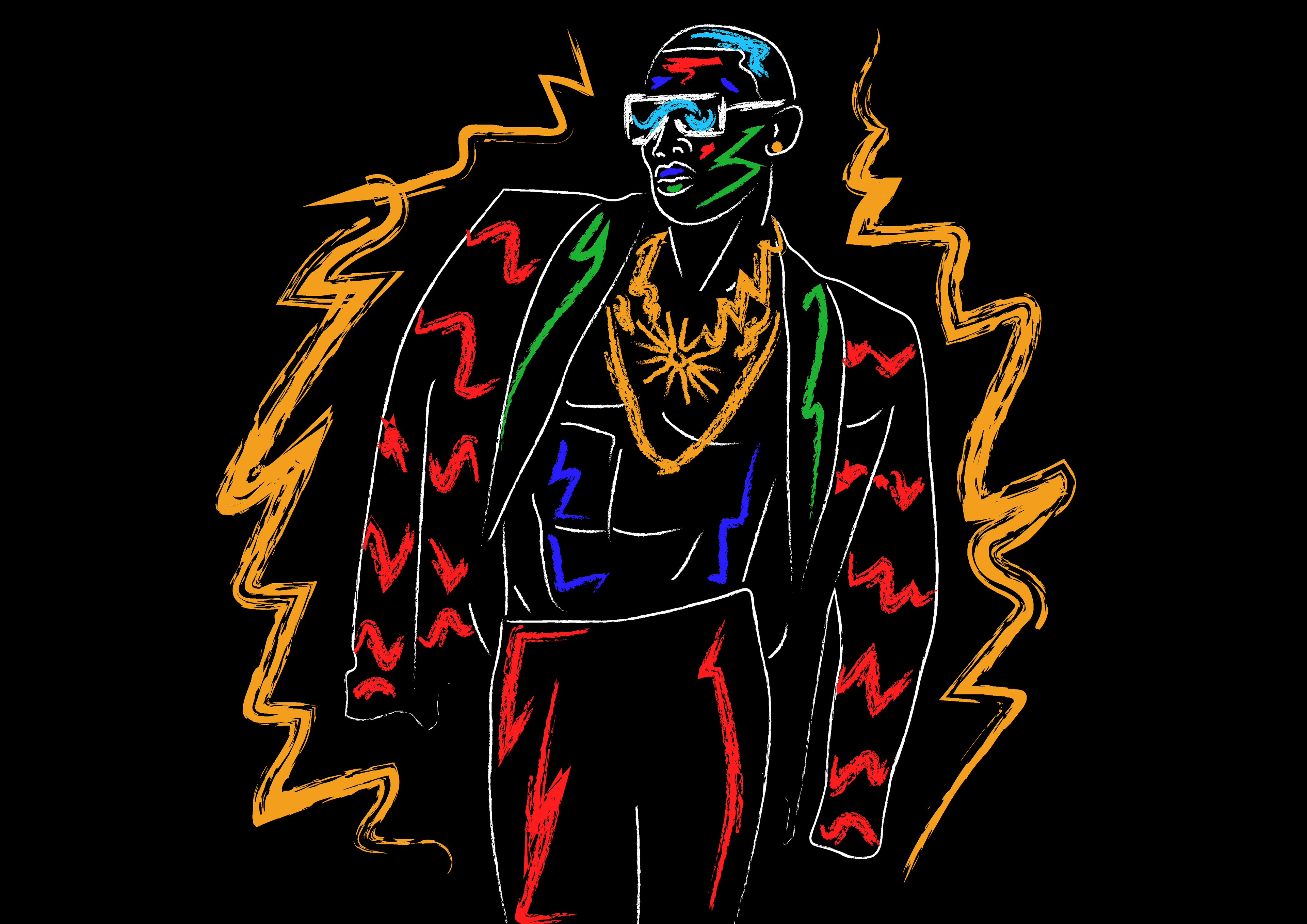
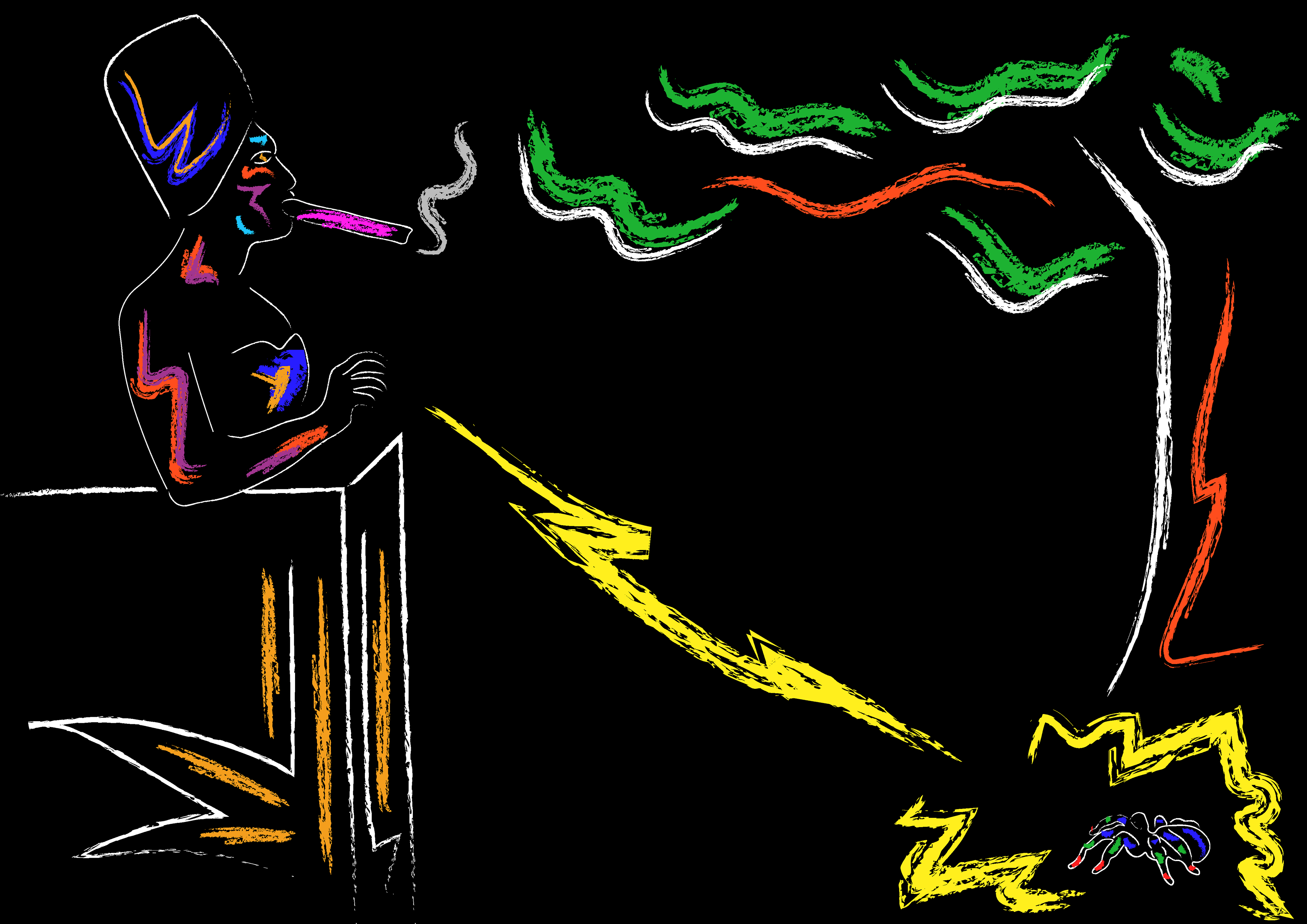
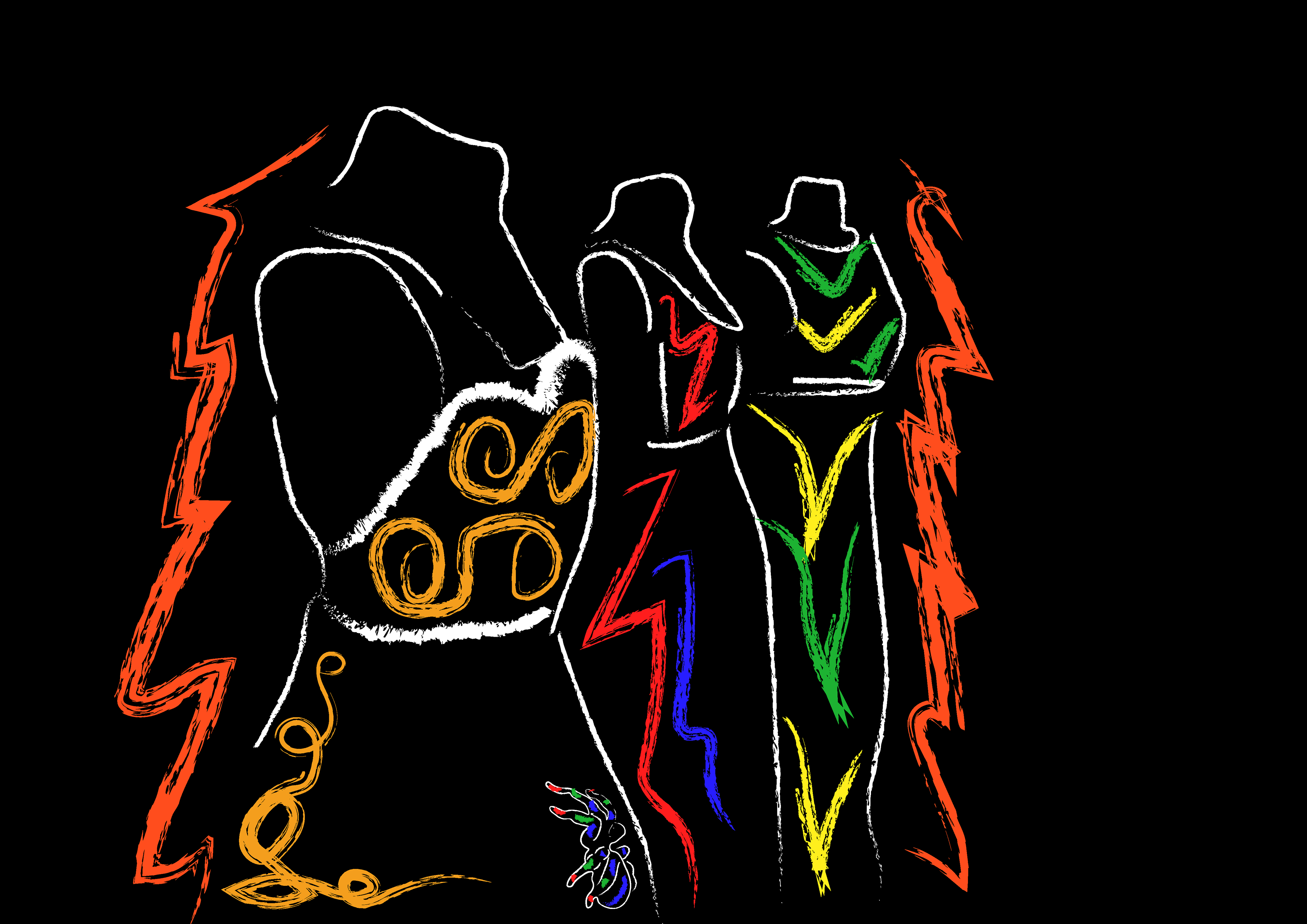
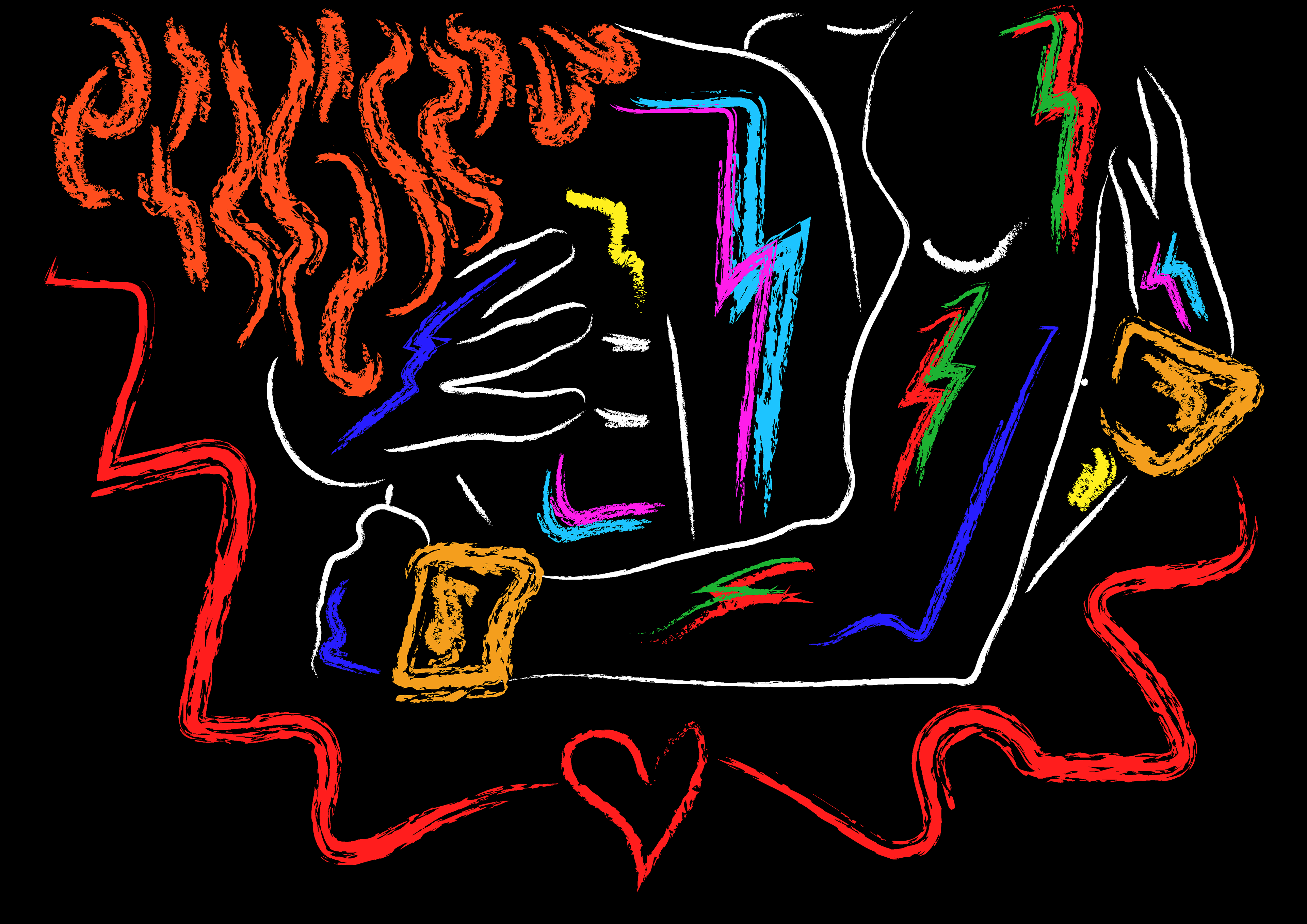

The Garden of EDEN
X
MSSHAKARA
X
MSSHAKARA
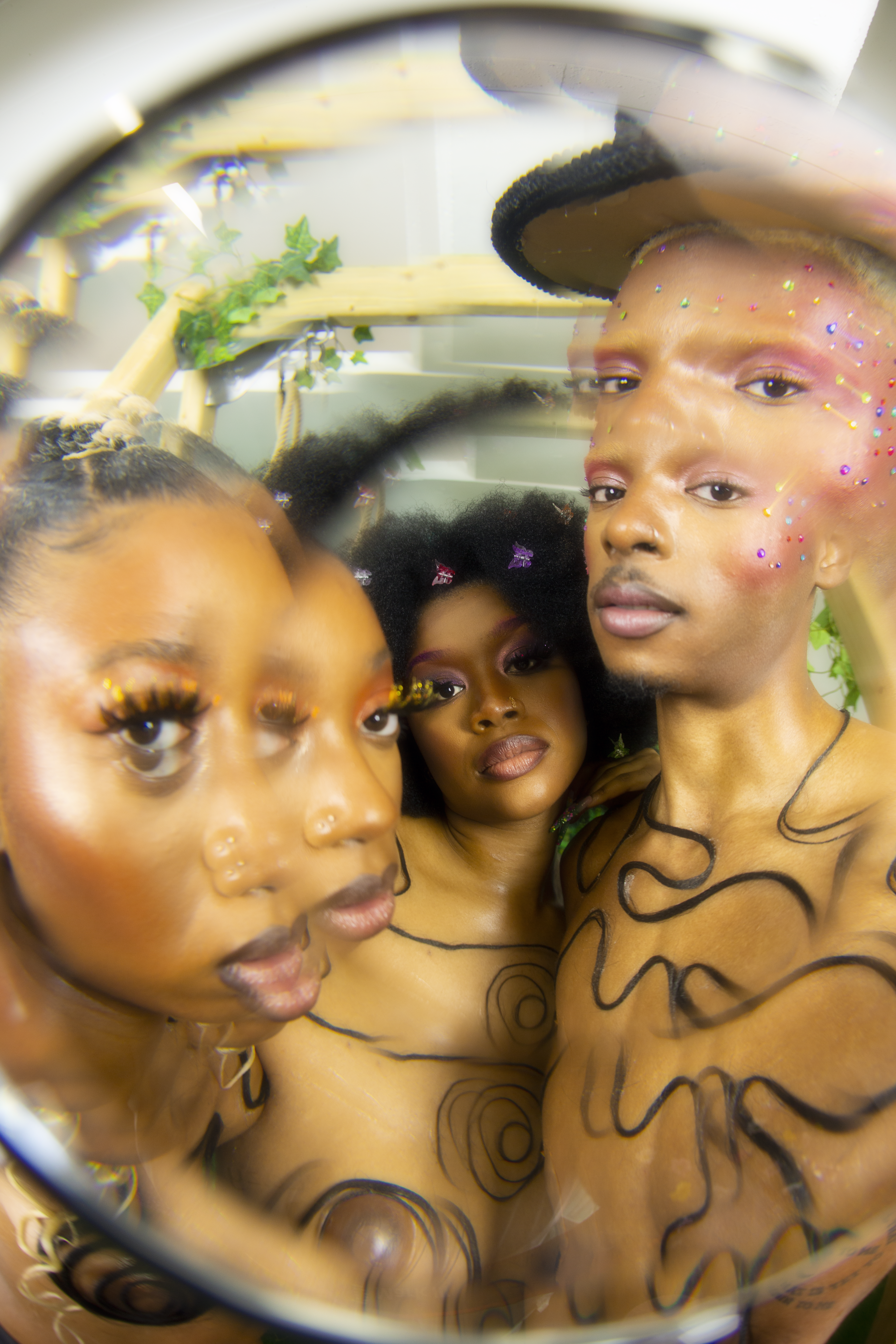
Msshakara Titel: Garden of Eden In Abrahamic religions, the Garden of Eden or Garden of God, also called the Terrestrial Paradise, is the biblical paradise described in Genesis 2-3 and Ezekiel 28 and 31. The real Garden Of Eden has been traced to the African nation of Botswana, according to a major study of DNA. Scientists believe our ancestral homeland is south of the Zambezi River. This is a surreal, whimsical depiction of how msshakara views black hair, Afro’s being beautiful bouquets, braids mimic roots, beads are little bulbs, and dramatic edges are extensions of a bark. Msshakara’s view on black hair is fruitful and fertile, a delicate organism that needs to be treated with care. with references loose references to SZA good day and Crazy by Doechii. Digital Photography, synthetic hair, artificial flowers, 2022
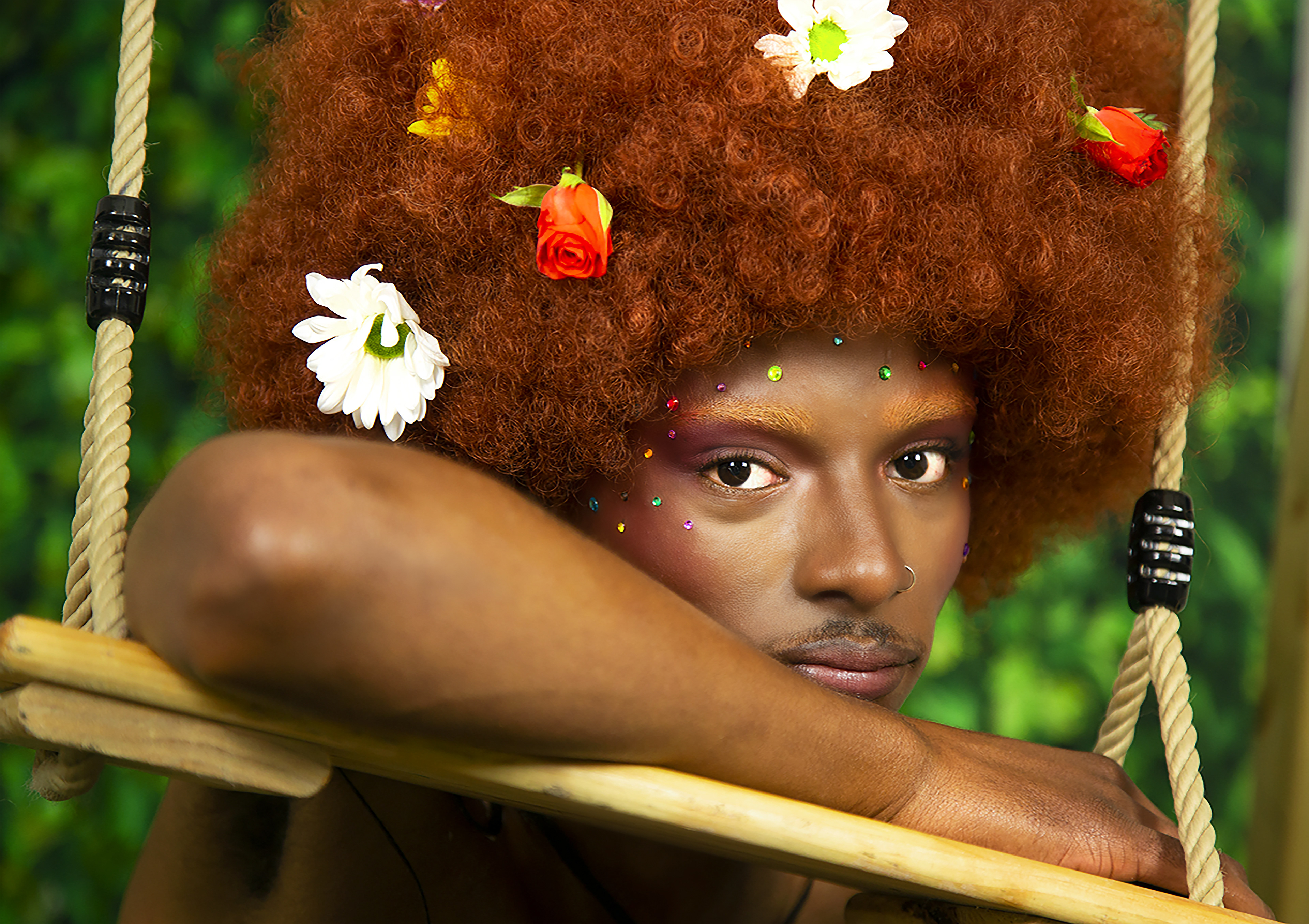
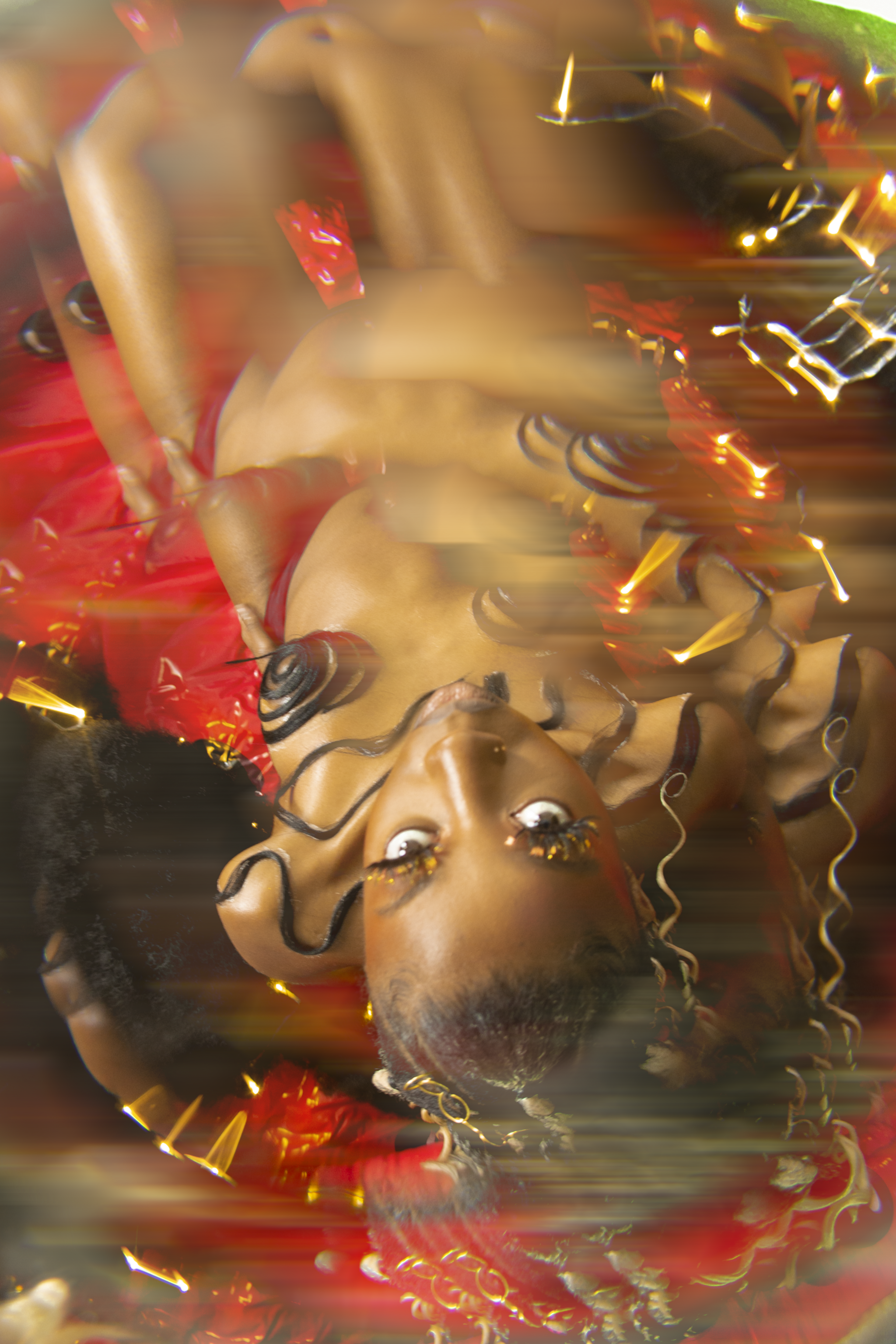
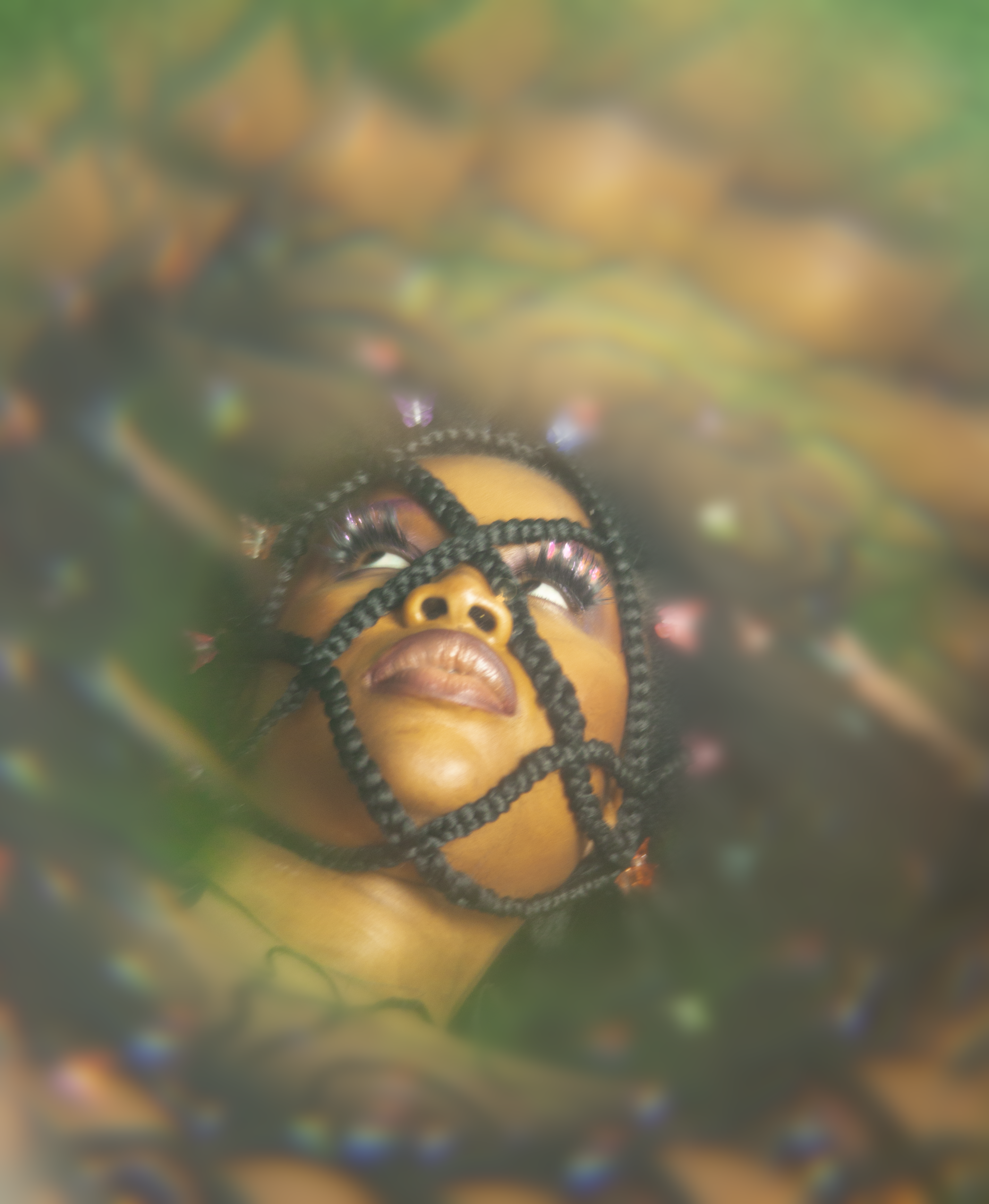
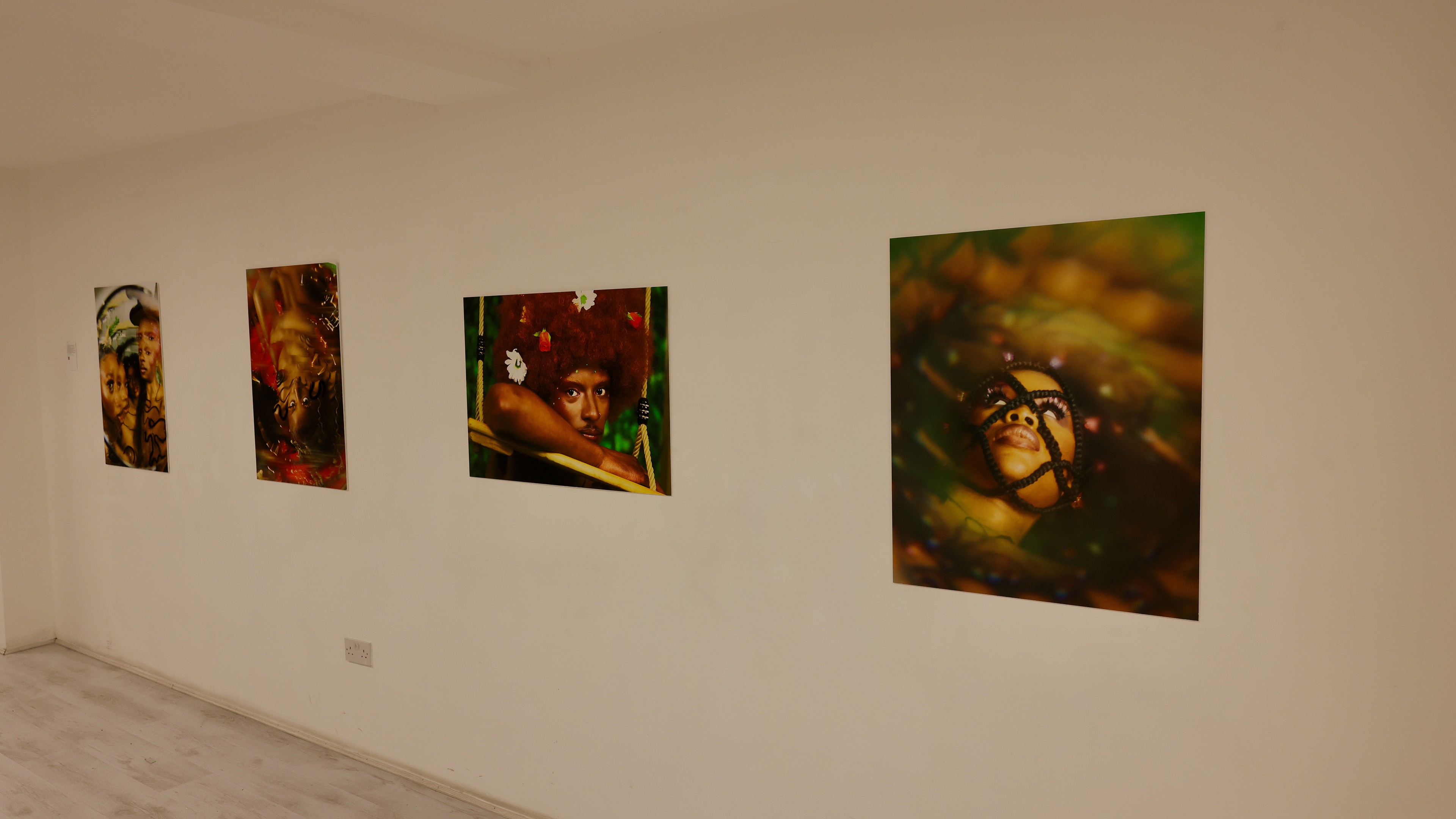
MUVA TÉ
X
ZARA NELSON
X
ZARA NELSON
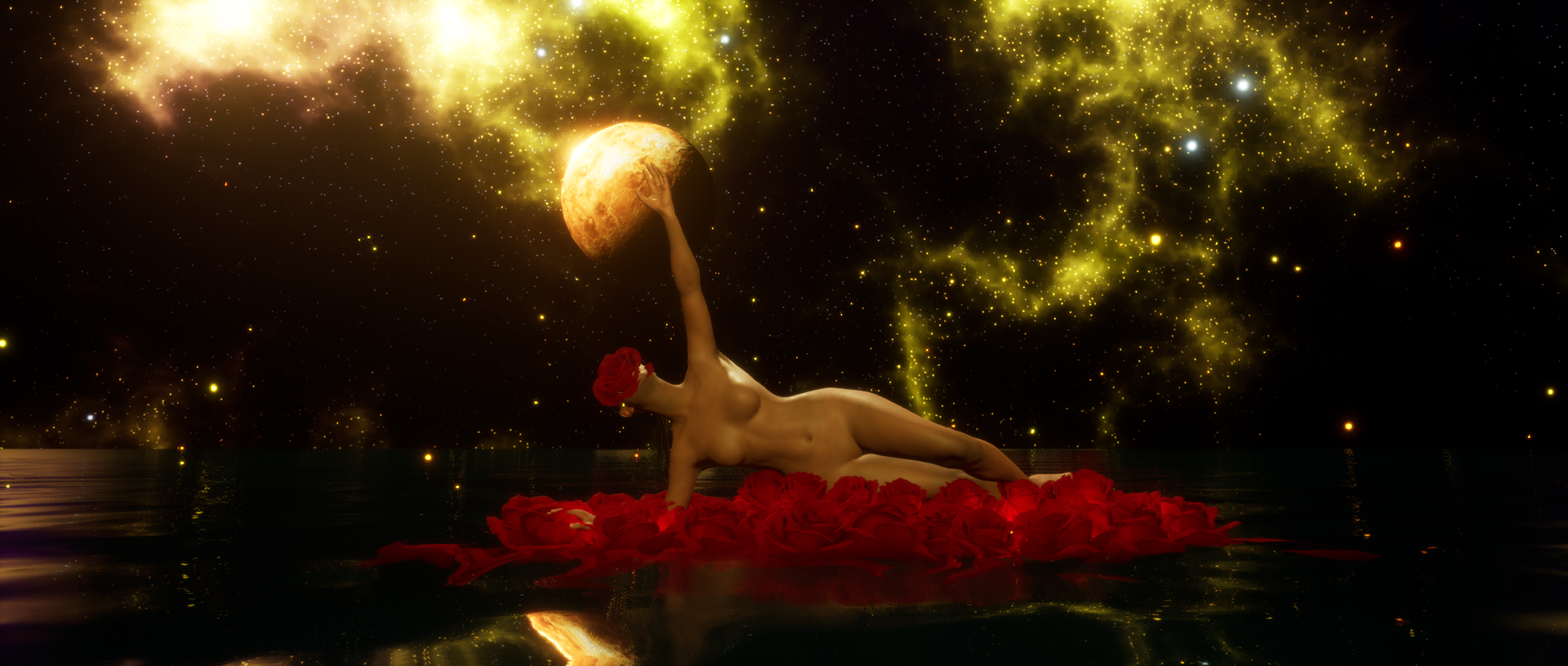
Zara Nelson Title: Muva Te These pieces represent the struggle of being a black woman in this world. Black Women have been subjected to Racism and being voiceless in and out of the workplace. These pieces are inspired by the lotus flower in Buddhism. The lotus flower is associated with purity, spiritual awakening, and faithfulness. It grows and blossoms in murky waters. Black women are born in a world full of suffering (Murky water). Despite all the suffering black women experience, they can be proud of themselves, support one another, and be beautiful in and out. Roses are used instead of lotuses because roses are a symbol of the human soul and the scent of roses reminds them of their spirituality other religions view it as eternal love and joy. 3D Sculpting, motion graphics, 2022
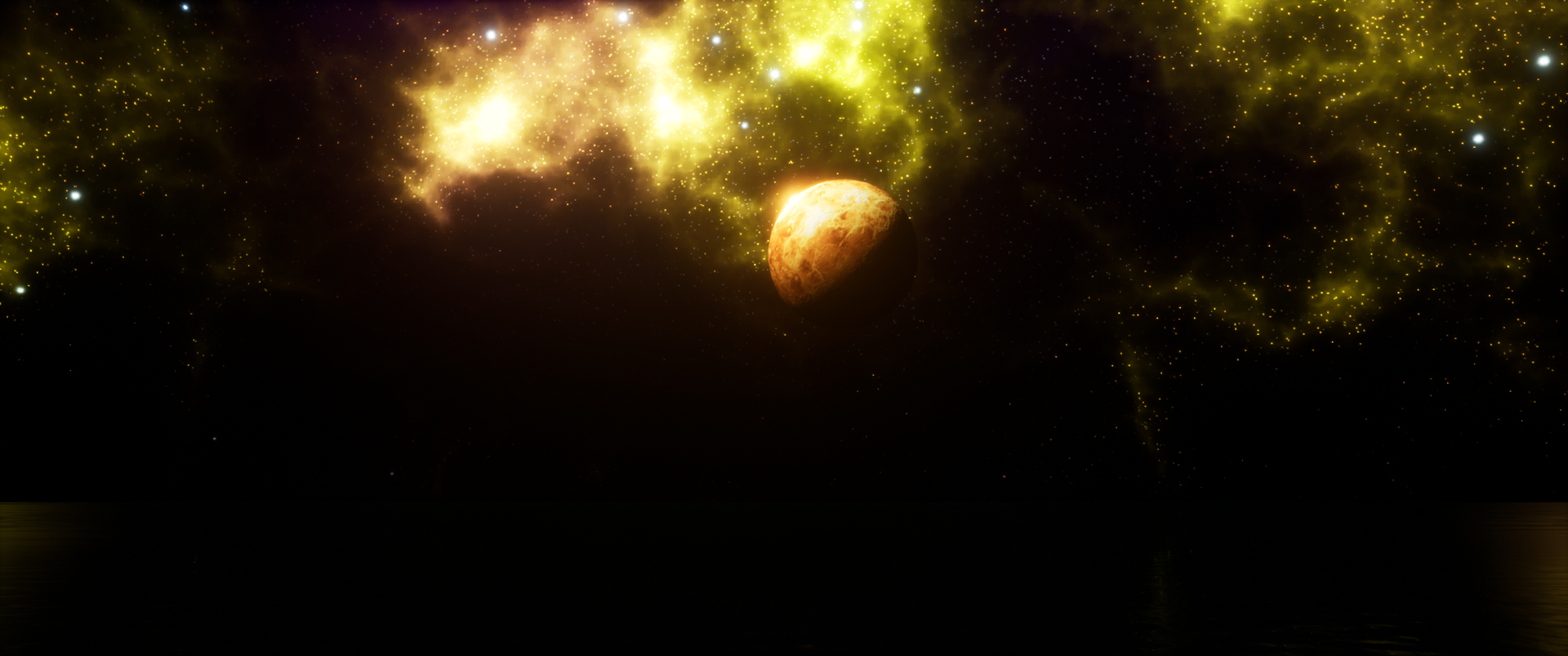
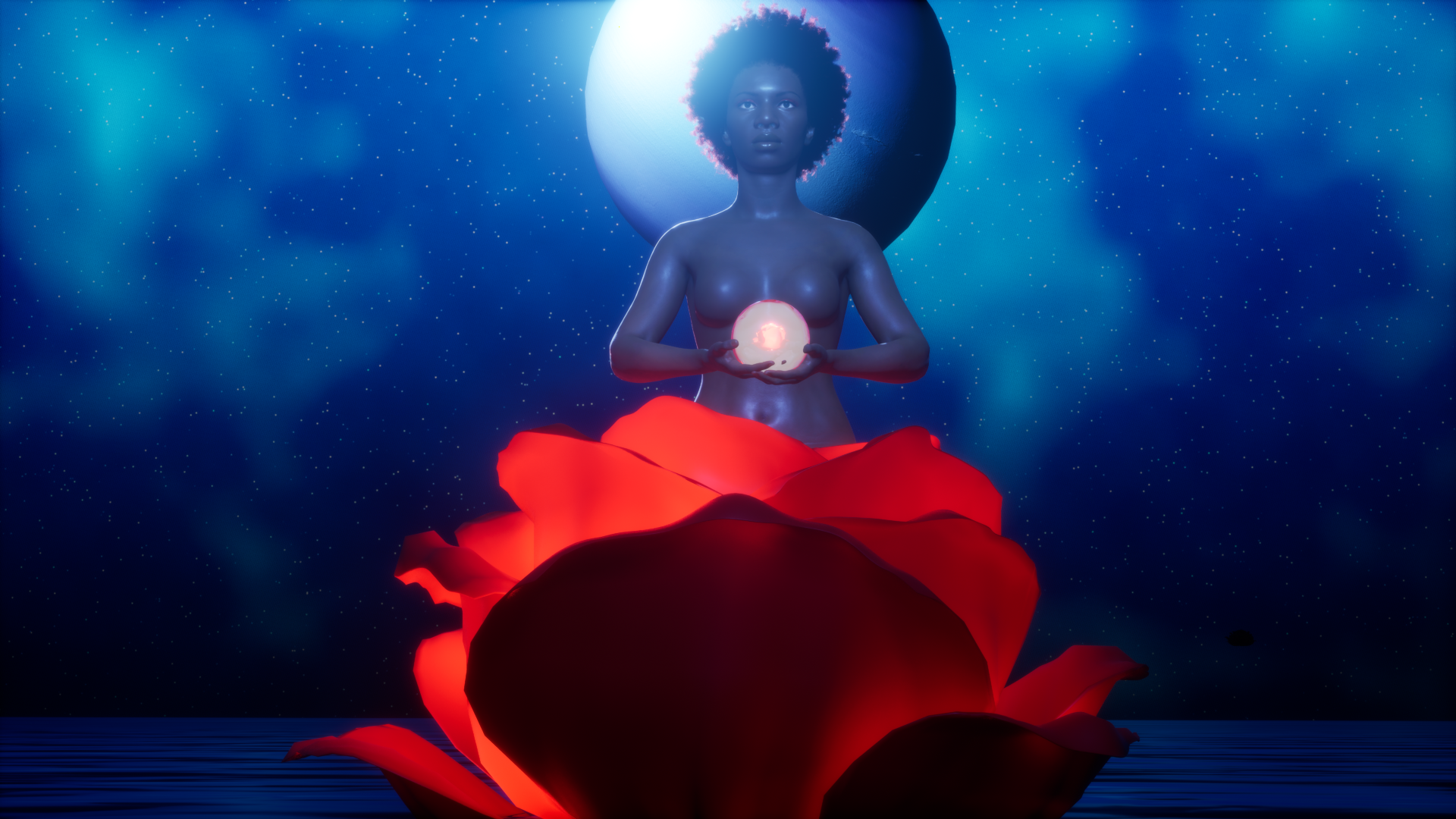
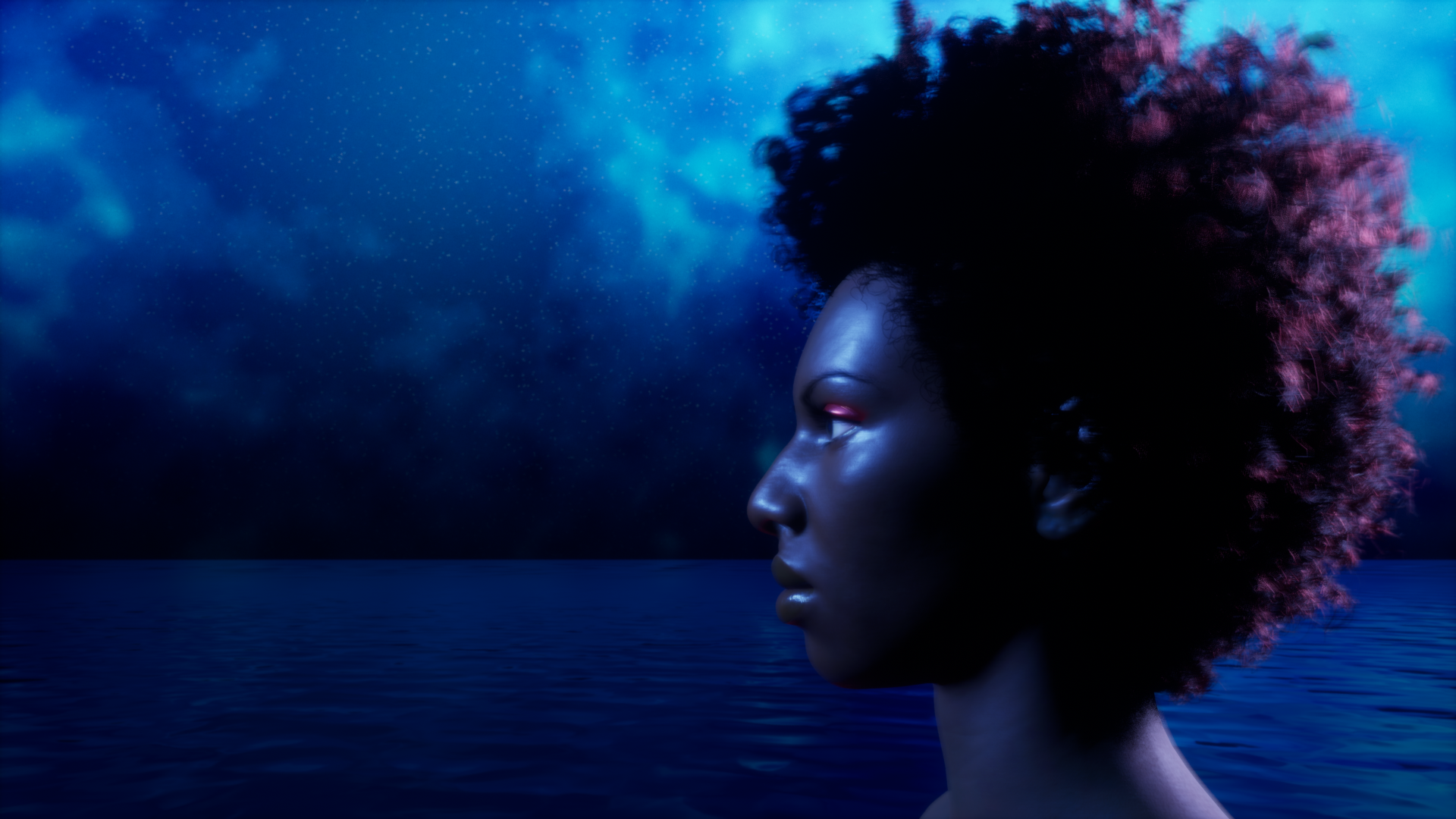
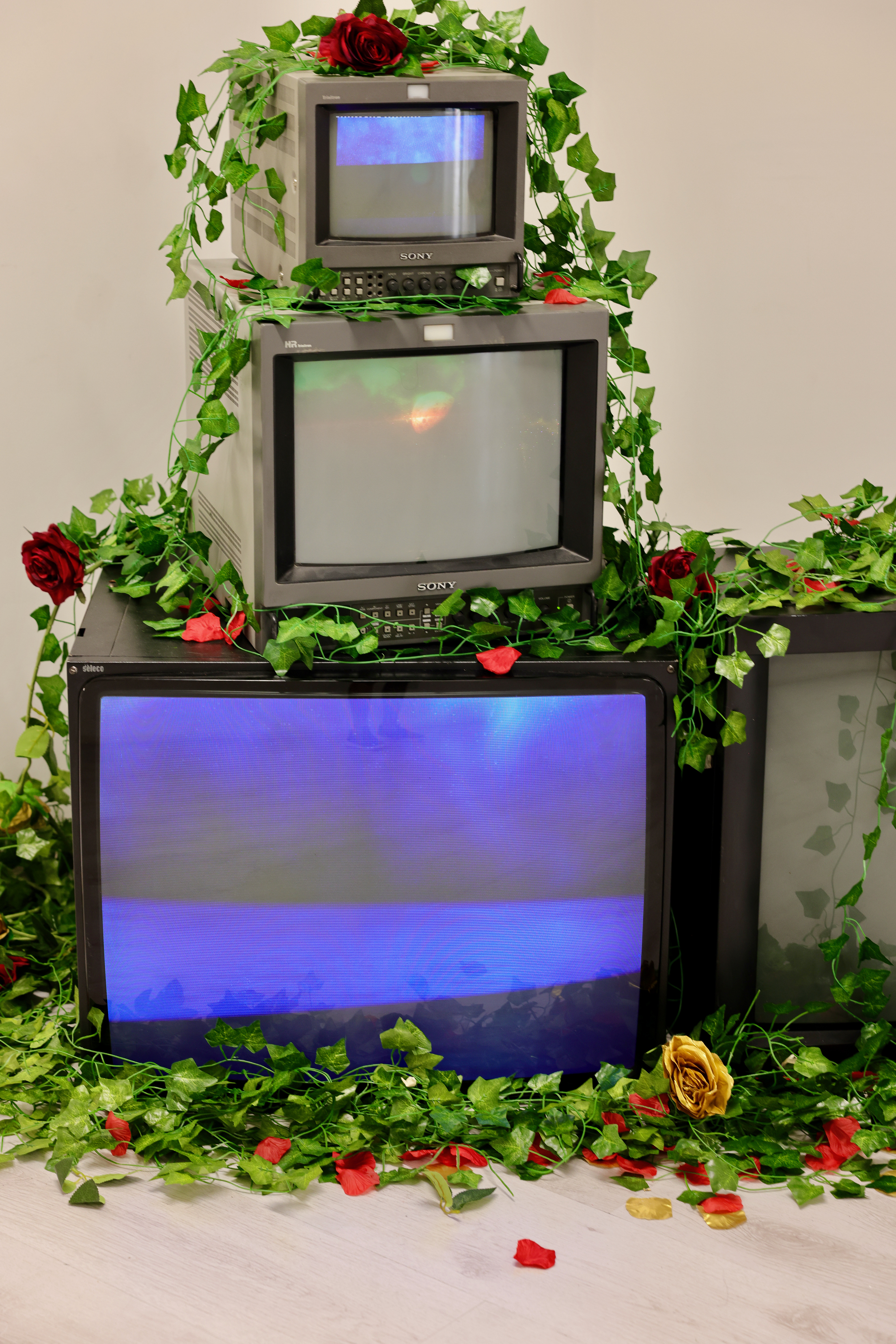
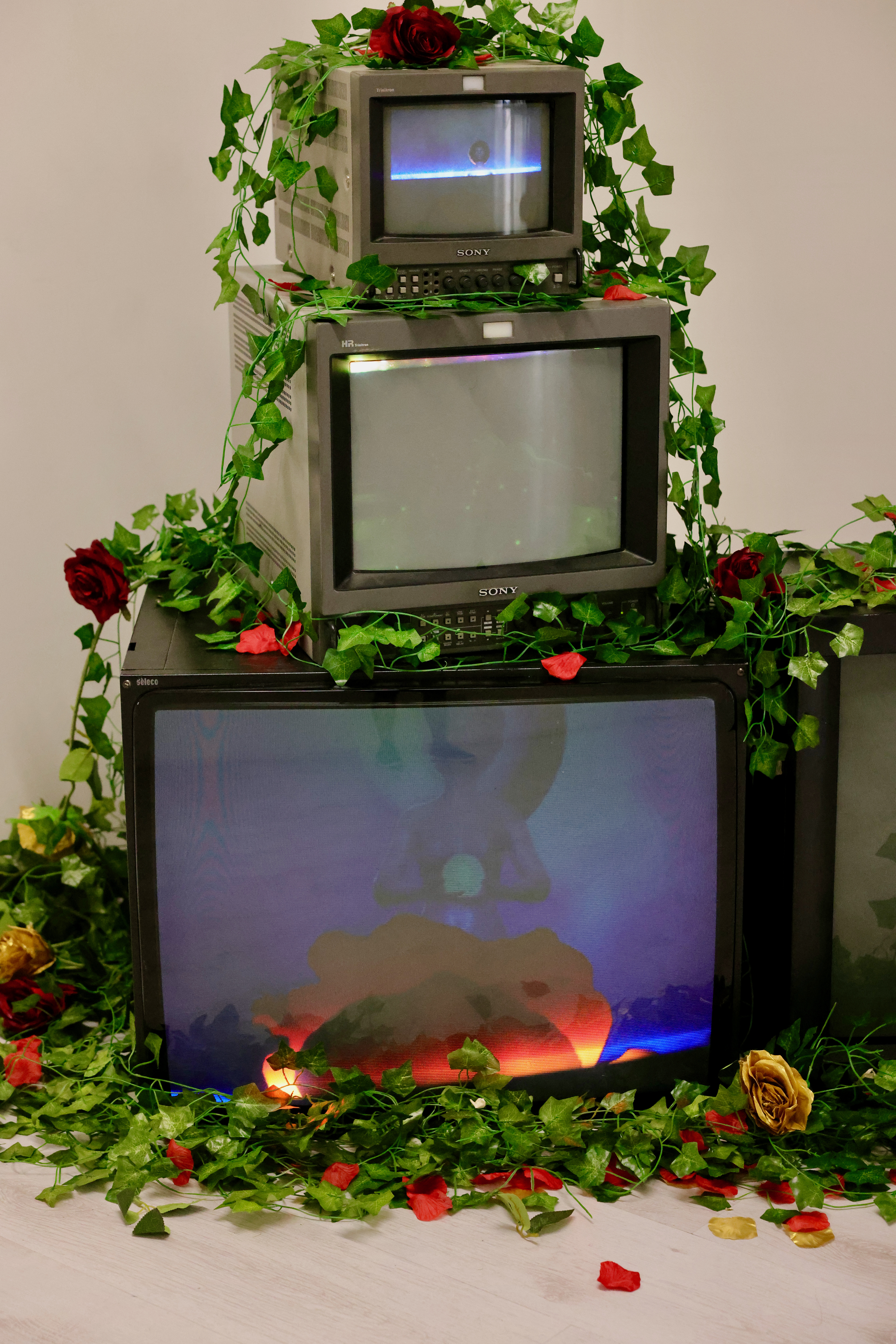
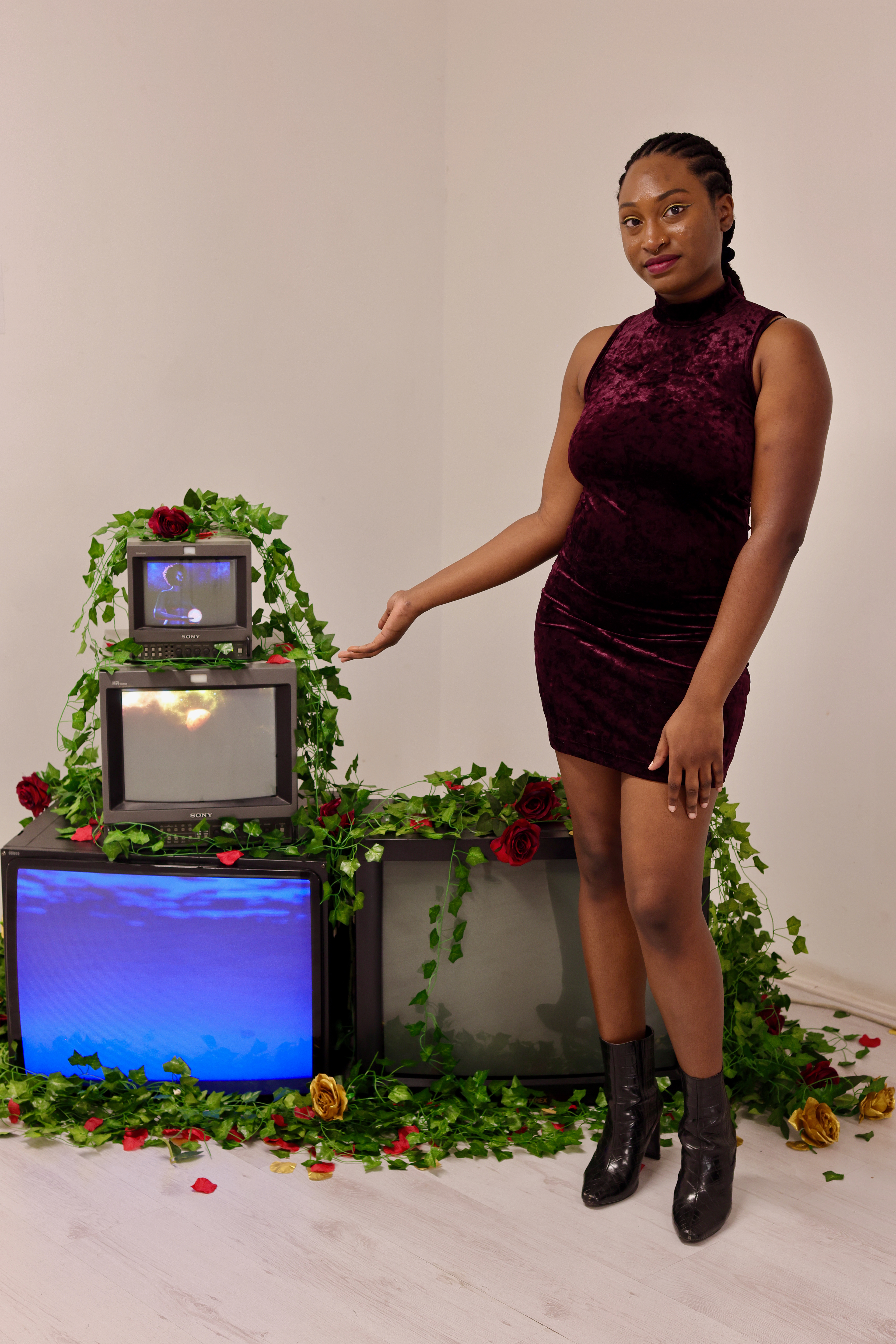
SAND PAINTINGS
X
SAUL SAMBA
X
SAUL SAMBA
Saul Samba
Title: Sand Paintings
This piece is about nostalgia,
The reference comes from a painting that signifies, black joy and Gambian
pride.
Peace and synchrony is what we manifest as a people. Reference to African
high-life music. As a people we seek contentment through performance,
sound and creating.
Which unifies us across the Black Atlantic
Digital photography, 2022
CHI SERIES
MSSHAKARA X PRINCE OKE X KATWAMBA
MSSHAKARA X PRINCE OKE X KATWAMBA
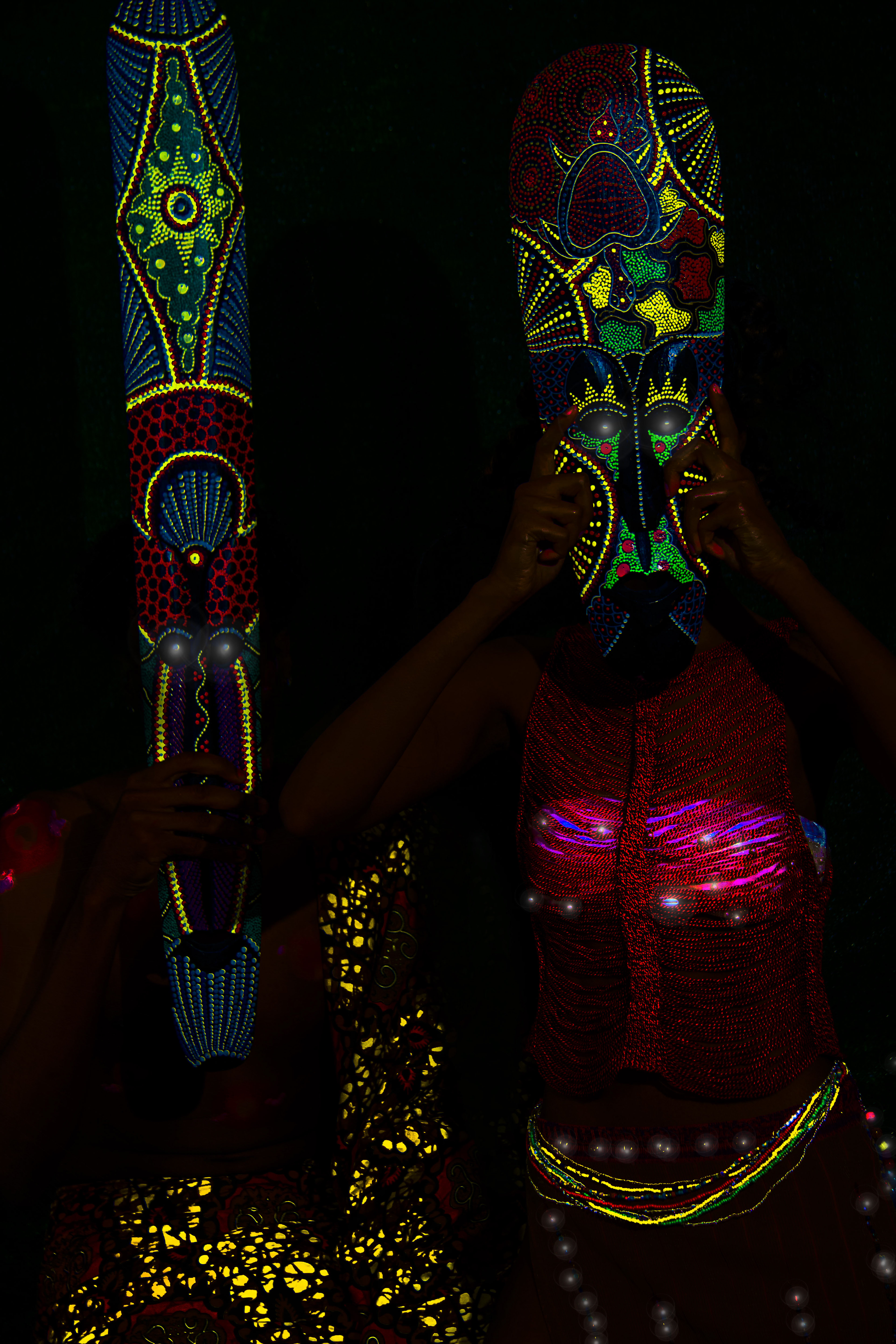
Msshakara X Katwamba Mutale Title: Chineke Chi is a pre-colonial southeastern Nigerian spirituality ‘Eke’ is a physical manifestation of female energy in the physical realm. Chi is an abstraction of pure consciousness, his female counterpart is the source of creation or creator, and is the creation itself. The root word is ‘Ke’ which means create. The ‘E’ in ‘Eke’ implies something that has been done as there is no actual word for creating in Igbo. When Chi and Eke come together they make you, your essence and your physical existence (manifestation) Chi and eke are two parts of a whole in Igbo thought, Chineke. One can’t outlive the other. Chi will always need to Eke to create. One way to express your chi is to become Onyekeke (Onye means destiny). To manifest, become the architect of your life/destiny like’ Onyekeke’. Onyeke Chiyeke the idiomatic expression means; God creates beings in his/her image who have the power to create their destiny. what are you good at? The creator of the crown of life is chineke the essential secret to happiness is to be a creative person. Igbo believe if you understand chineke you have insight into all things, to learn everything around you should know and learn about yourself. Beyond our relationship with Chi, the connection between humans and Eke is what makes the Igbo worldview unique. The term God is love, greater is God in you than God is in the world. to me, this is an analogy to unconditional love and within yourself, partnership, alignment and security. ‘’Iwu nke idi na otu’’ means the law of unity. Digital photography, motion graphics, 2021
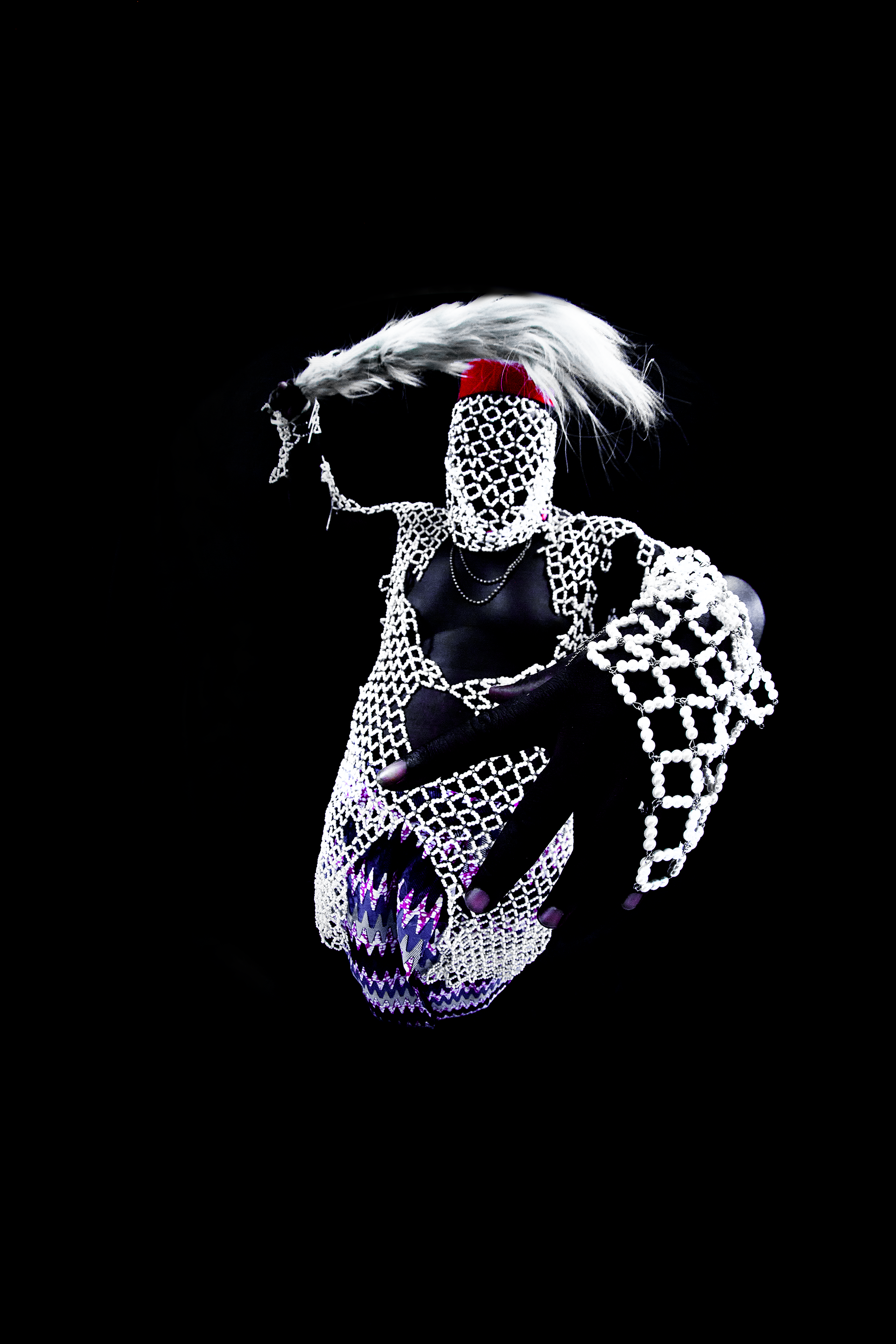
Digital photography, 2022
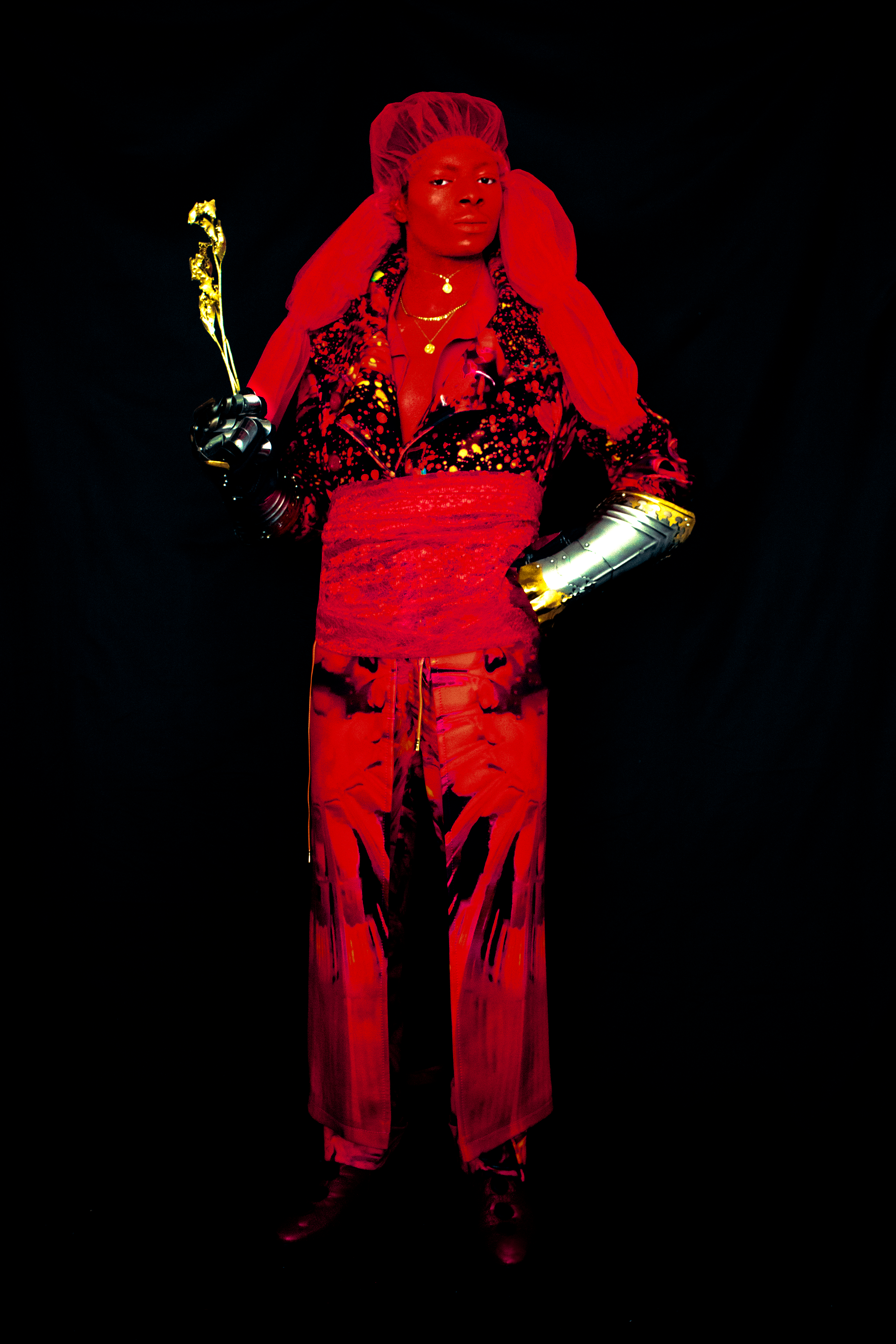
Prince Oke Titel: R E D C H I In tribute to my dearest and best friend: named “Bradley” he is not just a friend but family, I have known him since I was age 11, and now at age 21, we have known each other for more than half of our lives. I have always seen him as my guardian angel, no one knows me more than he does. If my special colour and aura are “Green” then we would always say that he is “Red”, the perfect complementary colour match. His birthday is in April which represents the astrological sign: ‘Aries’, the ram and warrior class; similar to the Greek god “Ares” - god of war. Digital photography, 2021
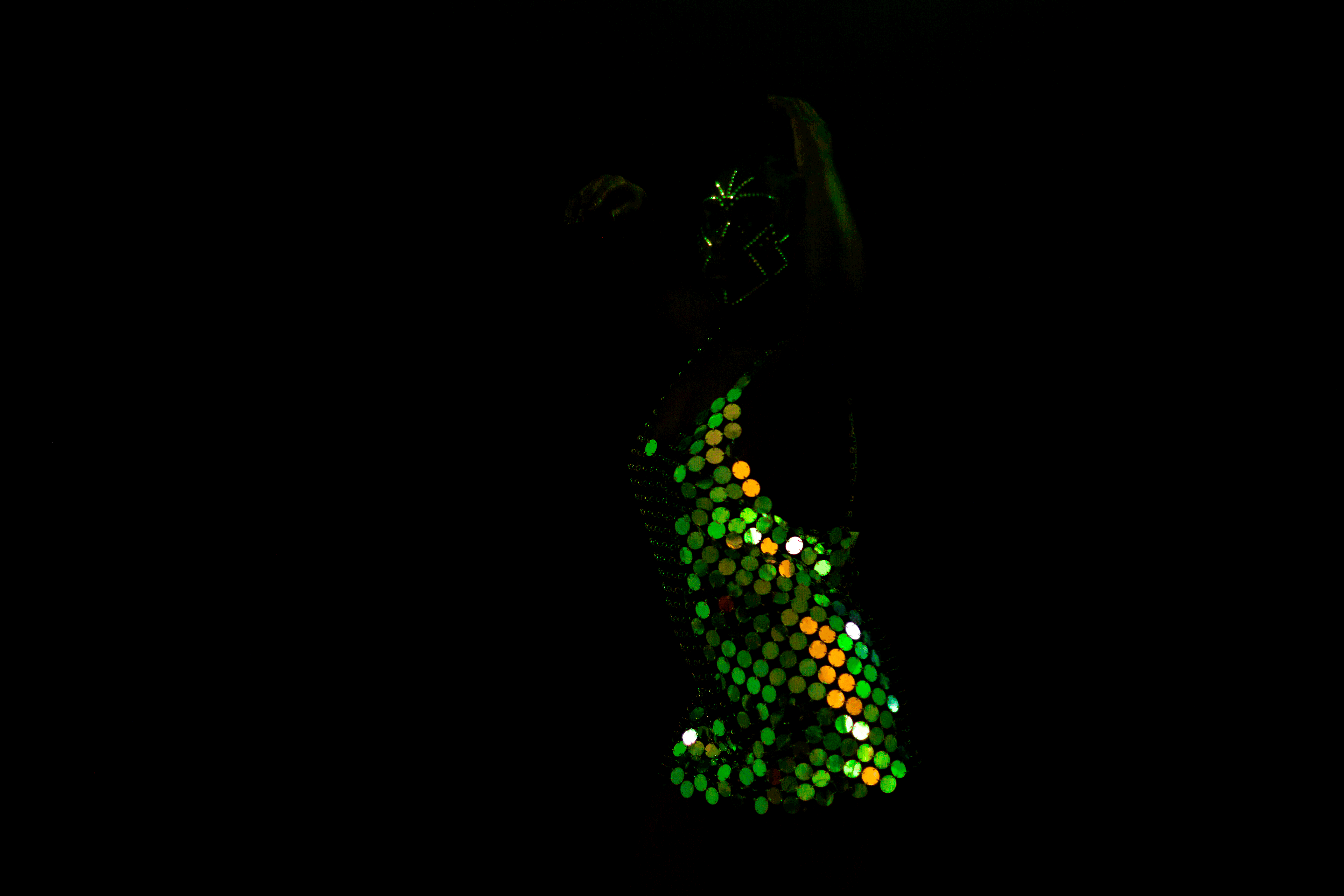
Digital photography, 2022
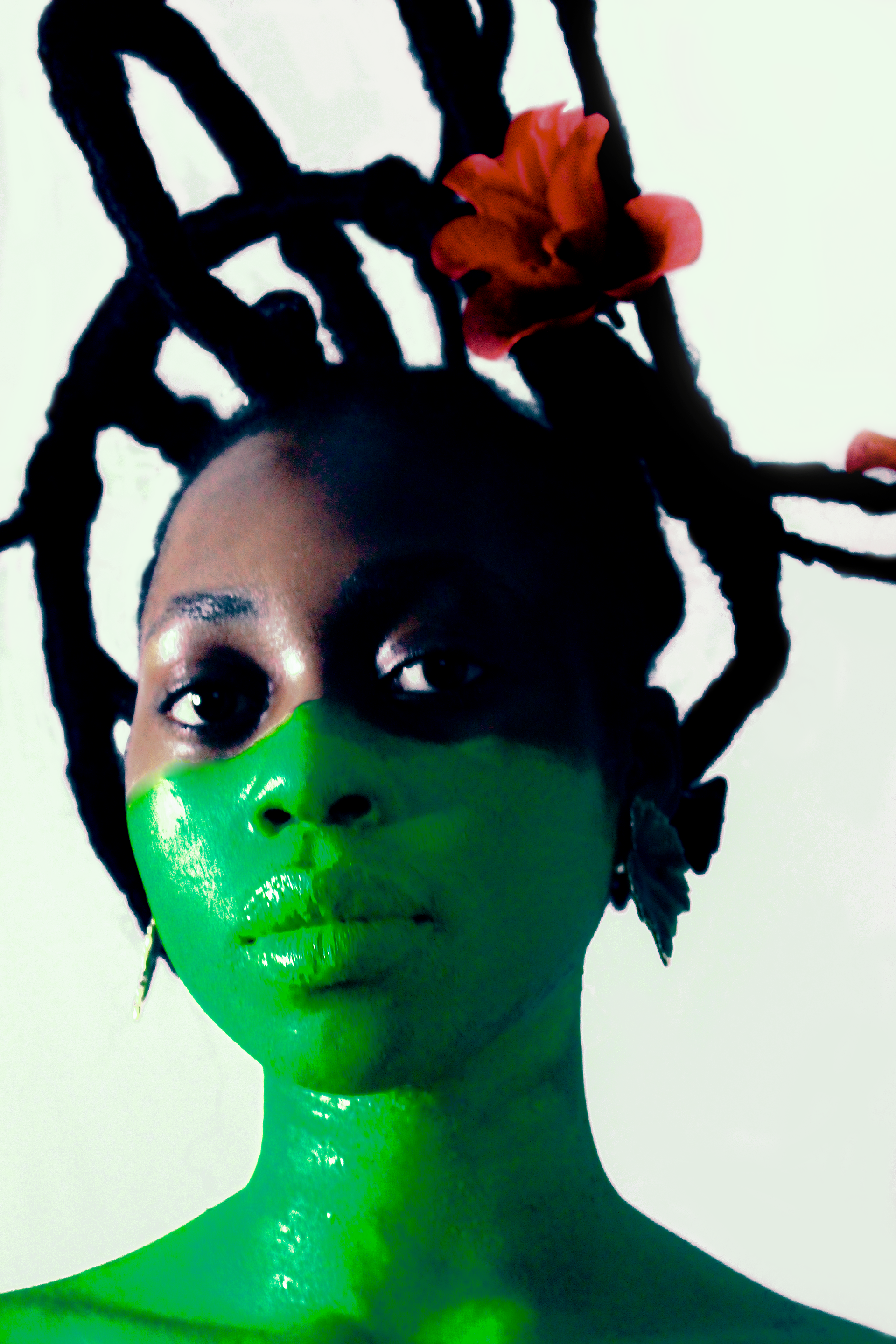
Prince Oke Title: G R E E N CHI aka “Chi” in Igbo, refers to the personal spirit of a person. [a tribute to Igbo masquerades known as ‘mmwanwu’ in Igbo; manifestation of a celestial entity; a note to Phyliss Galembo. Background: Entity of growth, resilience, energy, empathy, and nexus. ‘The Green’ is an alter ego of myself that began when I lost my mother. As my mother was named “Rose” I began to associate her teachings and presence with nature and growth; later on, being represented by the colour green. This was demonstrated by using green in the way I express my creativity, and thoughts, for example, in my poem “The Colour Green” which I mentioned earlier in my concept development. Therefore, this character in its rawest form represents ‘rebirth’ and ‘resilience’ even in death. Digital photography, 2021
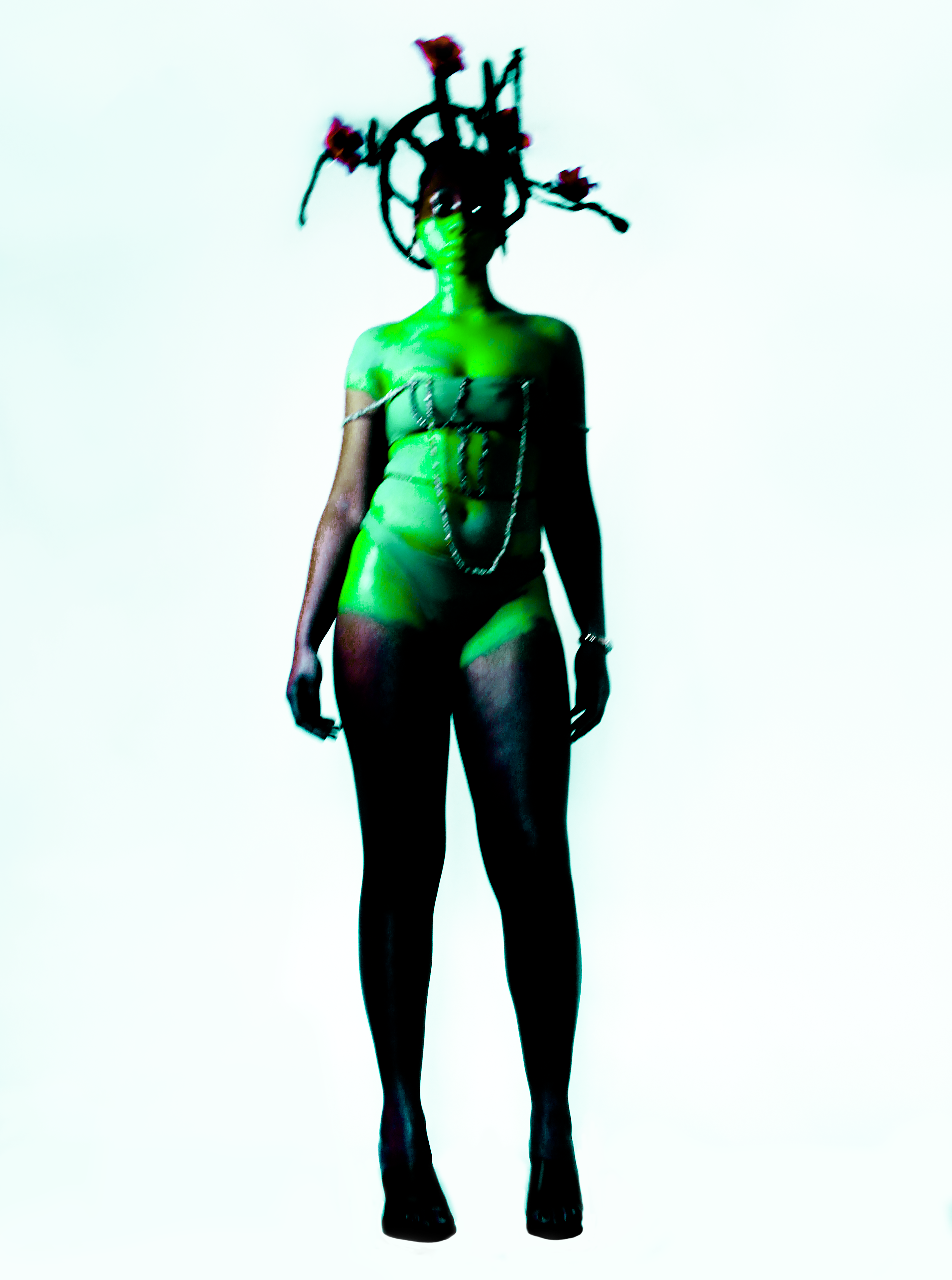
Prince Oké Digital photography, 2021

Digital photography, 2021
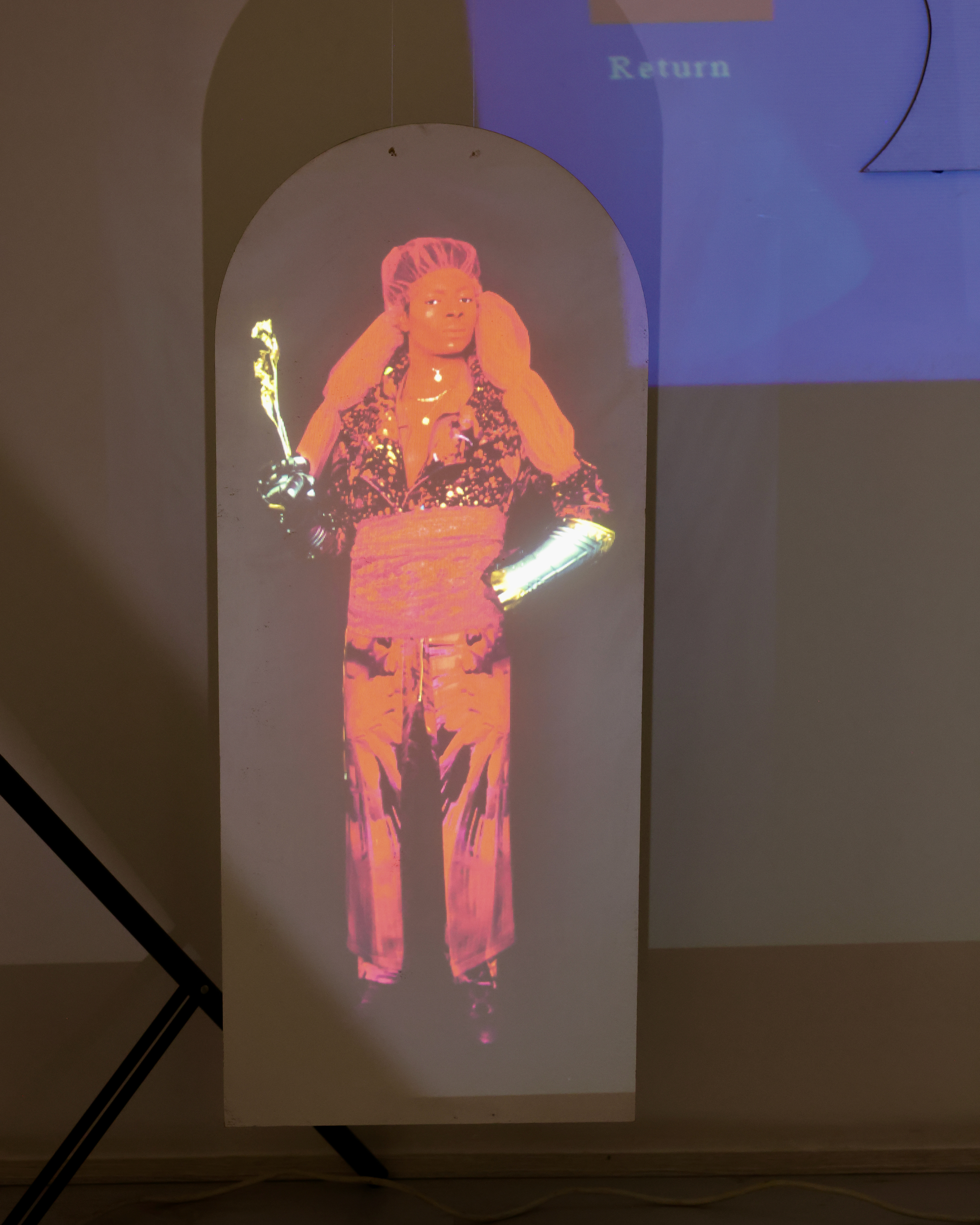
Prince Oké Digital photography, 2021

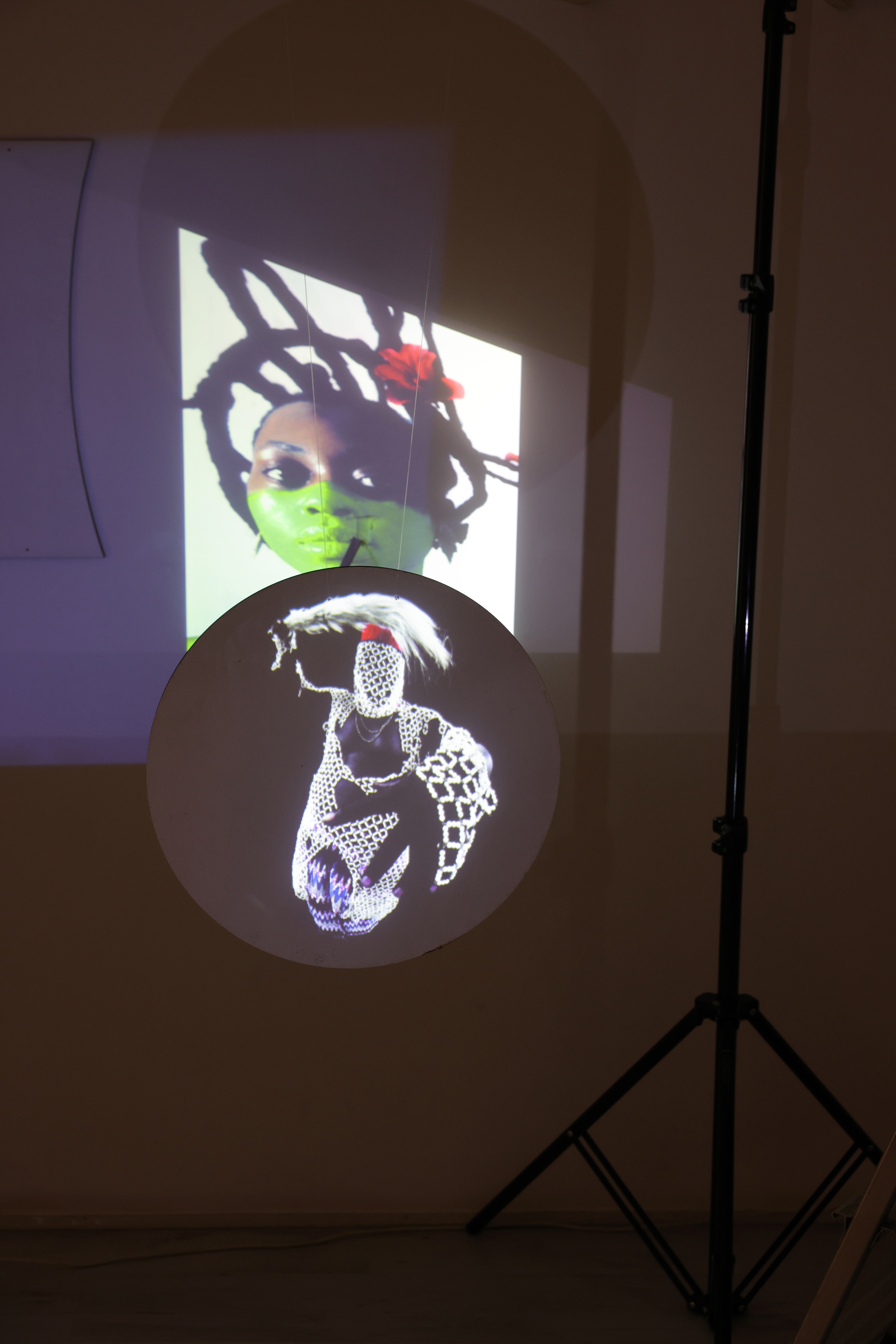
RASPANPUFF
X
MSSHAKARA X PRINCE OKÉ X KATWAMBA
X
MSSHAKARA X PRINCE OKÉ X KATWAMBA
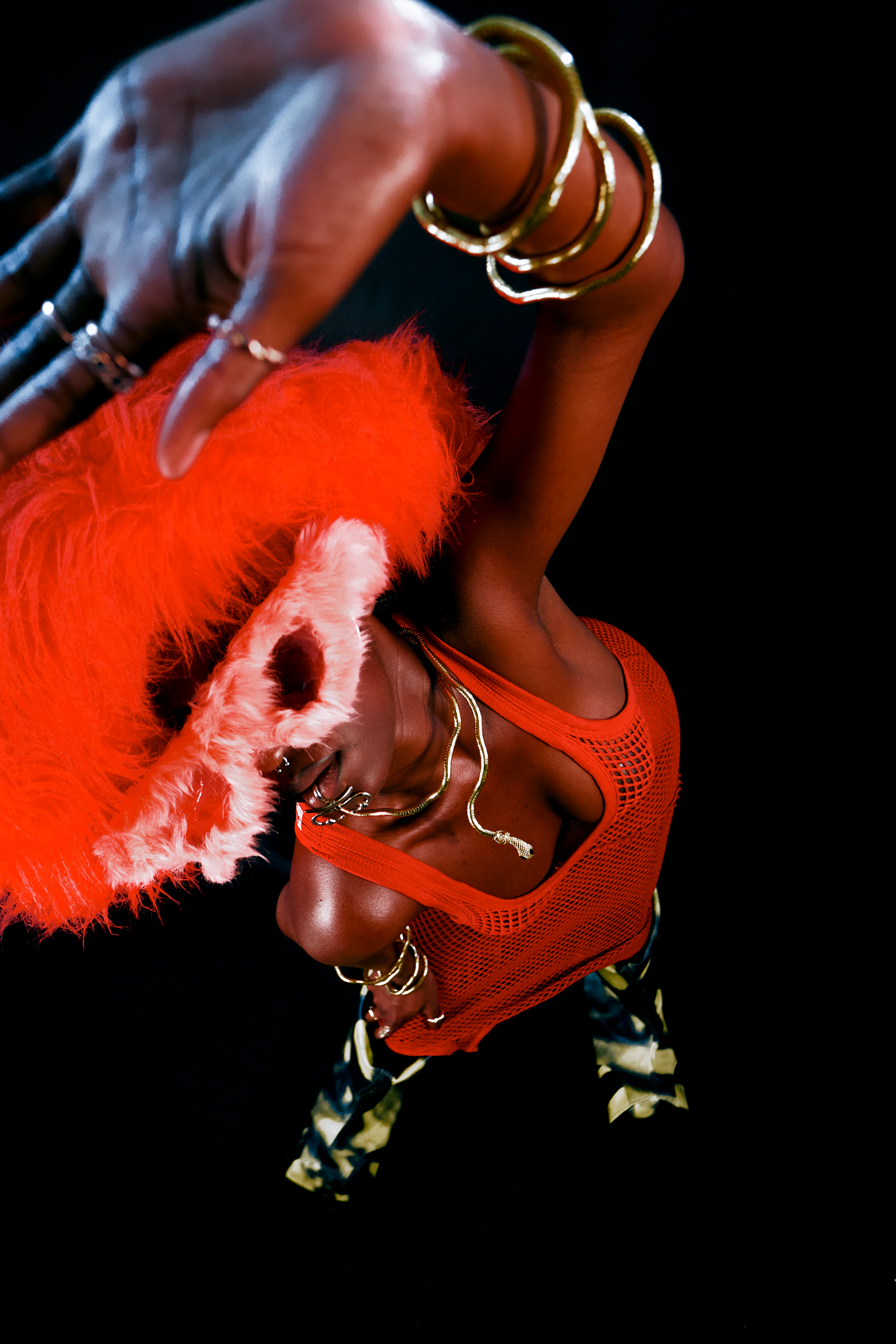
Msshakara x Prince Oke x Katwamba Title: RasPanPuff This project is inspired by the Powerpuff Girls, we take references from pan-African colours, Rastafarian, afro-futurist elements and dancehall. We wanted to communicate unity, and solidarity we are the same just dropped off different locations. Raspanpuff is in support of blacks from all walks of life. Digital photography, 2022
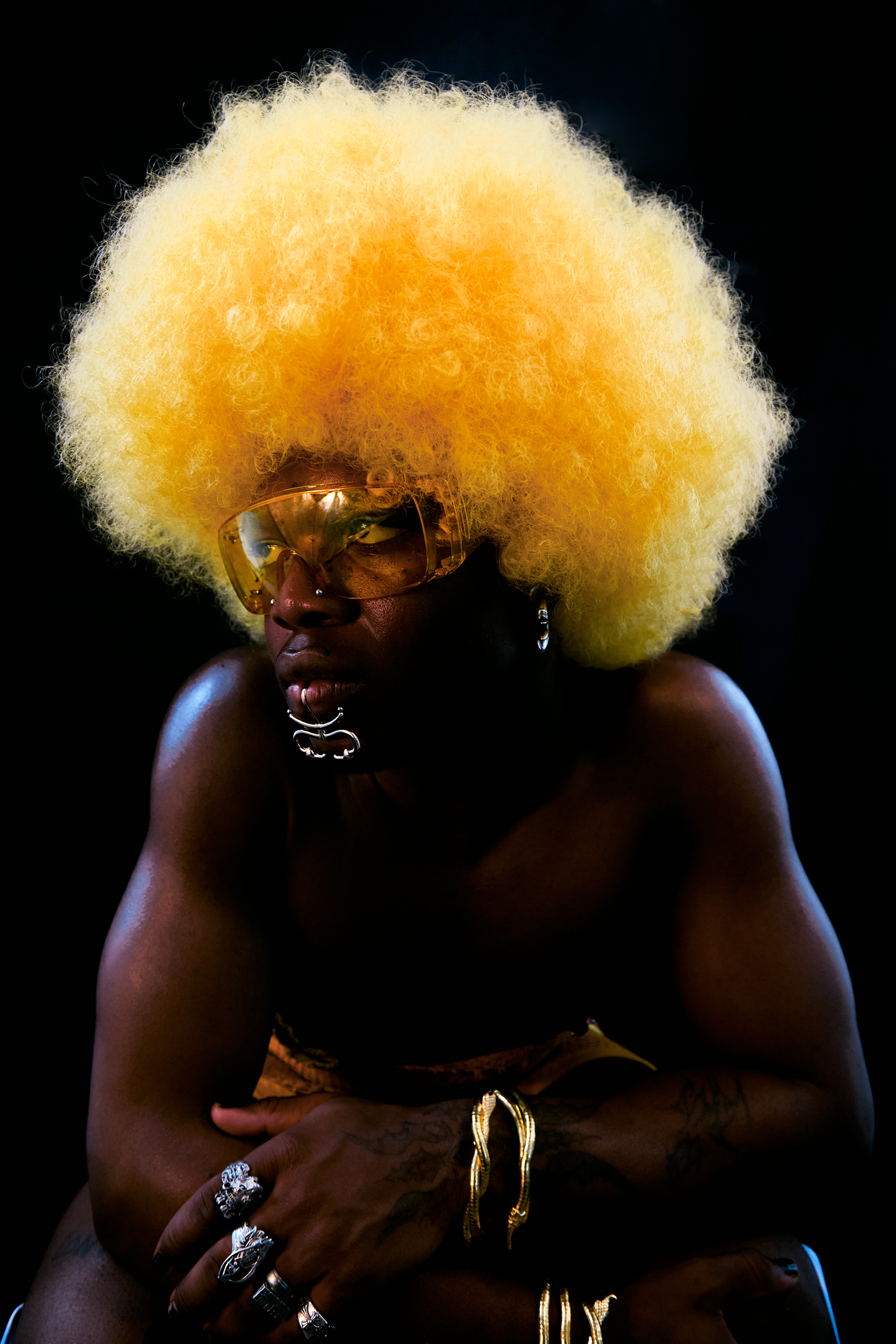
Digital photography, 2022
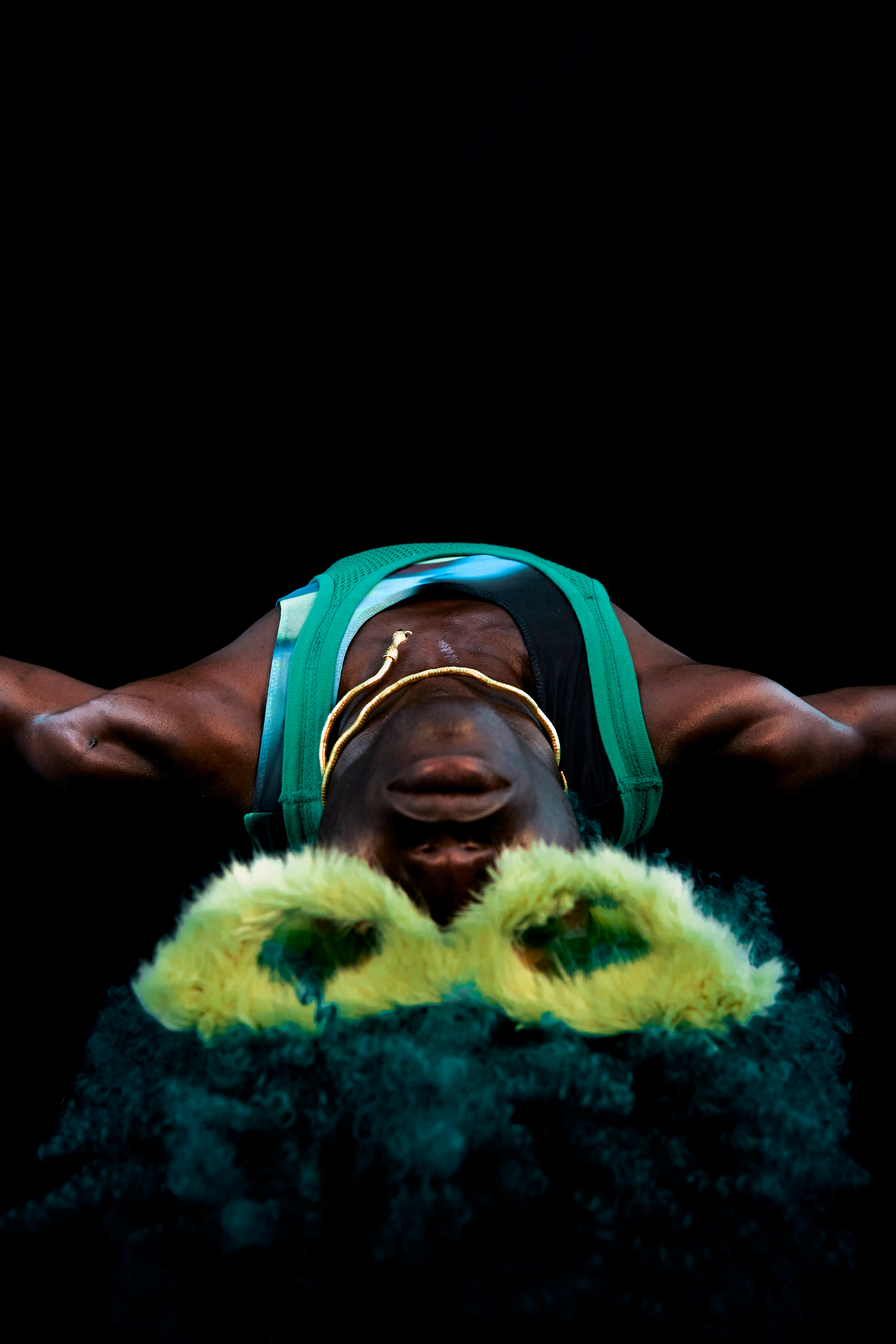
Digital photography, 2022
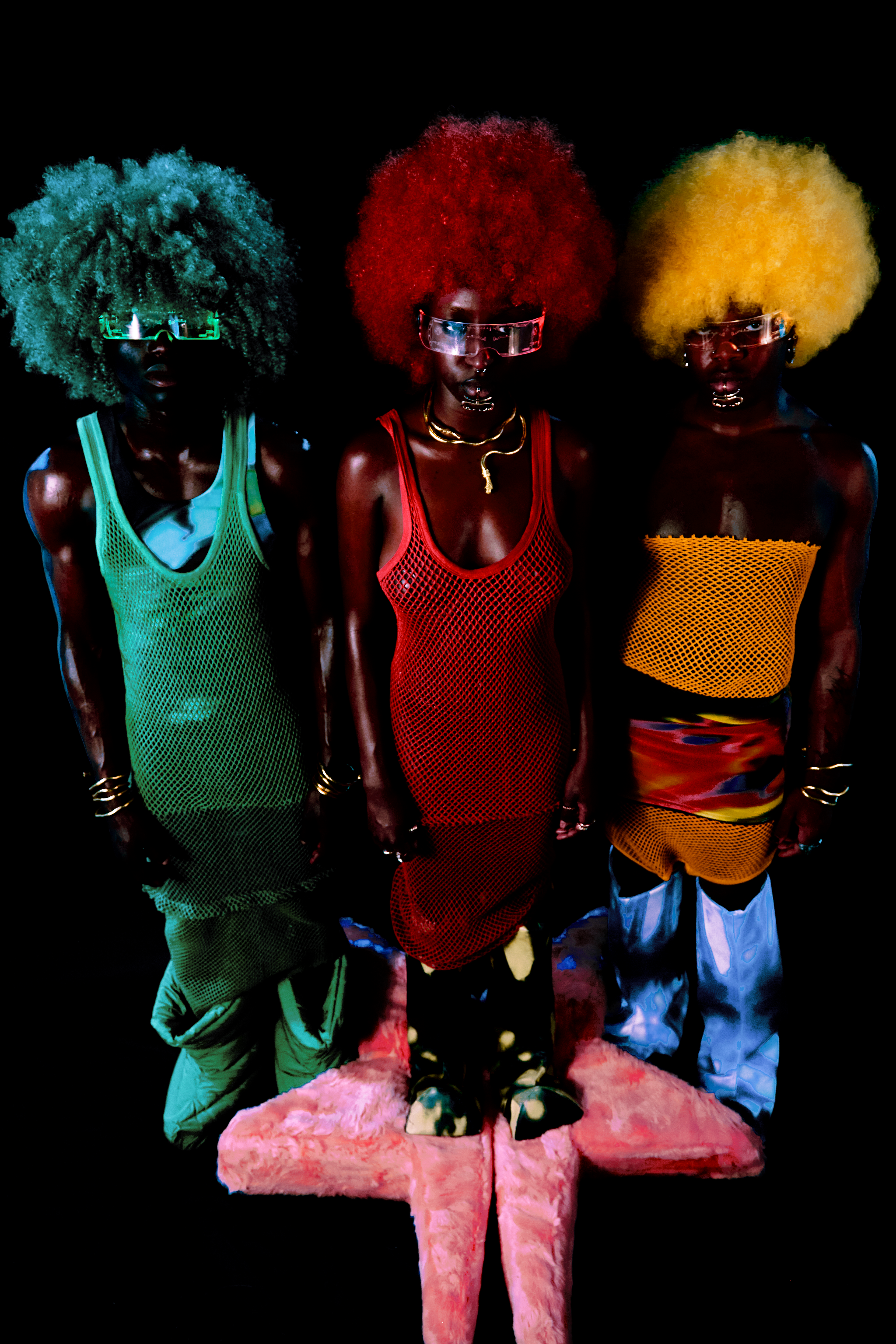
Digital photography, 2022

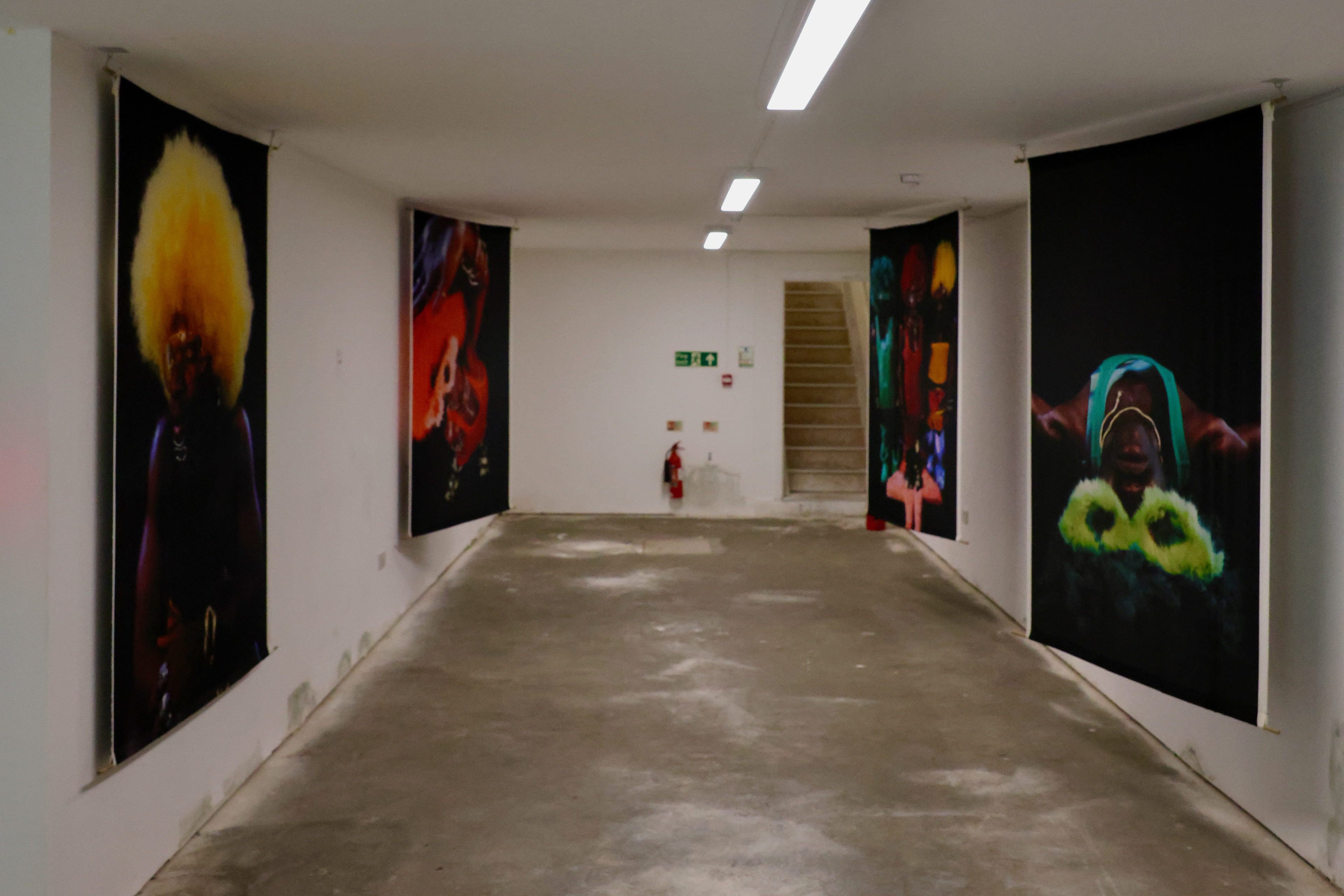
If My Hair Could Talk by Aderonke Oke
If my hair could talk it would tell me it loved me despite me dipping it in dangerous chemicals every two months for 5 years to resemble Halle Berry with her famous pixie crop.
If my hair could talk it would tell me it was dying of thirst when it was blow-dried and stretched to smithereens.
If my hair could talk it would remind me how beautiful I am when I shaved it off for 6 years, as the wave of depression took over me and getting out of bed was a goal rather than a necessity.
If my hair could talk it would ask me why I think my hair looks messy?
When this is how it grows out of my head
If my hair could talk it would whisper thank you as I continue the journey to heal, and what that means mentally.
My hair has been talking to me my entire life and it tells me that my hair represents my ancestry, my heritage and my truth.
The truth that continues to glow despite my best efforts to turn down the volume.
ROOTS
X
Kween ramel x lotanna x sade
X
Kween ramel x lotanna x sade
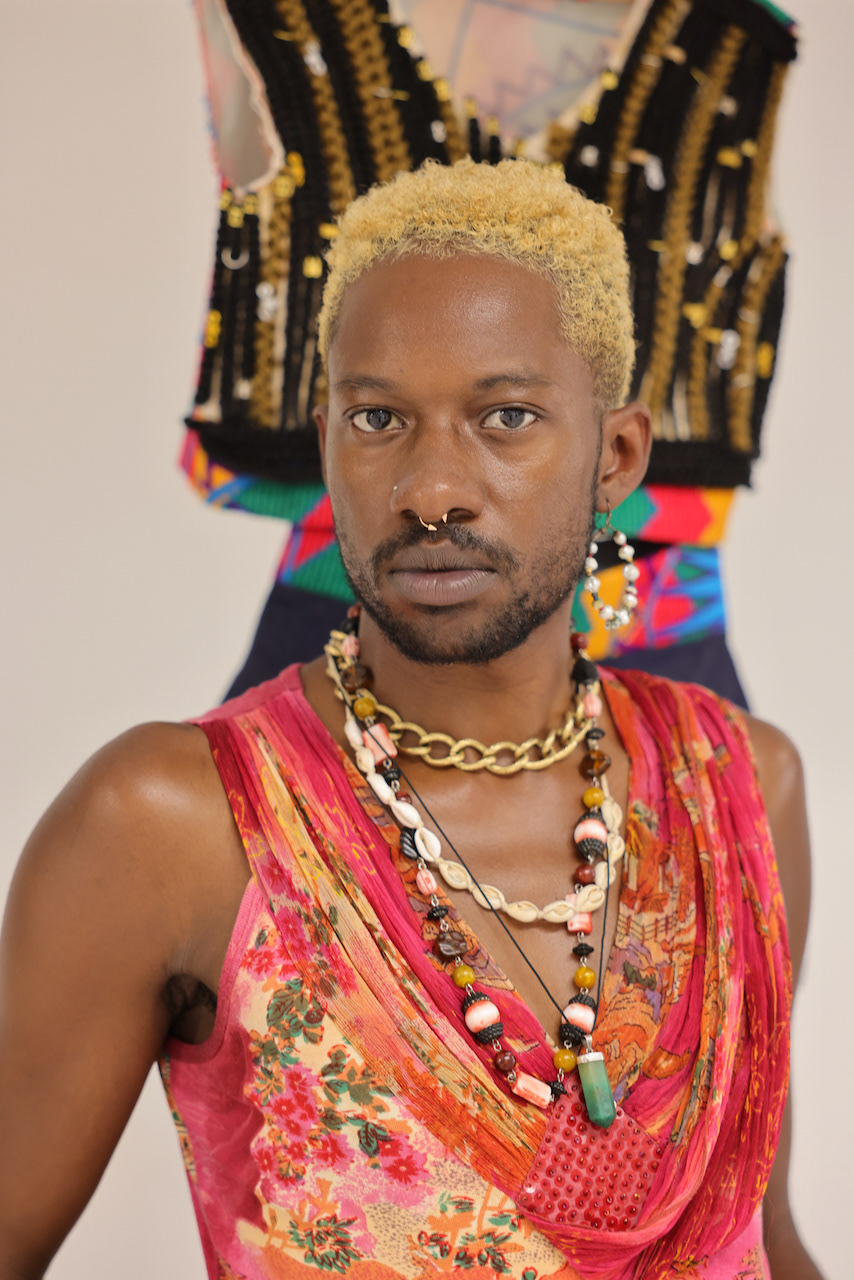
Kween Ramel Title: Roots For our hair to grow, we have to look after and nurture our roots. The collection “ROOTS” dissects the relationship we have with our hair and how our hair is a symbol of power and freedom. This collection expresses the powers and richness within our roots. The foundations that have been laid out for us. Within my research, I have explored the history of Afro hair and the discrimination and abuse black beings has received due to their hair. Black people have been told they are less than or not good enough because of their hair. Black people were treated like animals. Black people were told they were not attractive because of their hair. This collection opens us up to black people’s pain for us to accept our trauma and abuse to free ourselves. Reclaiming their royalty. Reclaiming their crown. “Roots” identifies the polarities in this human experience. Embracing the darkness to tap into the bright light within ourselves. This collection clashes aspect of black people’s history and their future, aligning the roots to where we are going too. Freedom. The use of Kente cloth and denim fabric displays our connection to our past and our future. “Roots” also plays with the polarities of genders and sexuality which is explored within this collection. I attained a lot of inspiration for the colours and silhouettes from West African traditional wear and also intertwining aspects of my Caribbean background. Cotton, wax fabric, synthetic hair, 2022
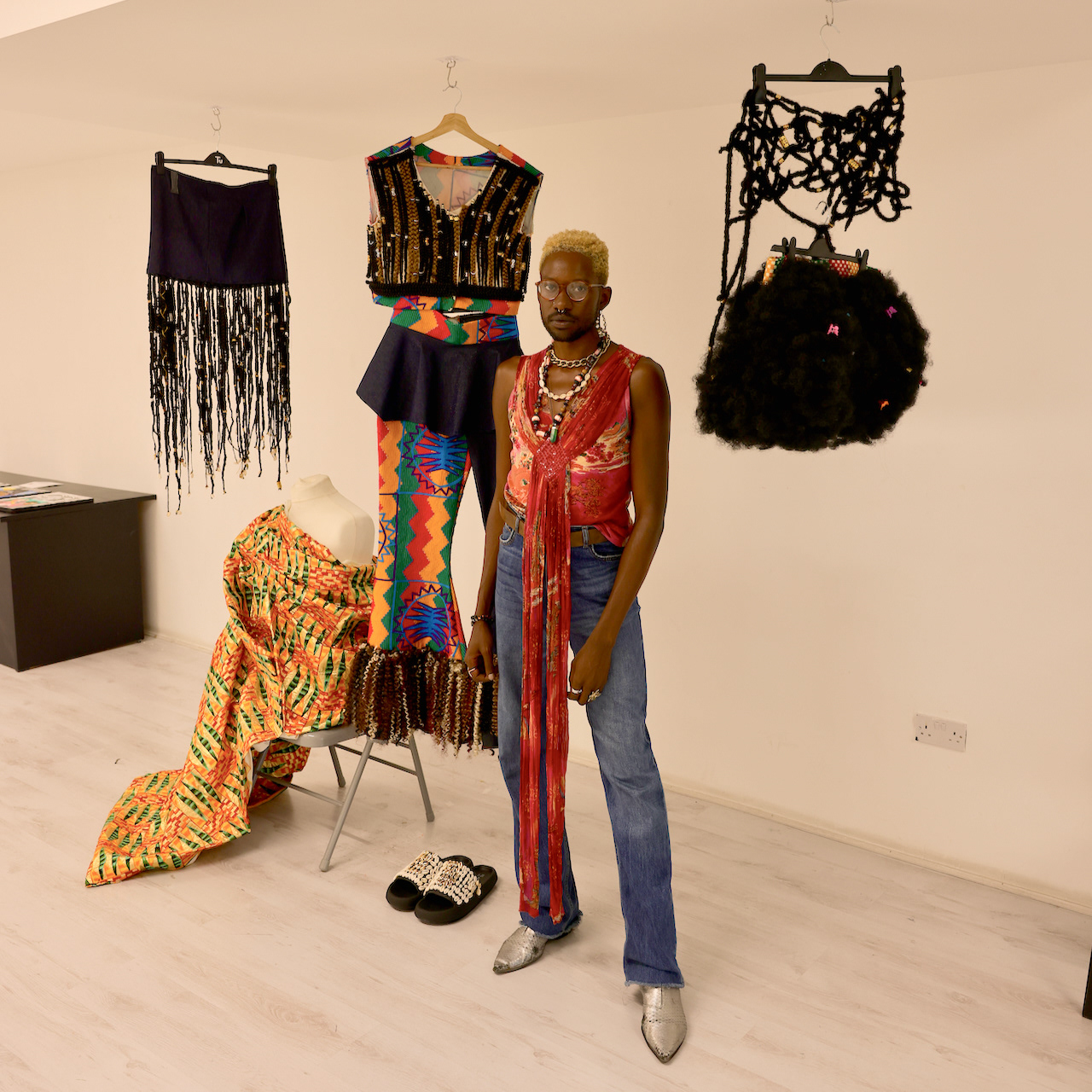
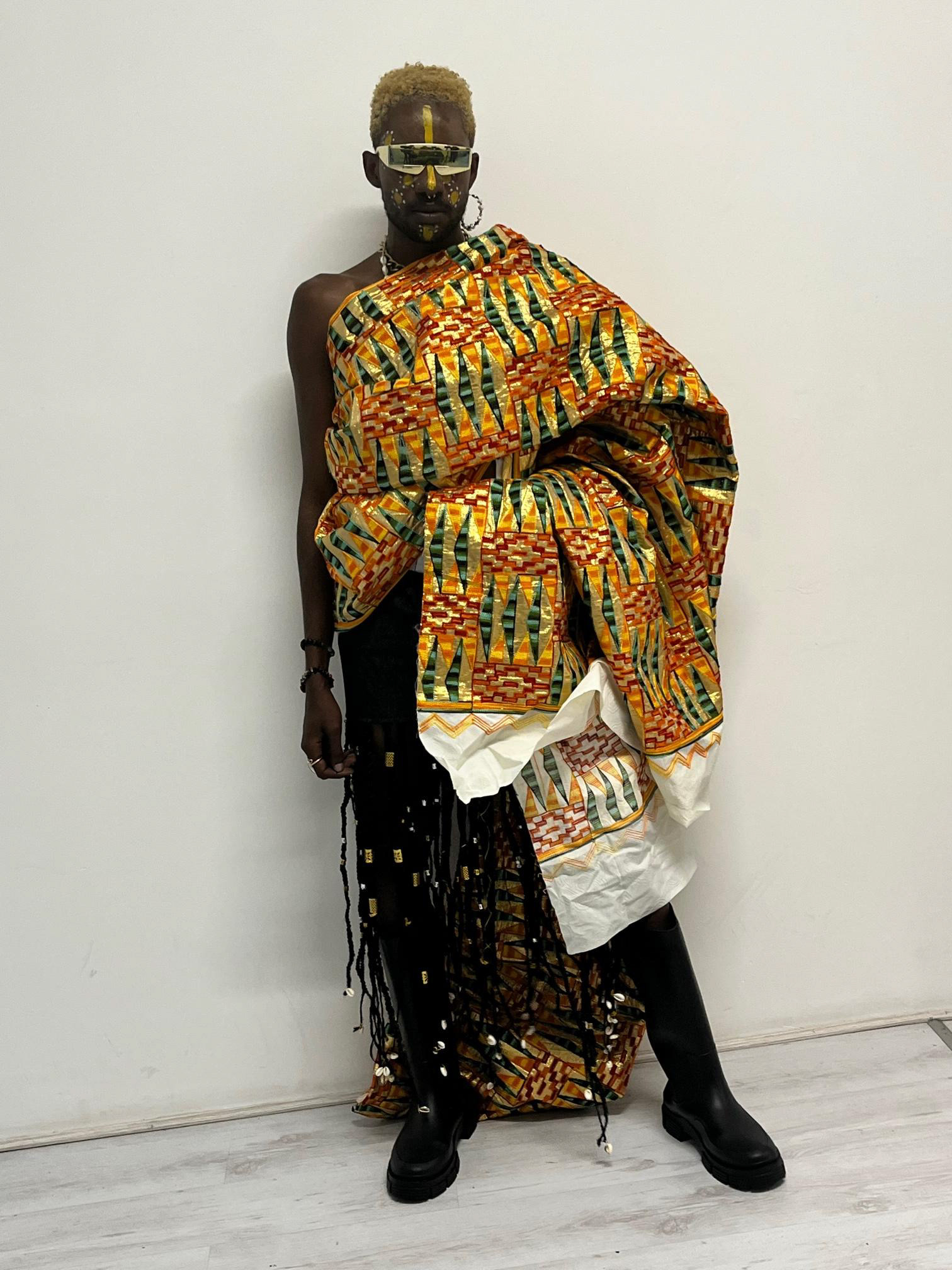
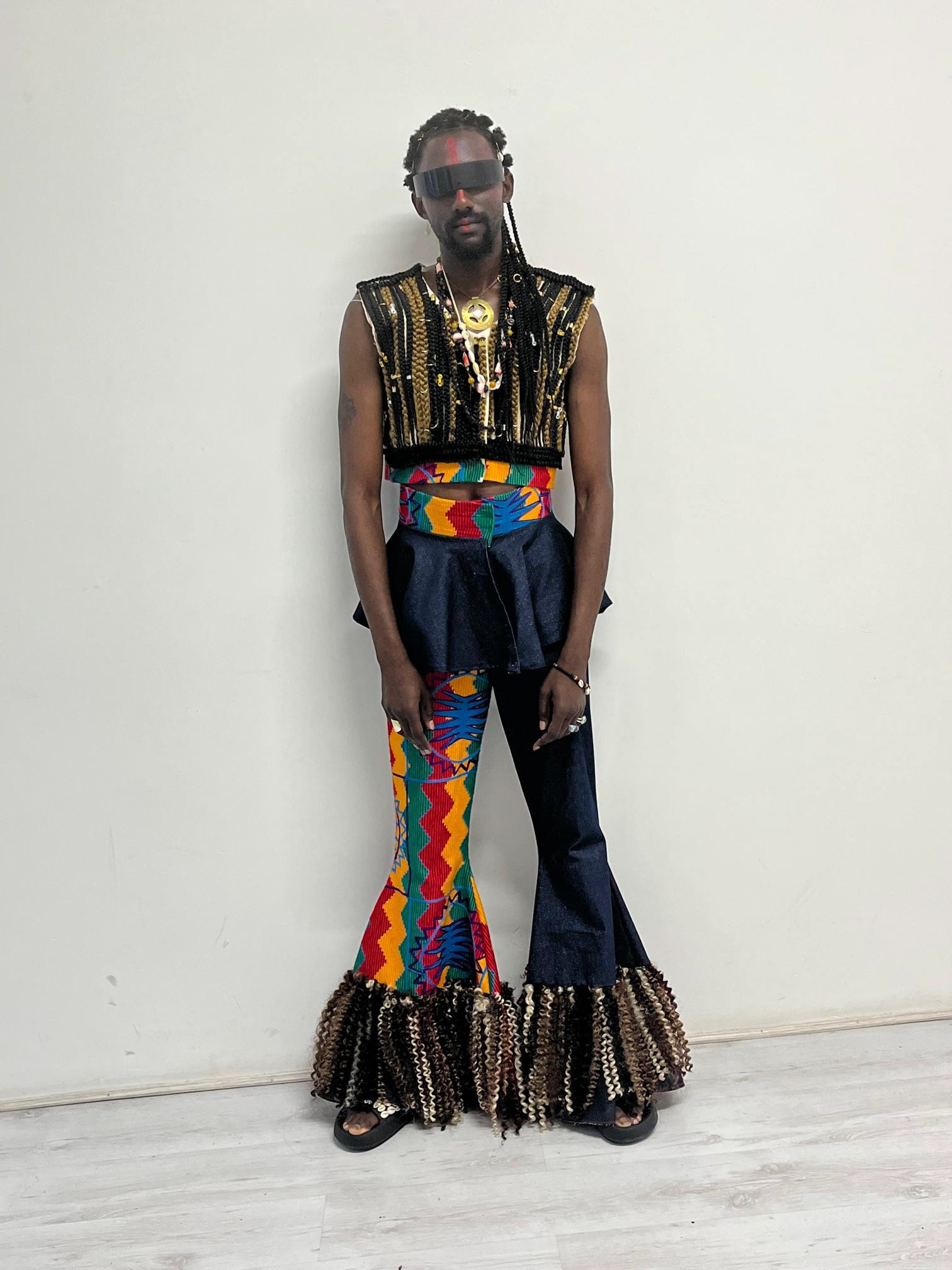
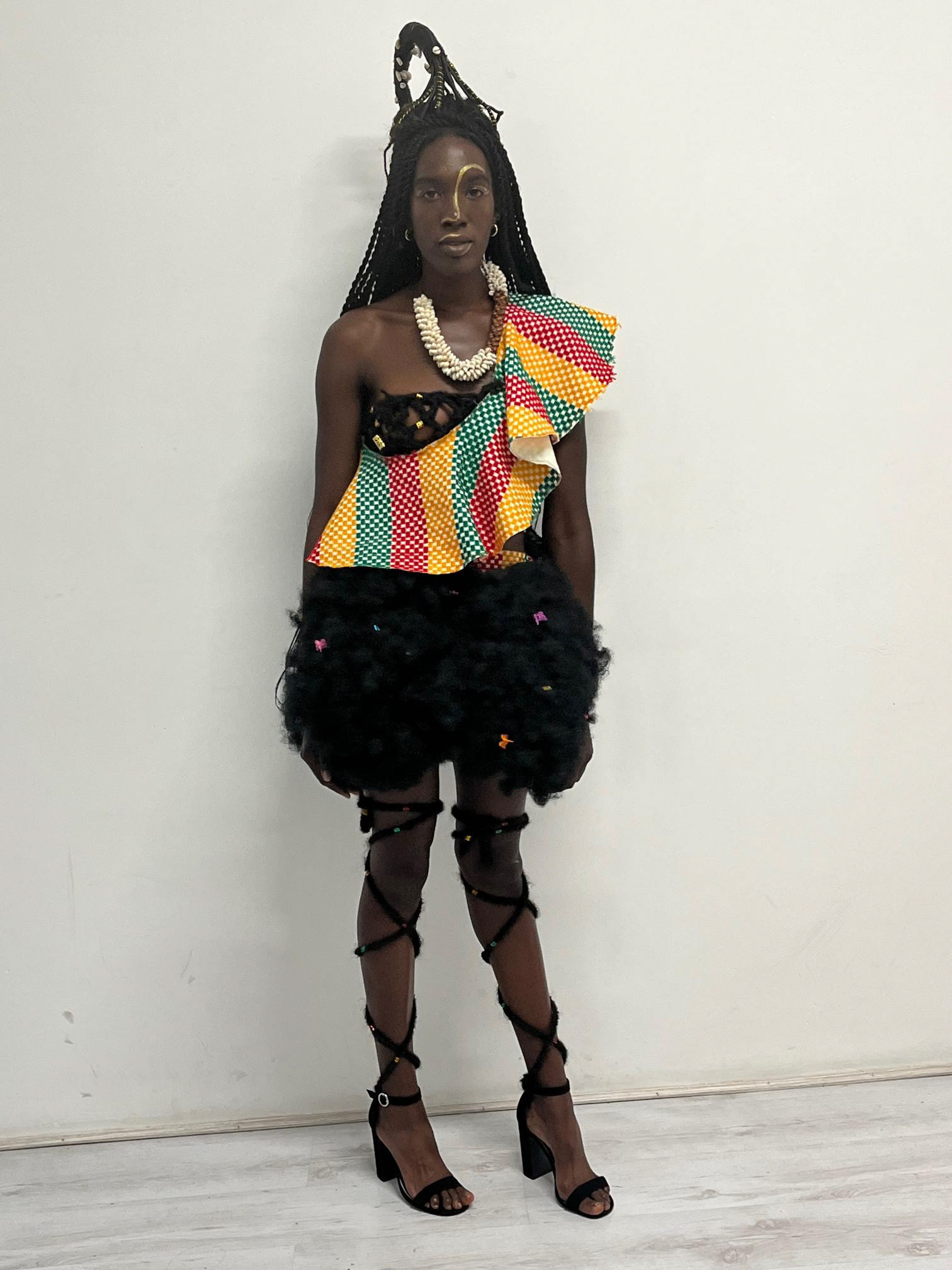
![L444tna Title: FROM THE ROOT This piece shows two traditional African hairstyles but instead of Afro hair, they are shown on lace wigs. This juxtaposition represents the past and present manifestations of black hair. In old Nigeria, women’s hairstyles were the medium through which their art and creativity shone. It was a stage to magnify the versatility of our crowns. Our hair was part of our story, our pride and history. Contrasting to the present-day society where black hair is most respected when it is [muted, covered and contained] A society where artificial hair is valued higher and commands greater respect and adoration than natural Far removed from the joy and pride our ancestors felt; black hair is now associated with inconvenience, ugliness and unkemptness. But still, from the root, it grows, defying gravity as it does so; transcending the laws of time, space and emotion. And from the root, it will continue to grow, till we find our way back to our roots Synthetic hair, wooden beads, rubber elastic, plastic, 2022](https://cdn.myportfolio.com/98e58ce9-a962-4a4e-a83e-0216a83059fc/8932095e-e023-4579-b46f-3a58492575a0_rw_1920.jpg?h=003ca07c20de93eb21c3a199ba8370dc)
L444tna Title: FROM THE ROOT This piece shows two traditional African hairstyles but instead of Afro hair, they are shown on lace wigs. This juxtaposition represents the past and present manifestations of black hair. In old Nigeria, women’s hairstyles were the medium through which their art and creativity shone. It was a stage to magnify the versatility of our crowns. Our hair was part of our story, our pride and history. Contrasting to the present-day society where black hair is most respected when it is [muted, covered and contained] A society where artificial hair is valued higher and commands greater respect and adoration than natural Far removed from the joy and pride our ancestors felt; black hair is now associated with inconvenience, ugliness and unkemptness. But still, from the root, it grows, defying gravity as it does so; transcending the laws of time, space and emotion. And from the root, it will continue to grow, till we find our way back to our roots Synthetic hair, wooden beads, rubber elastic, plastic, 2022

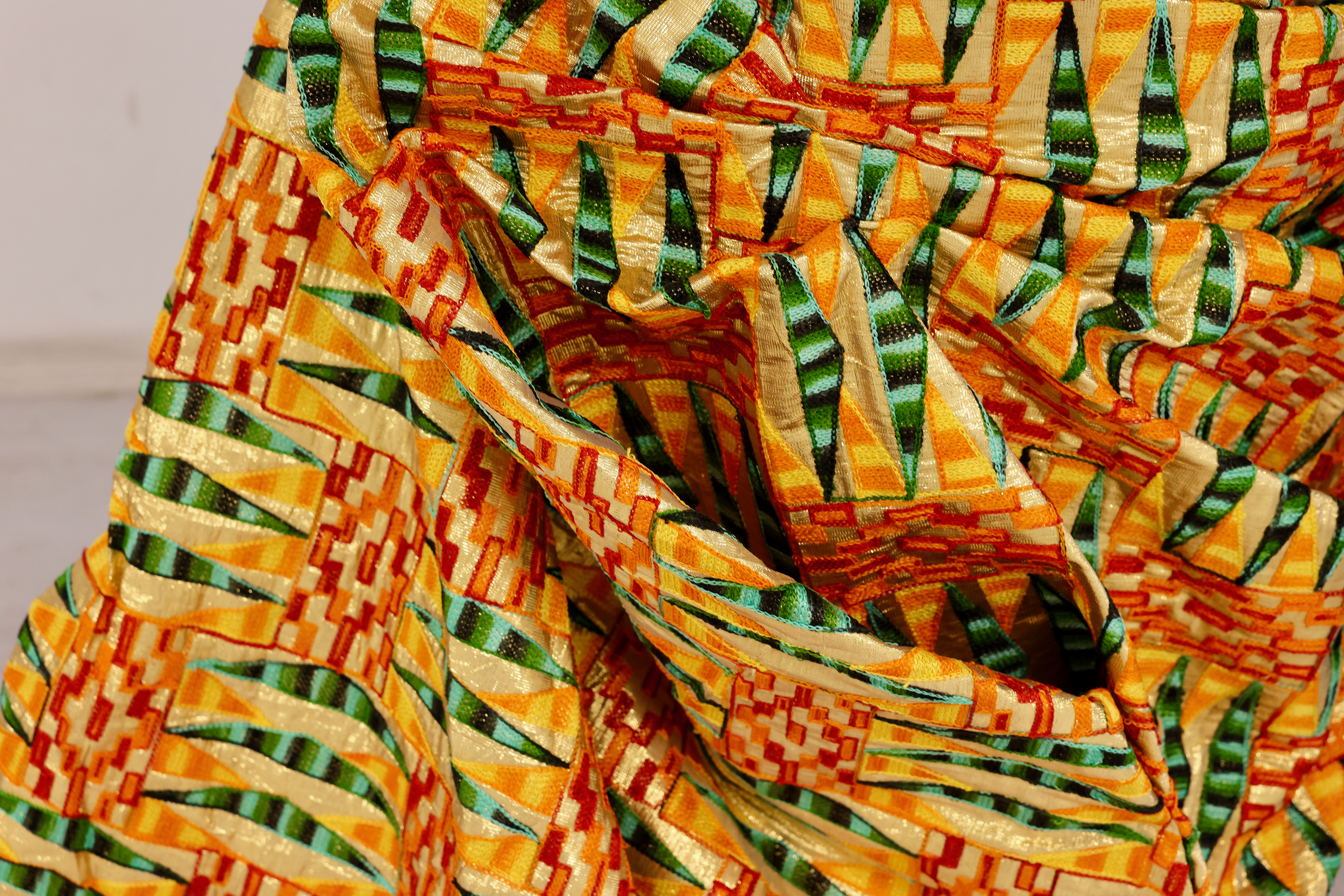
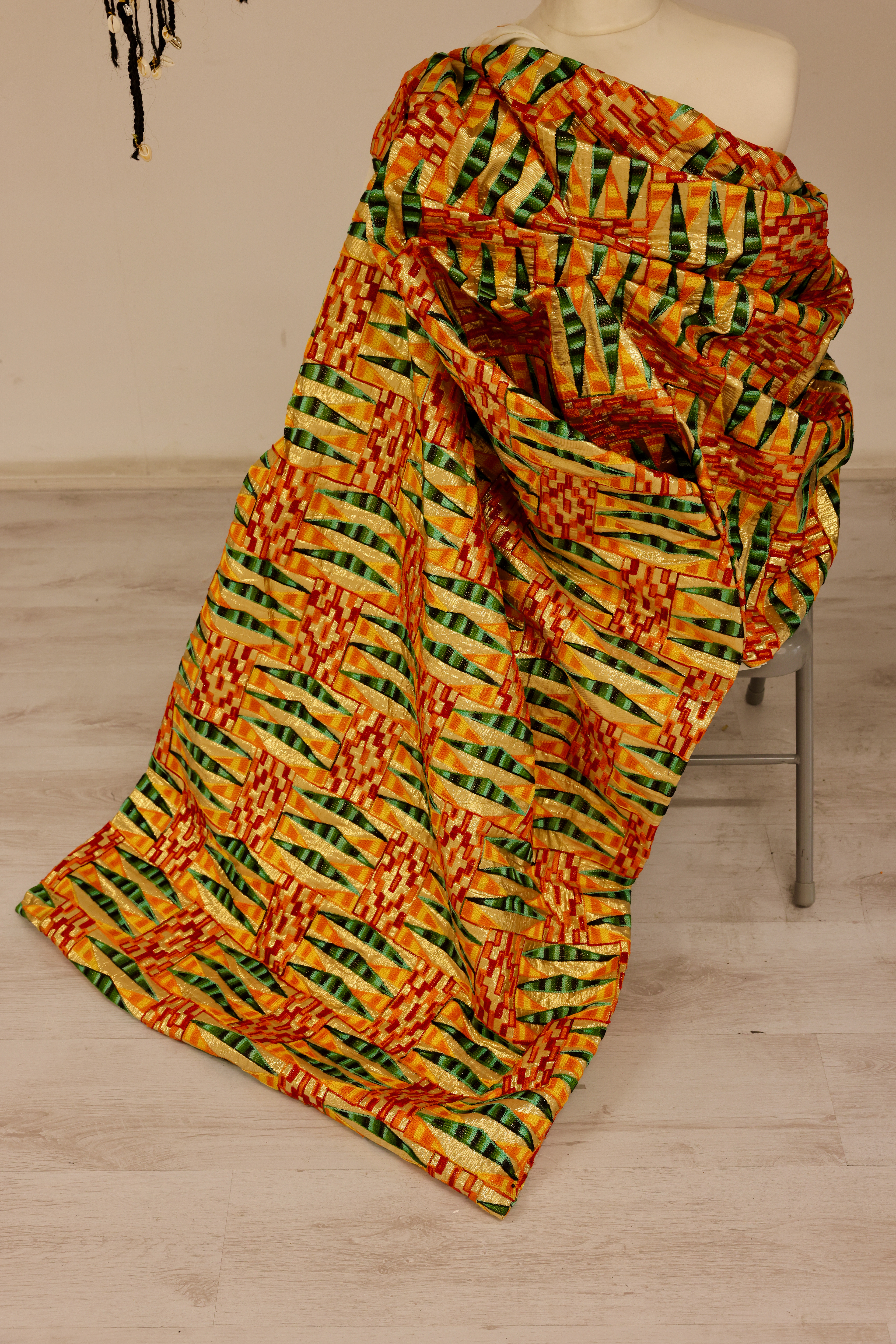
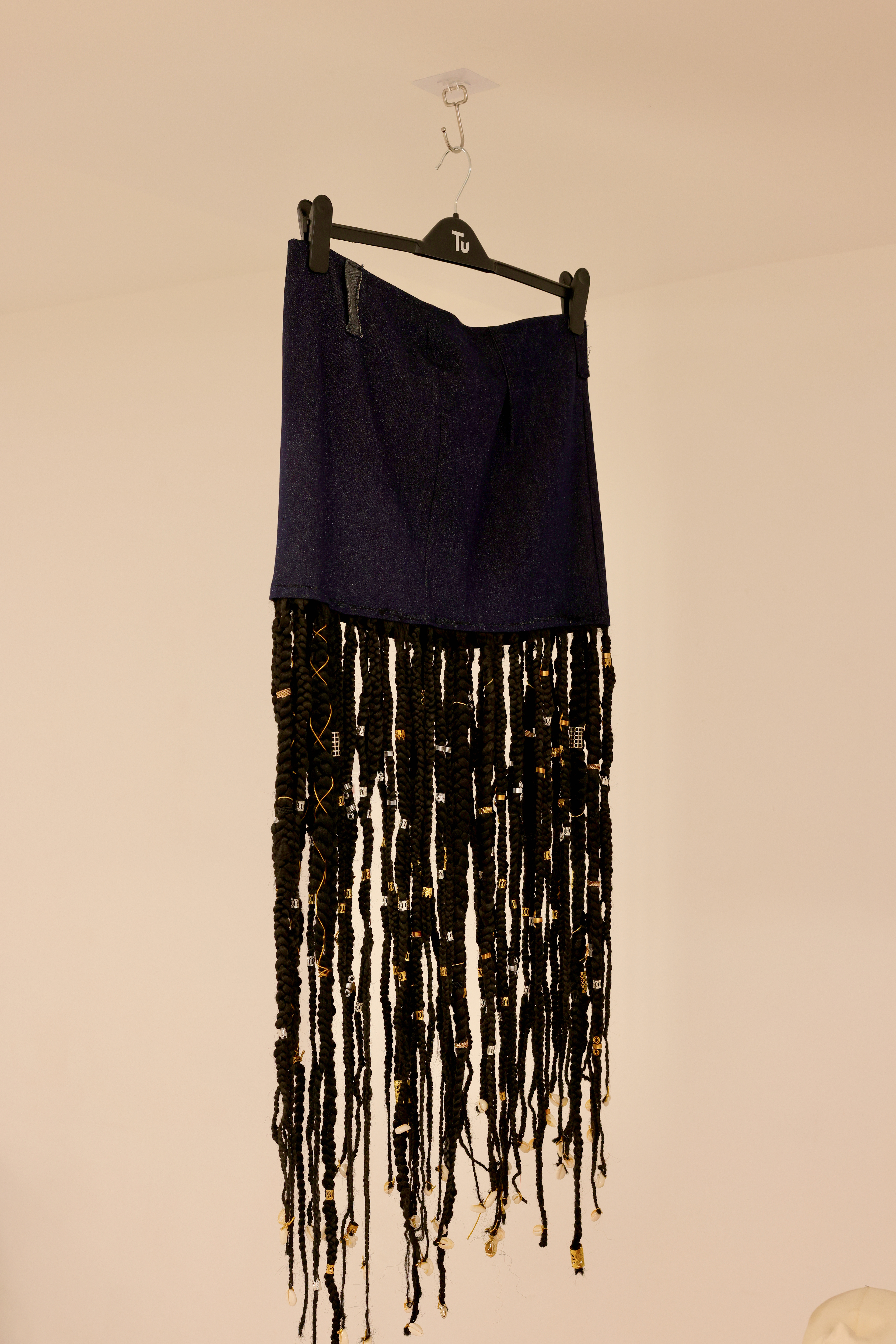
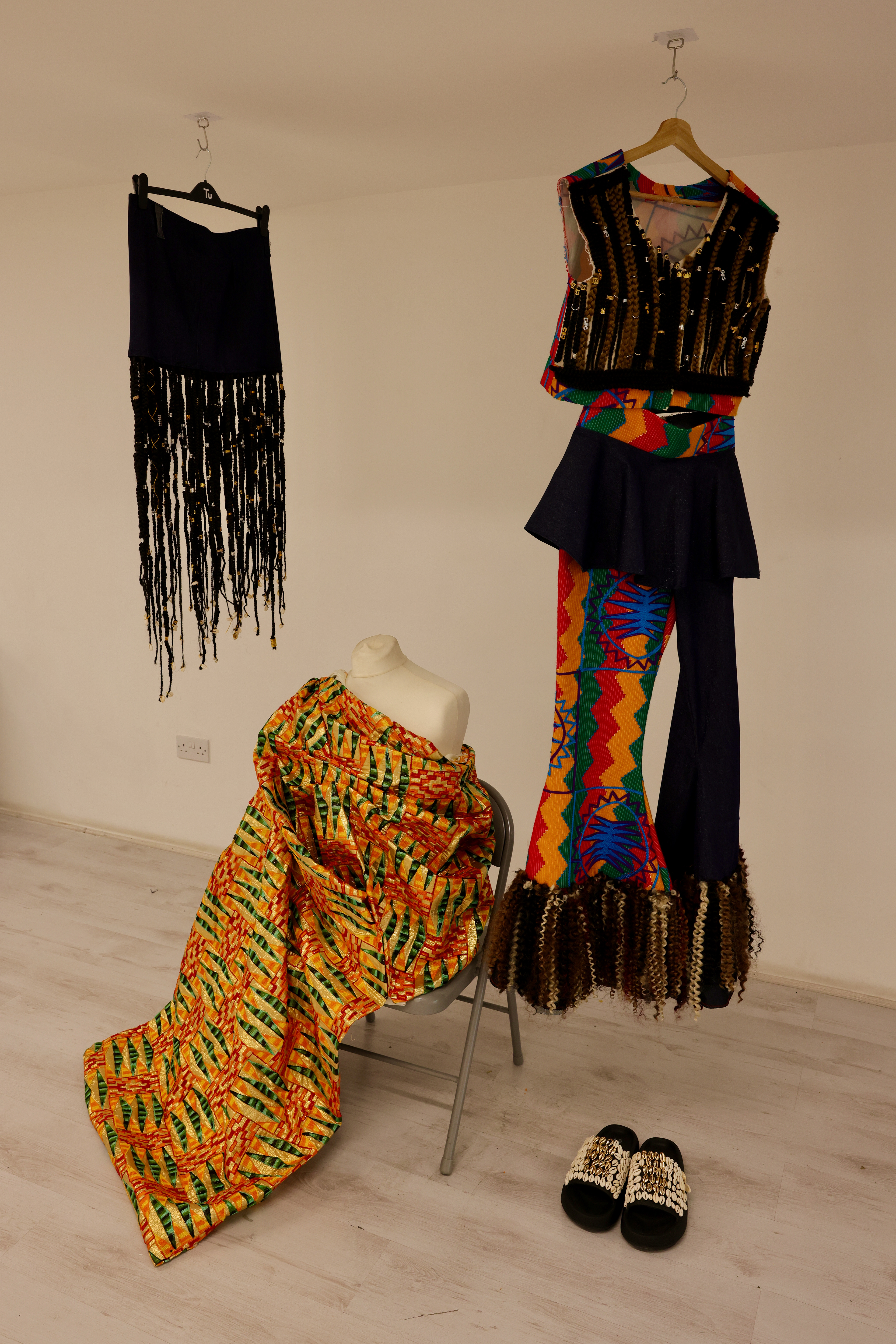
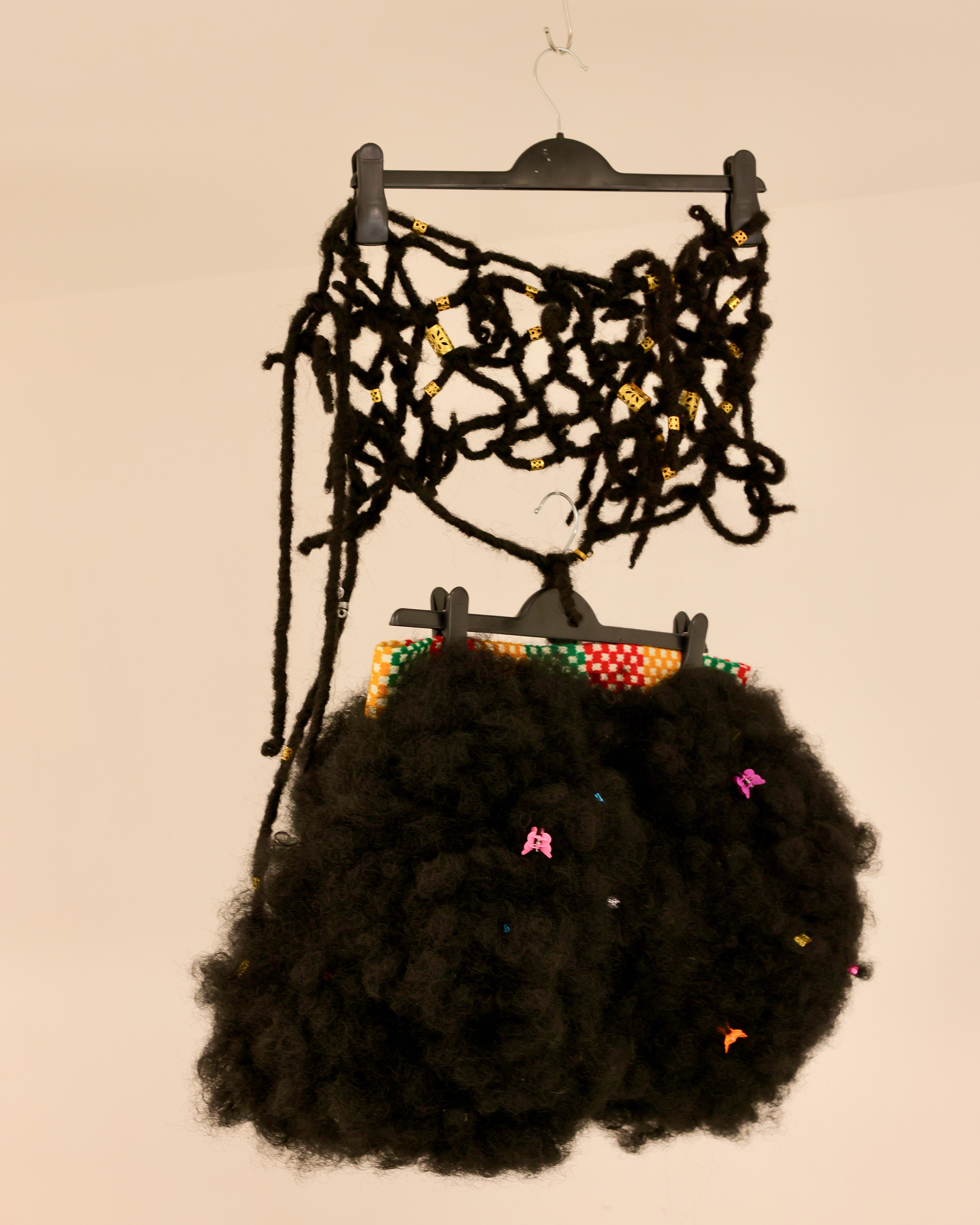
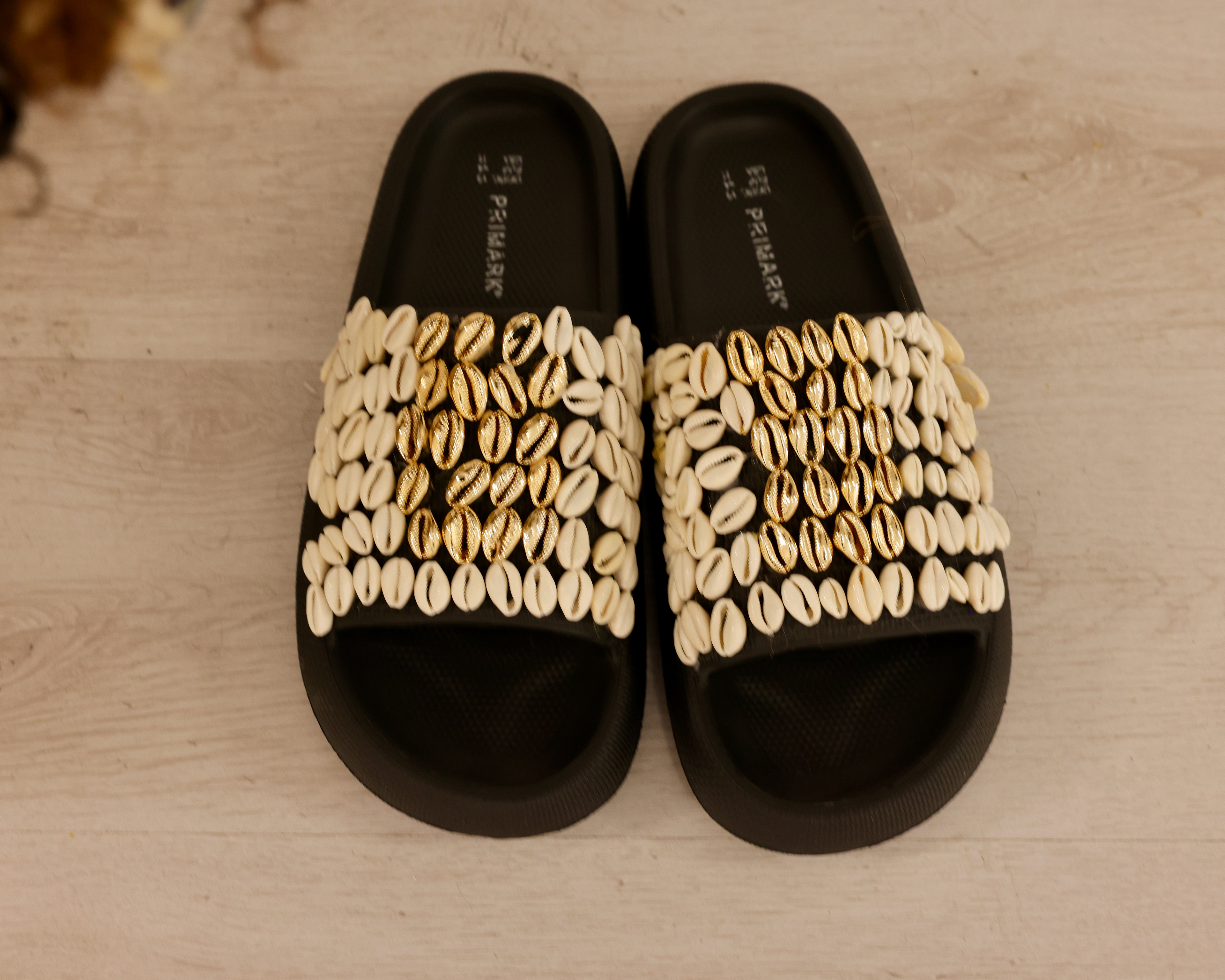
Doobee
I think i like you
from the ashes
I think i like you
from the ashes
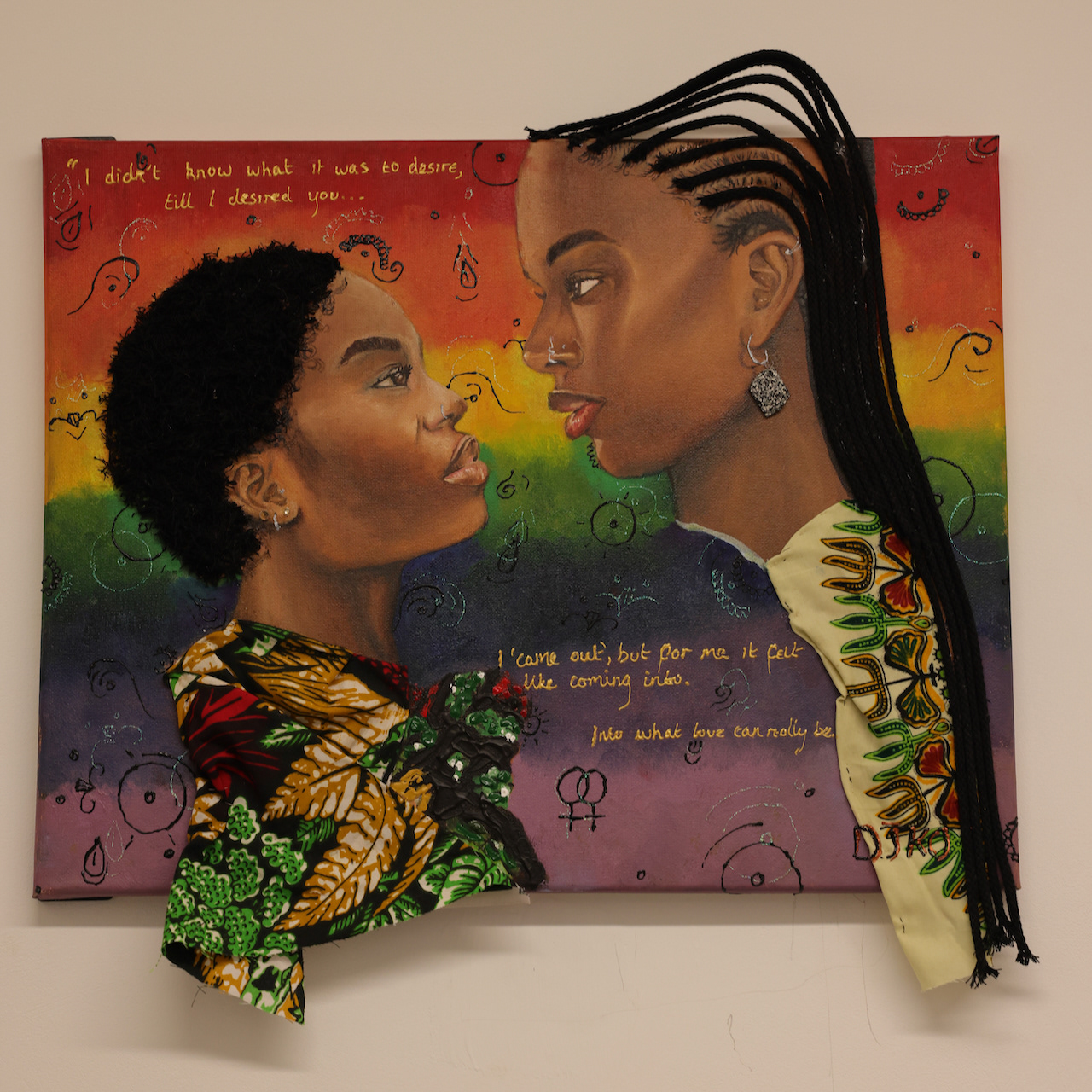
DOOBEE Title: I think I like you I think I like you, is how I feel coming out, a level of intimacy I struggled to feel with men, I finally began to feel with women. Queer authors painted a beautiful picture in my mind of this love which is why I created this piece, especially for this exhibition to depict this representation. 2022
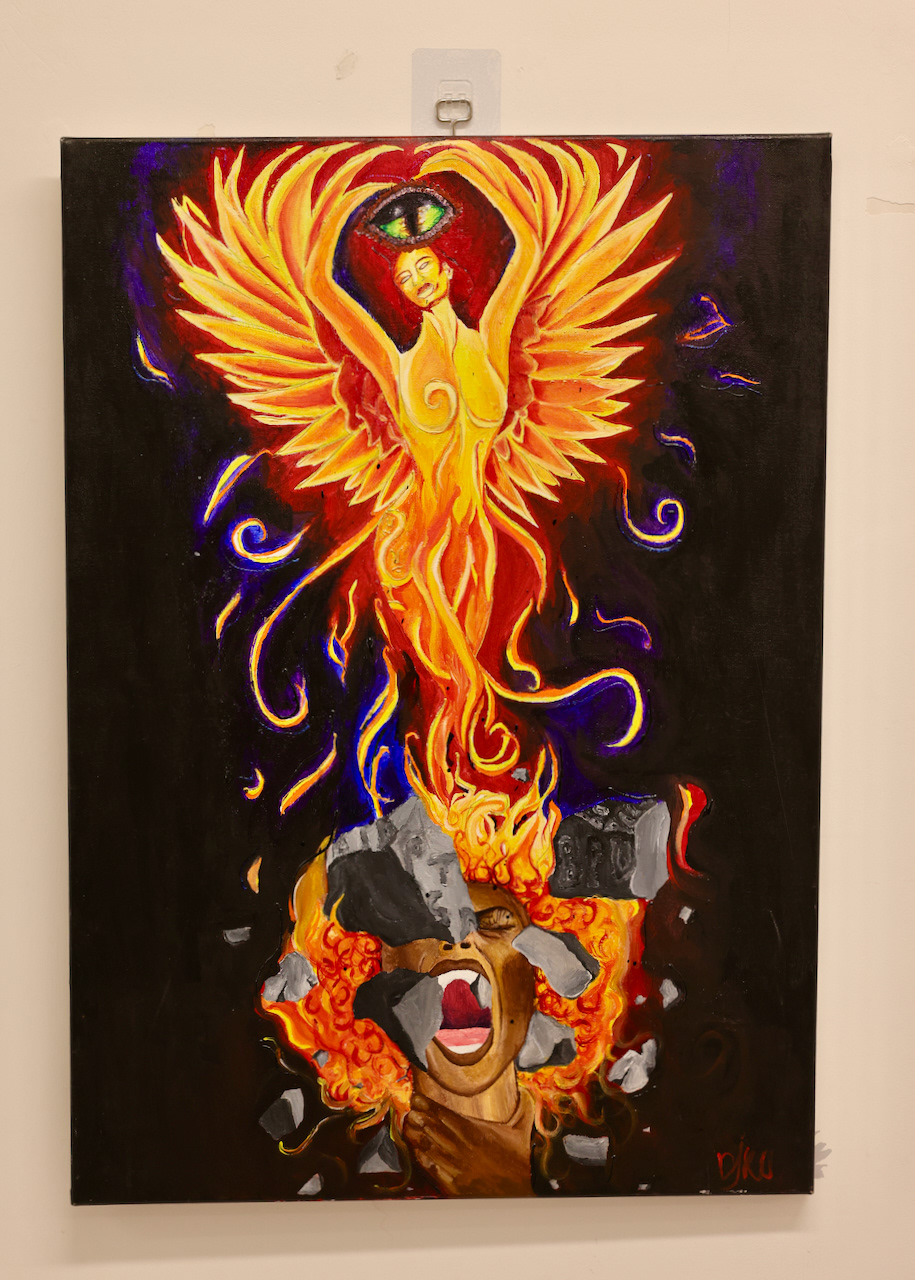
DOOBEE Titel: From the Ashes From the Ashes was Doobe way of expressing frustration when she fell at the mercy of health and trying to work through her struggles and fears. She had a dream that, she was breaking through MH diagnosis and they were on slabs of rock and the all-seeing eye was the eye of a dragon and the phoenix for me and screaming was a way to bring these two ideas together. Acrylic painting, 2021
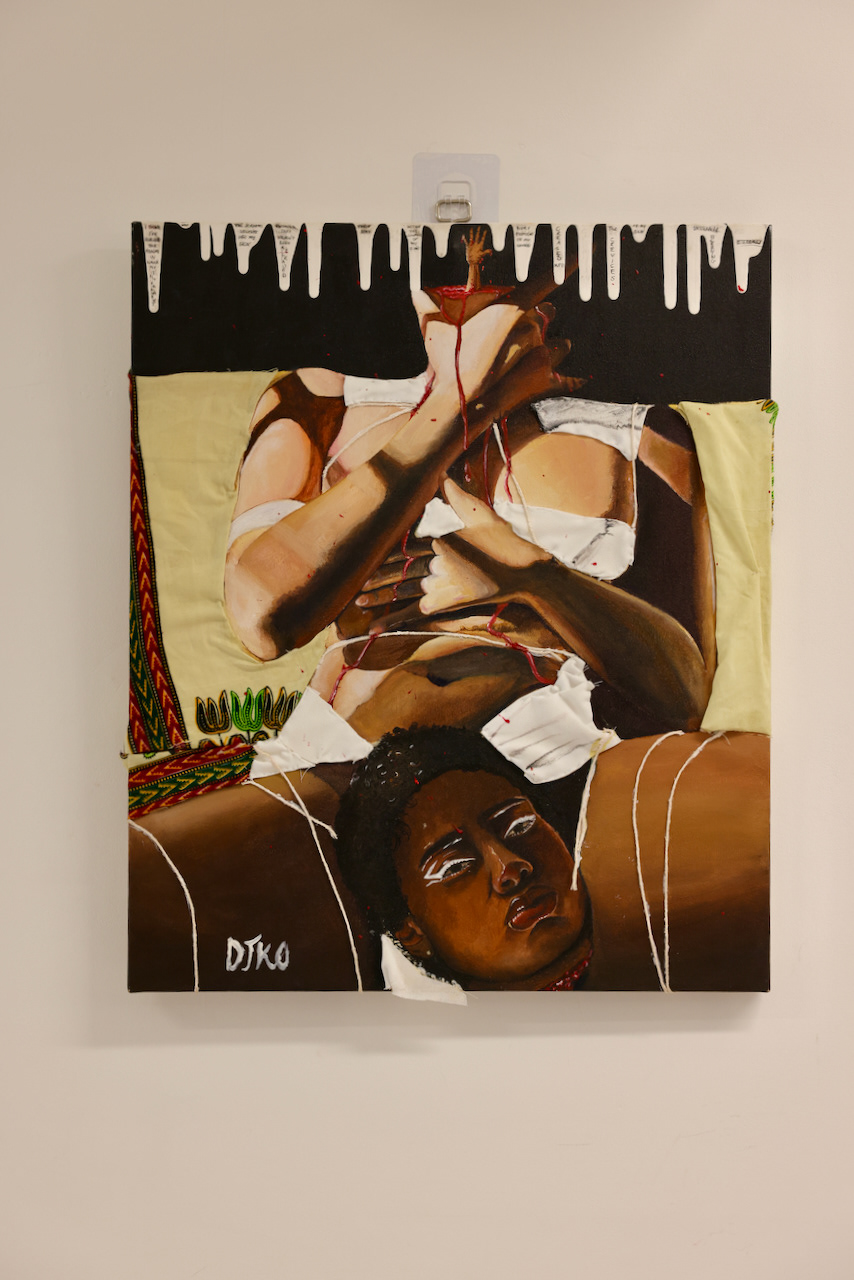
RAISING A NATION
X
LEEJAH MCARTHY
X
LEEJAH MCARTHY
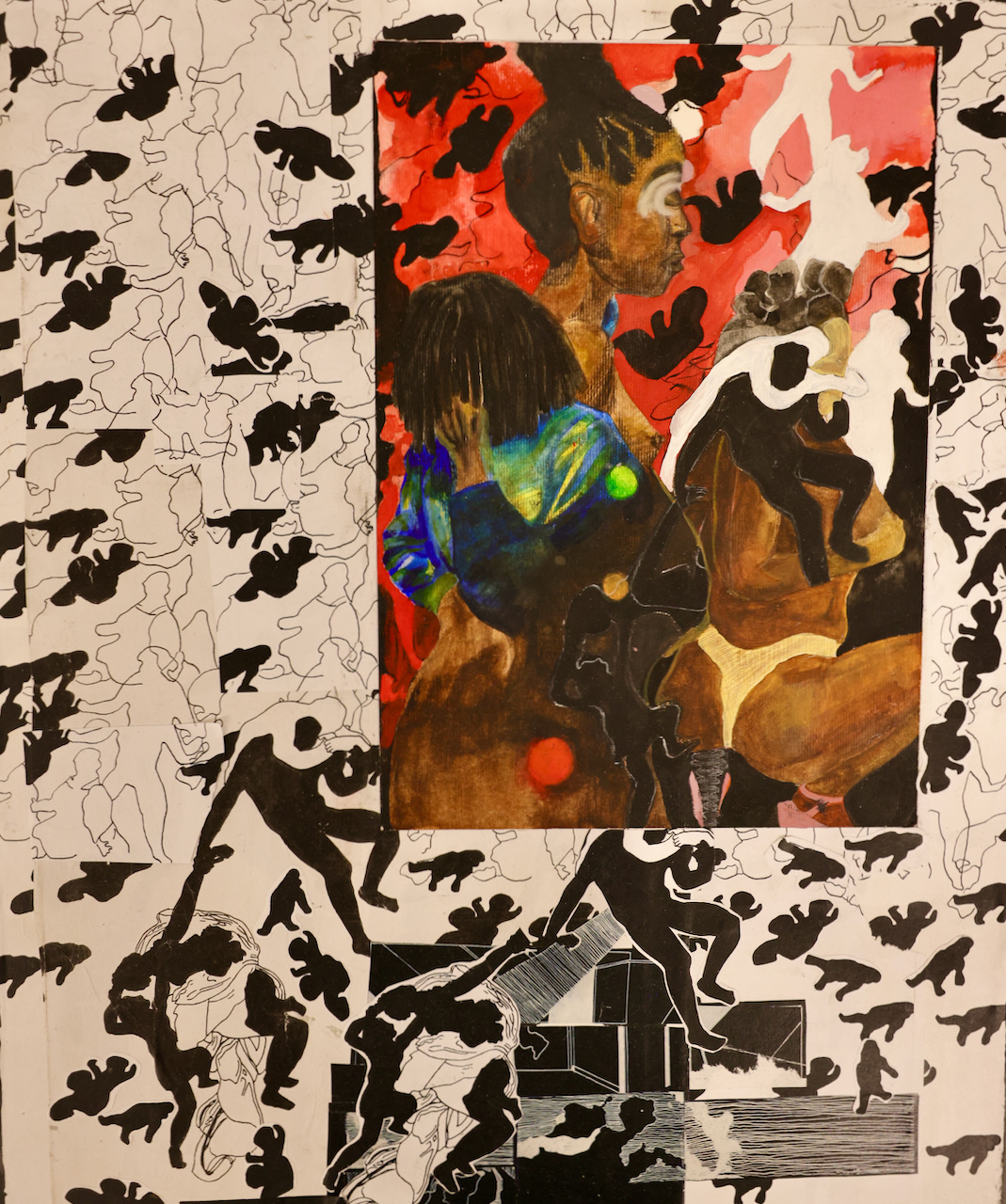
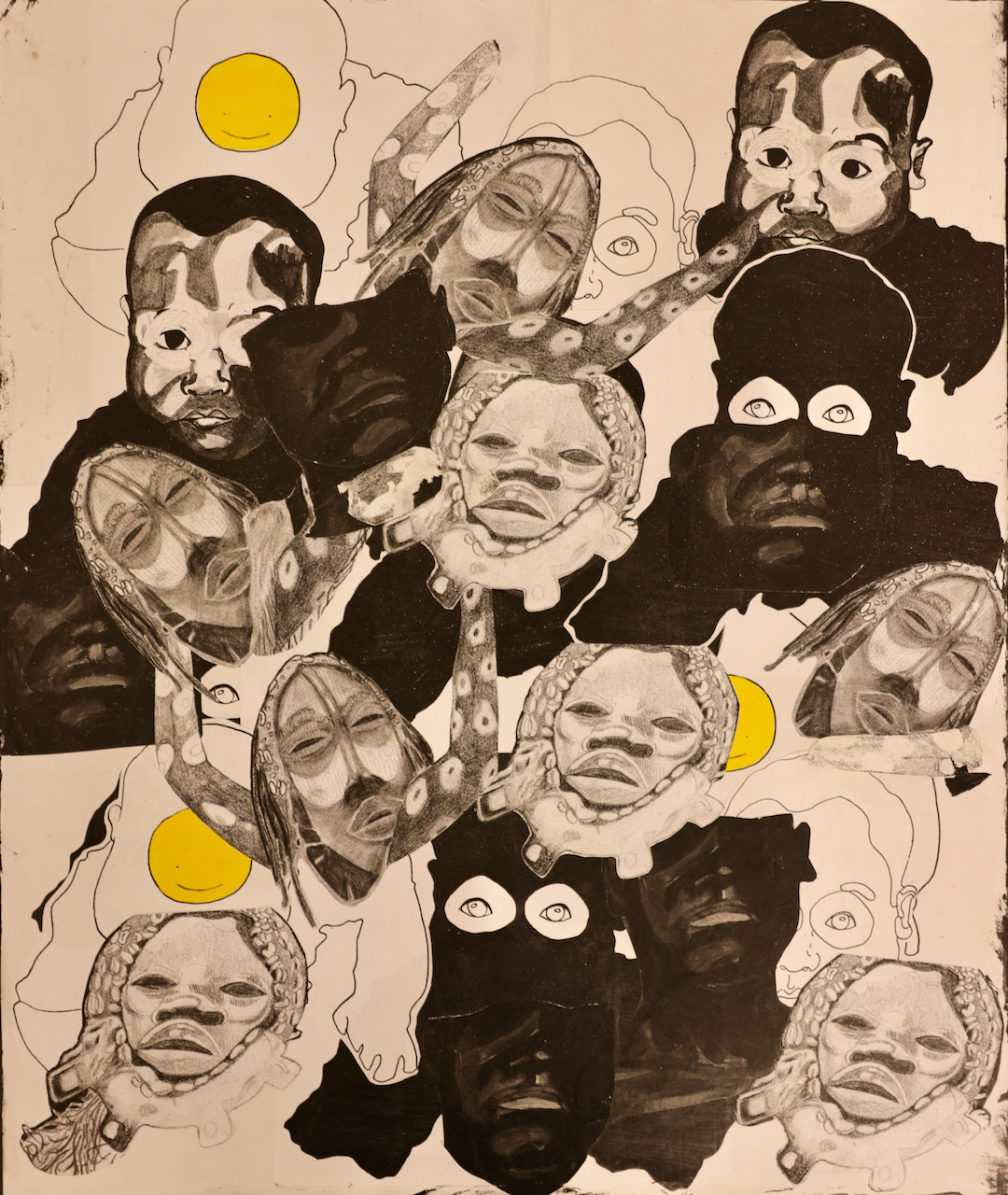
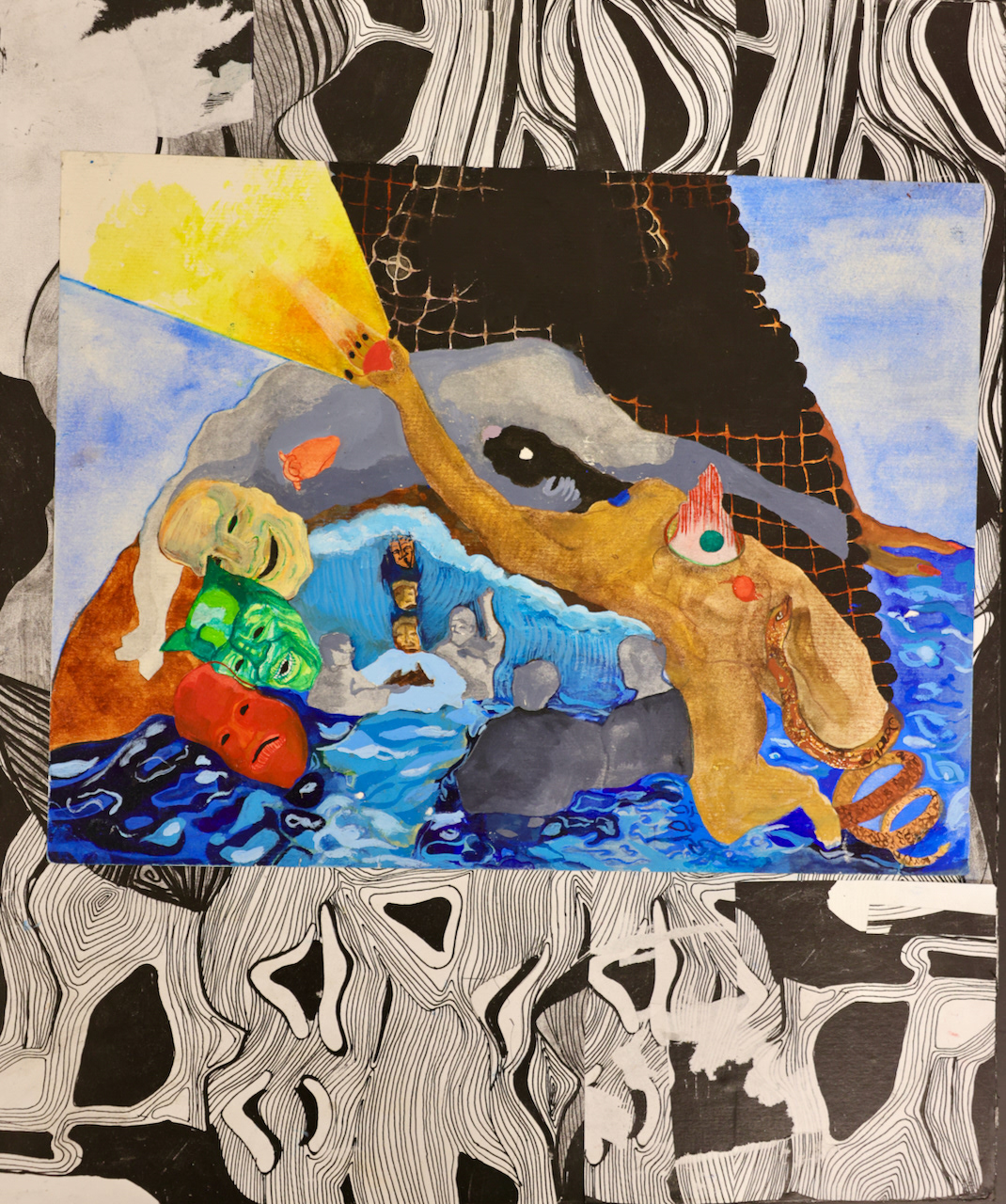
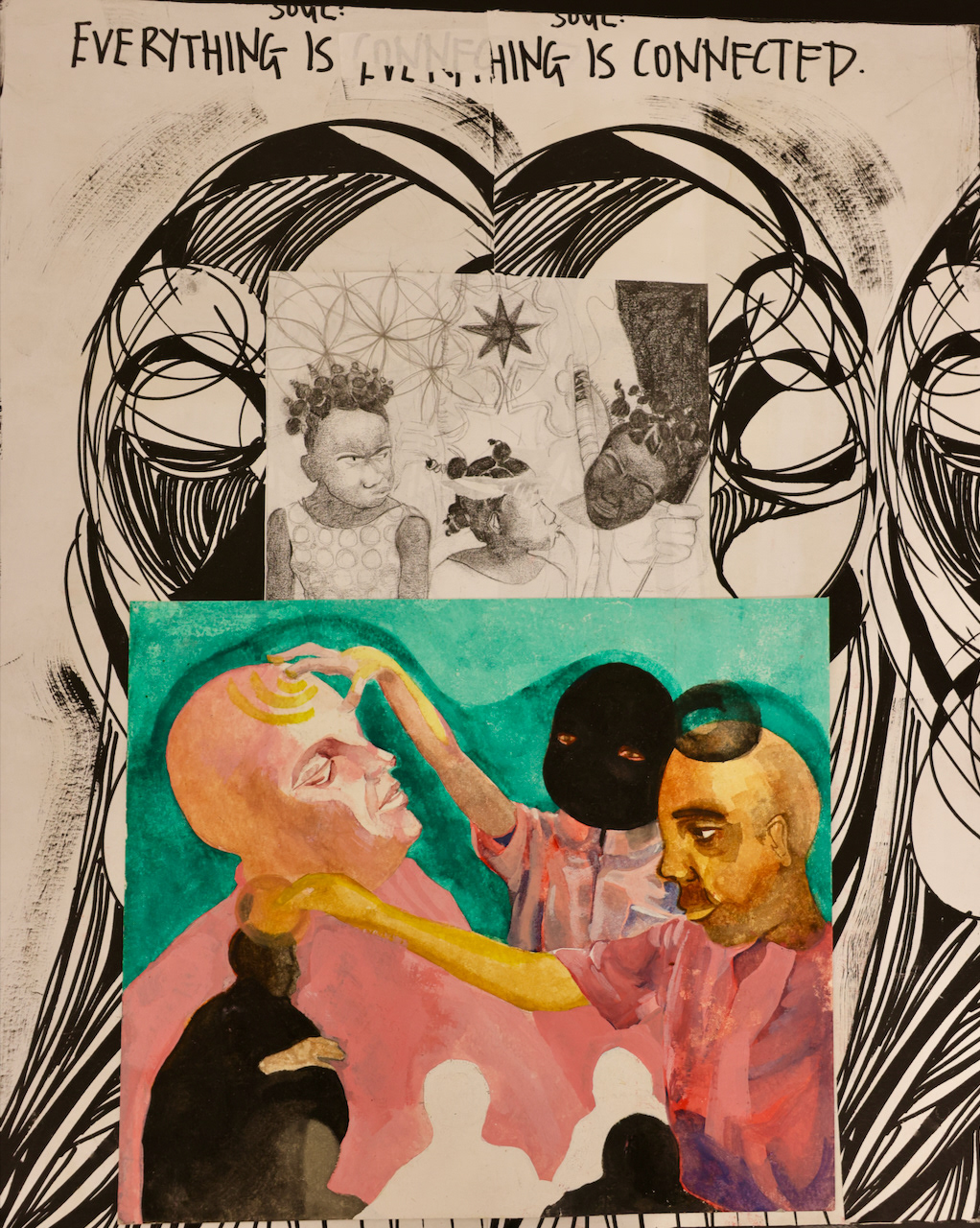

Leejah McCarthy Title: 1. Generational curses 2. Femininity 3. Masculinity 4. Raising the future Leejah McCarthy, is a collagist, born and raised in South London. Her body of work has been inspired by street art and flyposting. She uses collage and storytelling in her practice to move through complex subject matters like identity, conflict and spirituality. Her paintings and drawings are layered, manipulated and repeated. With interest in how the brain stores information by rearranging the connections, or synapses, between neurons. She uses her process to mirror this notion and access a meditative state for self exploration and reflection. Paper fineliner acrylic and watercolour on wood, 2022

Slide show set-up & opening

Photographer: Arnelle Thompson

Photographer: Arnelle Thompson

Photographer: Arnelle Thompson

Photographer: Arnelle Thompson

Photographer: Arnelle Thompson

Photographer: Arnelle Thompson
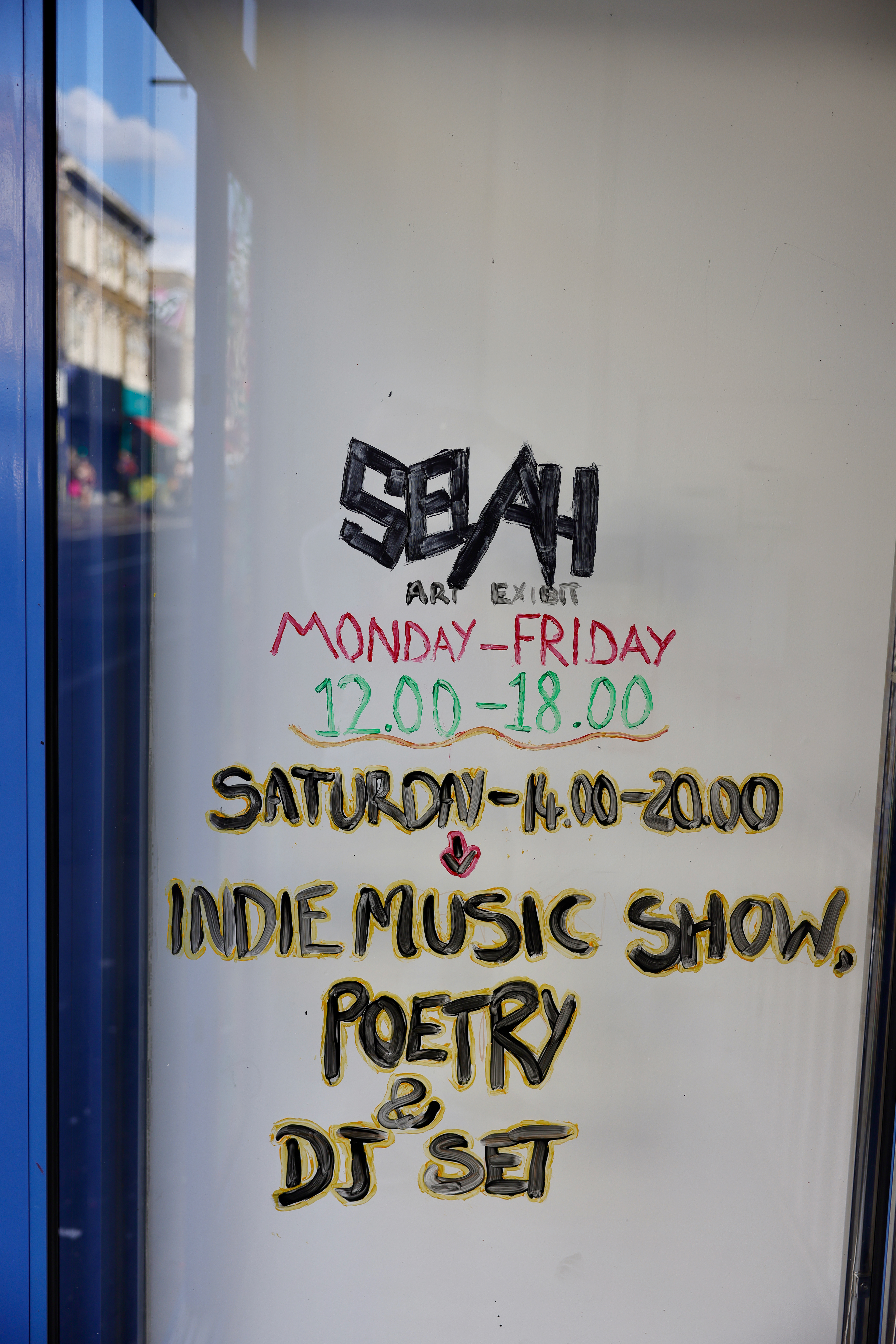
John

John

John
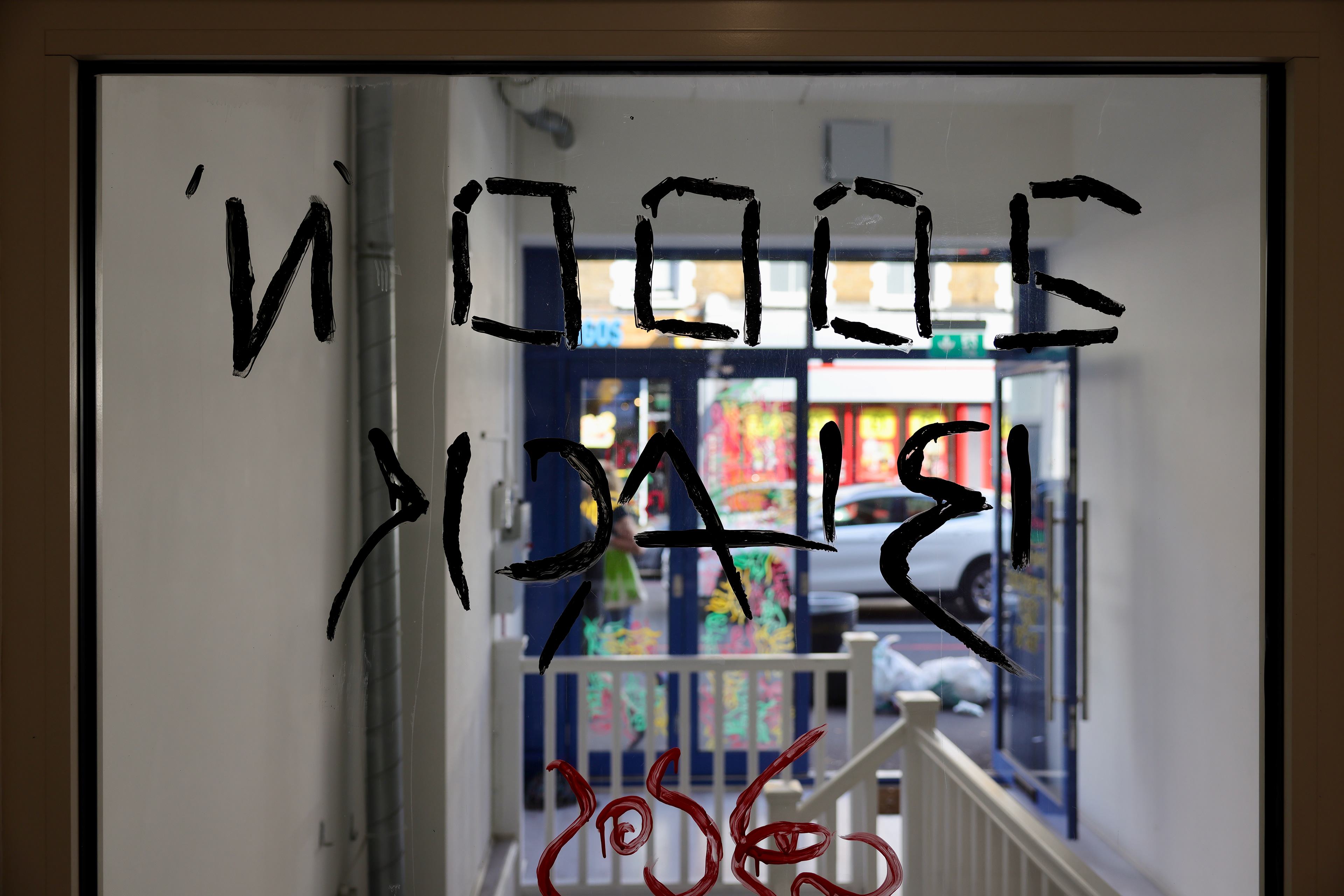
John

Photographer: Arnelle Thompson

Photographer: Arnelle Thompson
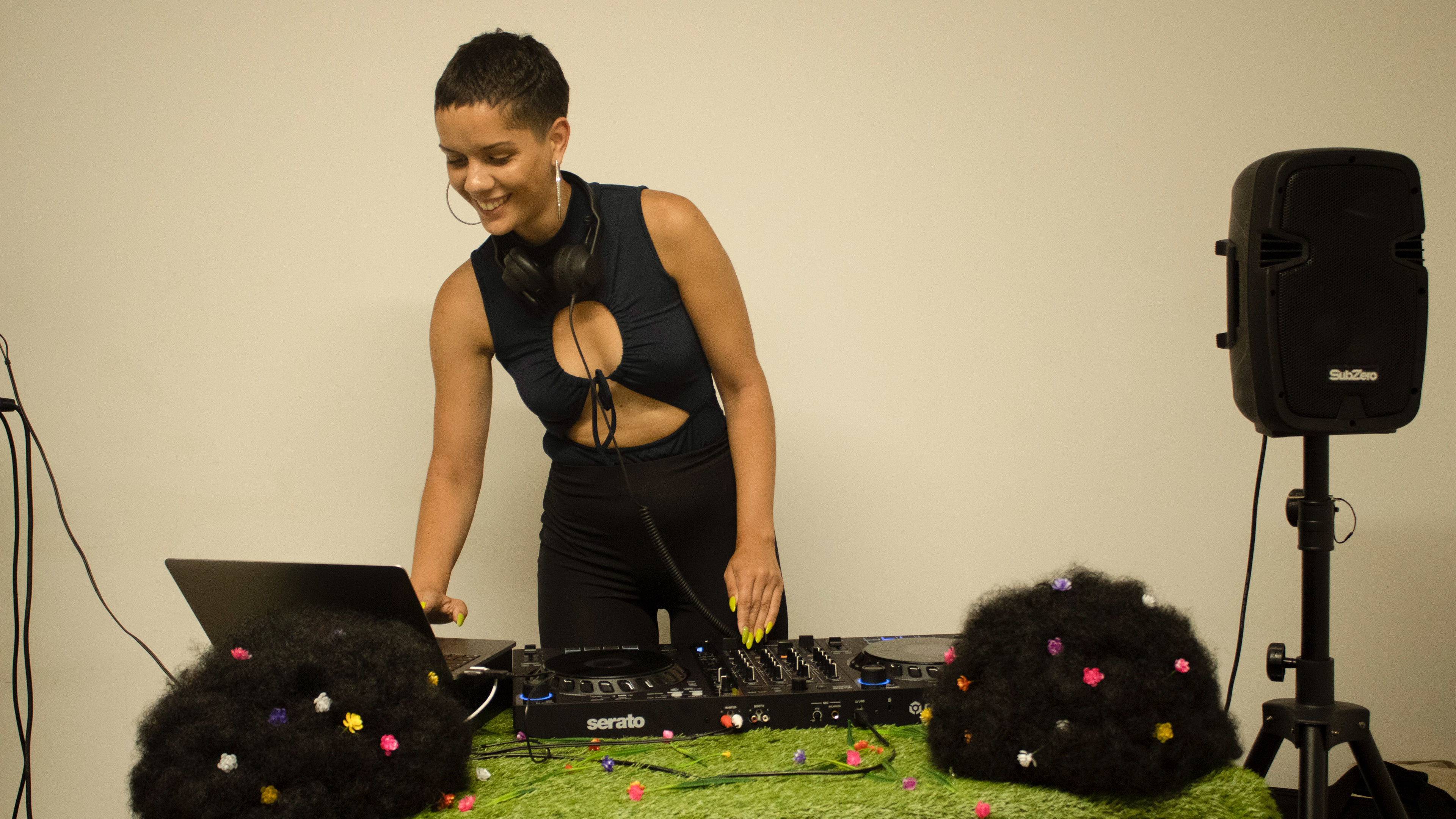
Photographer: Arnelle Thompson

Photographer: Arnelle Thompson

Photographer: Arnelle Thompson

Photographer: Arnelle Thompson

Photographer: Arnelle Thompson

Photographer: Arnelle Thompson

Photographer: Arnelle Thompson

Photographer: Arnelle Thompson

Photographer: Arnelle Thompson

Photographer: Arnelle Thompson

Photographer: Arnelle Thompson

Photographer: Arnelle Thompson

Photographer: Arnelle Thompson

Photographer: Arnelle Thompson

Photographer: Arnelle Thompson

Photographer: Arnelle Thompson

Photographer: Arnelle Thompson

Photographer: Arnelle Thompson

Photographer: Arnelle Thompson

Photographer: Arnelle Thompson

Photographer: Arnelle Thompson

Photographer: Arnelle Thompson

Photographer: Arnelle Thompson

Photographer: Arnelle Thompson

Photographer: Arnelle Thompson

Photographer: Arnelle Thompson

Photographer: Arnelle Thompson

Photographer: Shay Payne

Photographer: Shay Payne

Photographer: Shay Payne

Photographer: Shay Payne

Photographer: Shay Payne

Photographer: Shay Payne

Photographer: Shay Payne

Photographer: Shay Payne

Photographer: Shay Payne

Photographer: Shay Payne

Photographer: Shay Payne

Photographer: Shay Payne

Photographer: Shay Payne
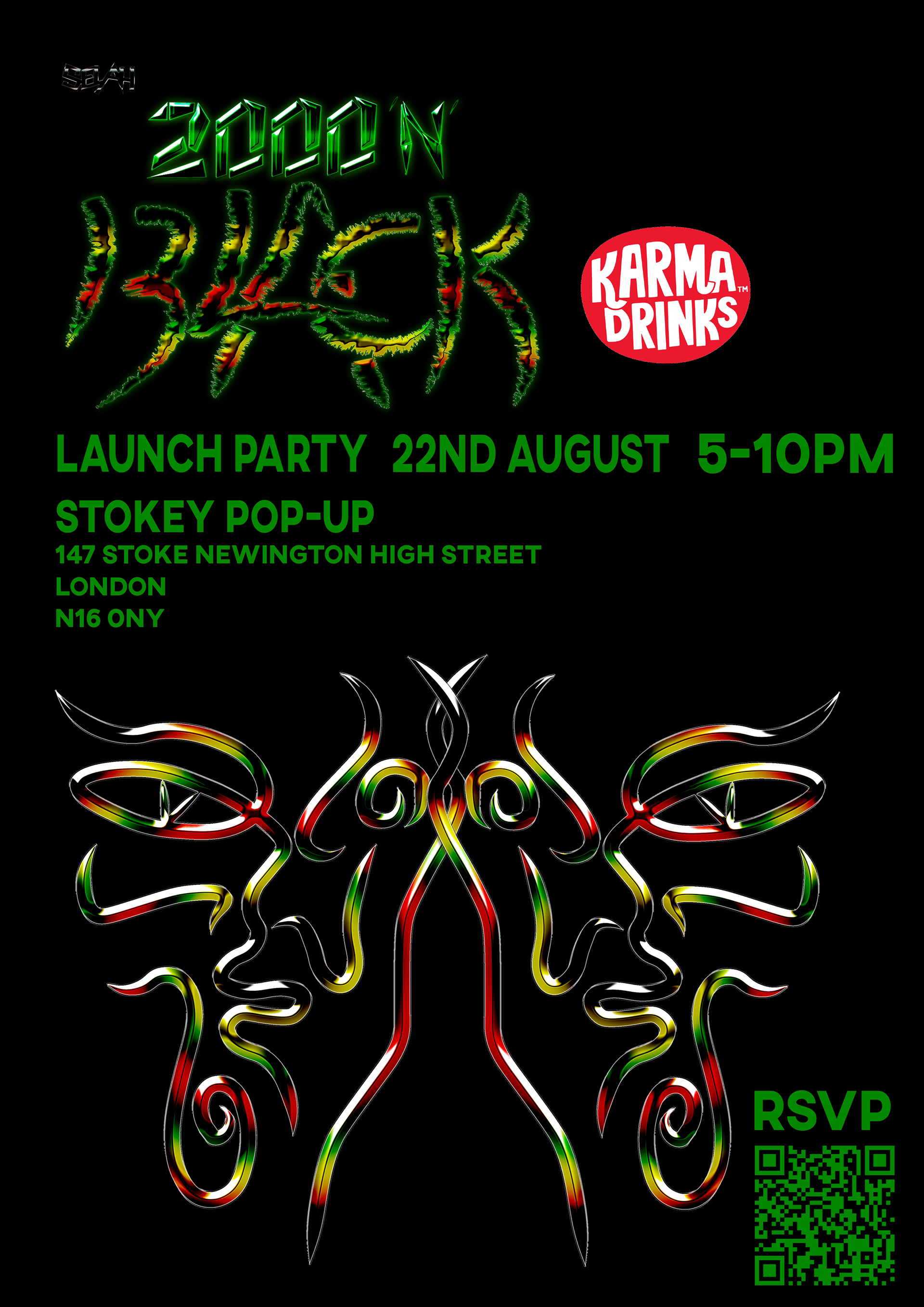
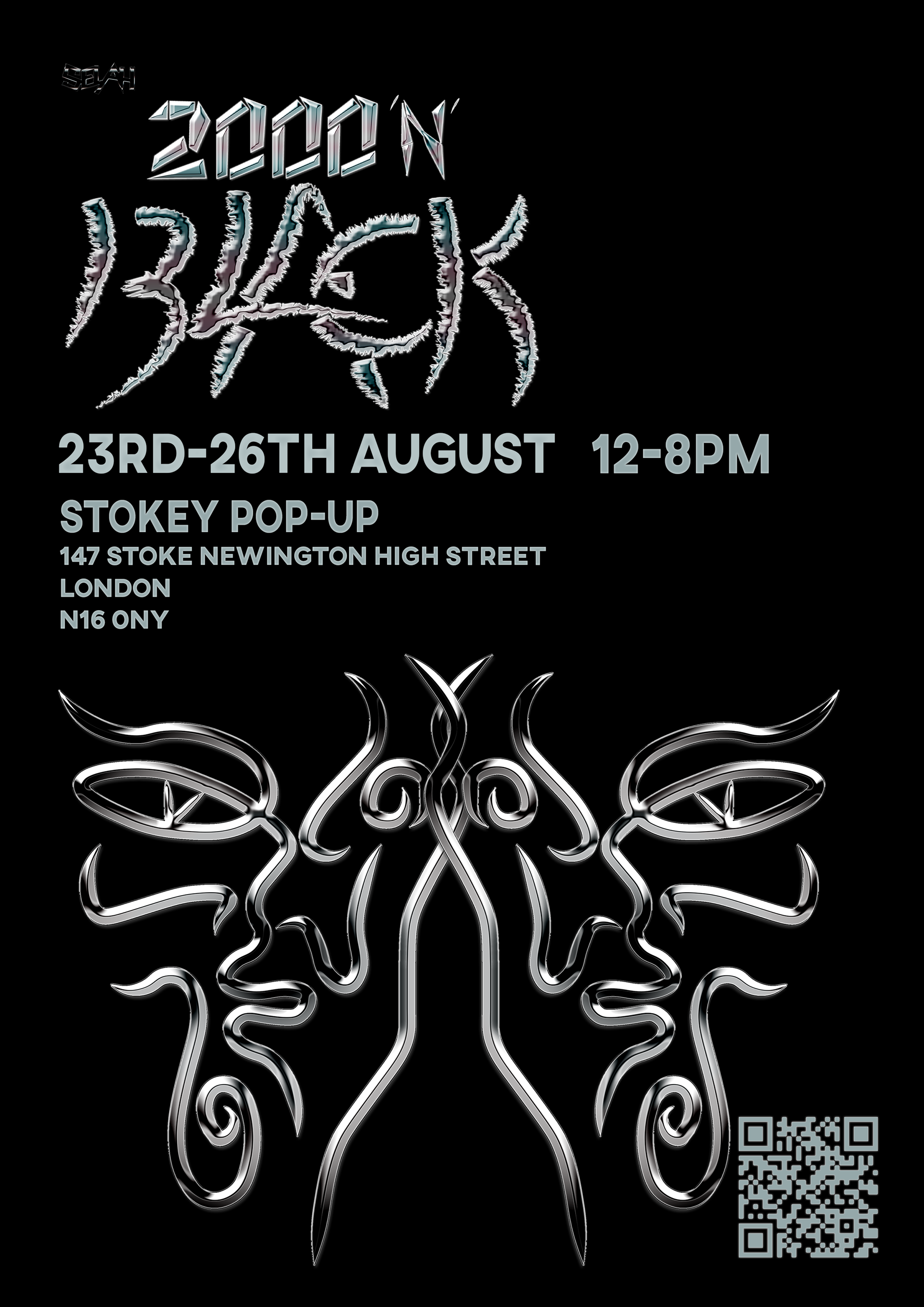
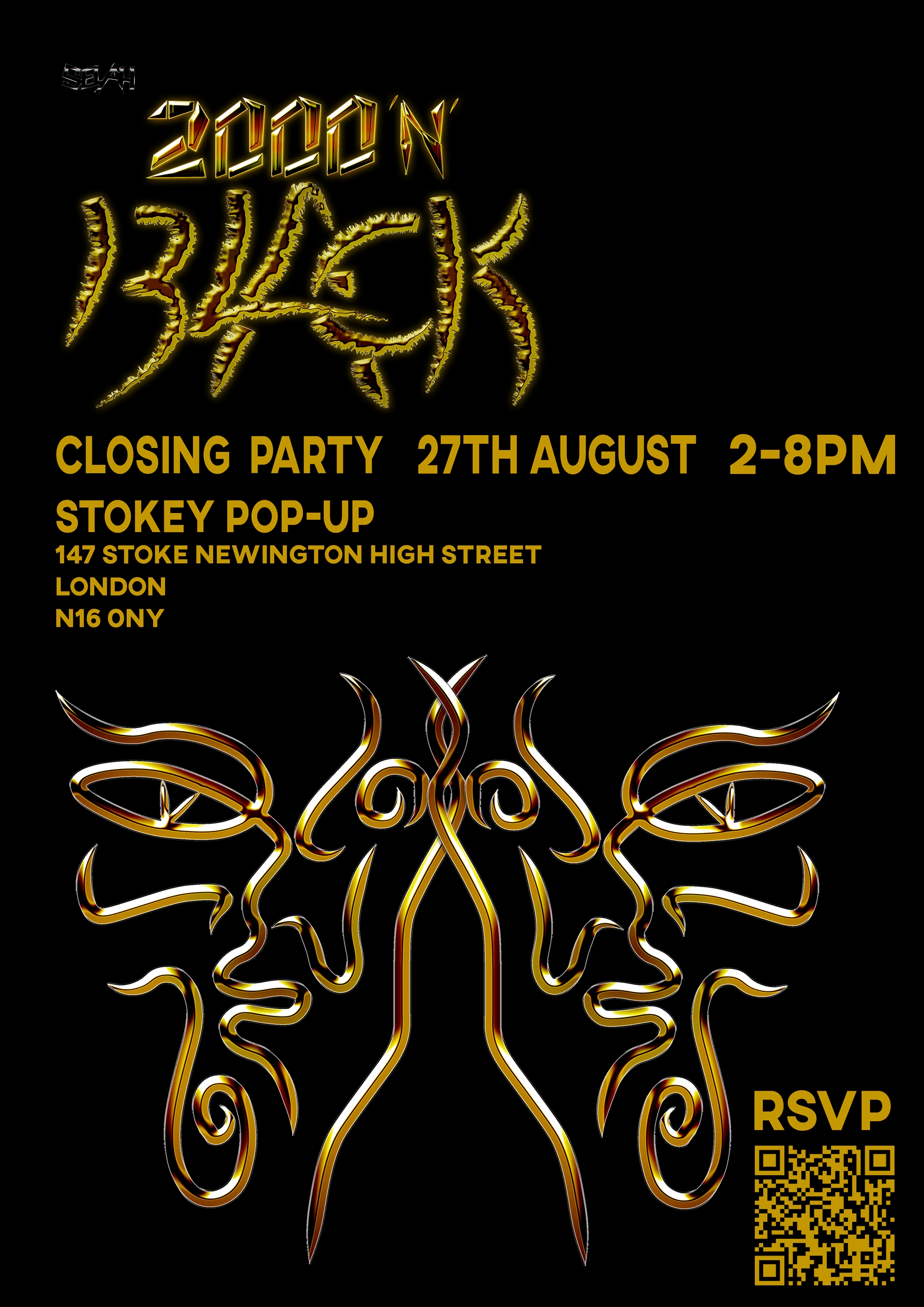
Please feel free to donate, so we can keep creating and sharing our work and expanding the selah network.
Stokey pop-up
147 Stoke Newington High St, London N16 0NY
147 Stoke Newington High St, London N16 0NY
Tickets to the exhibition opening and closing -->
